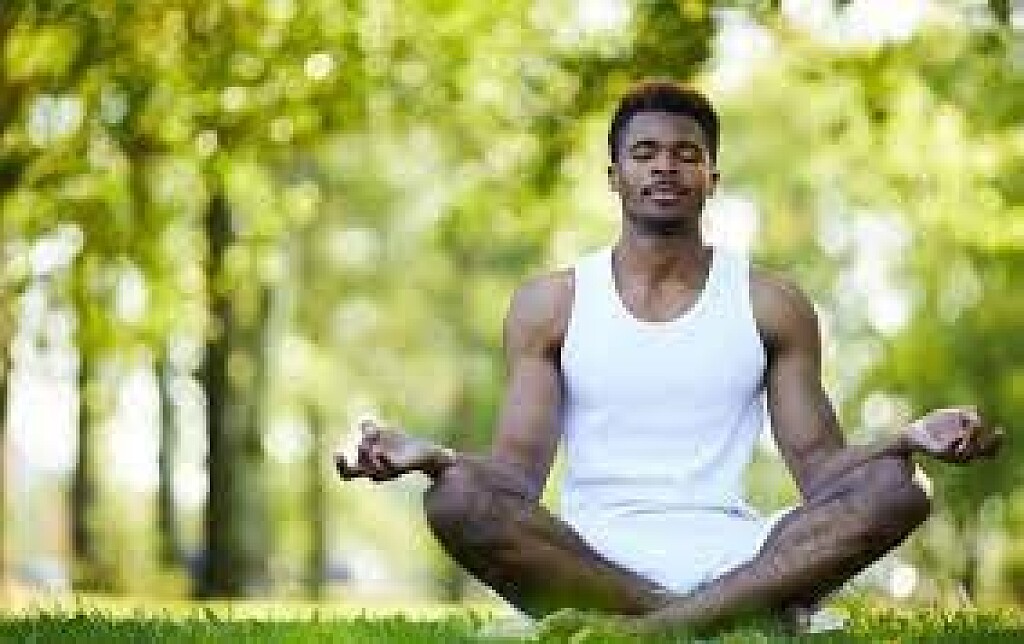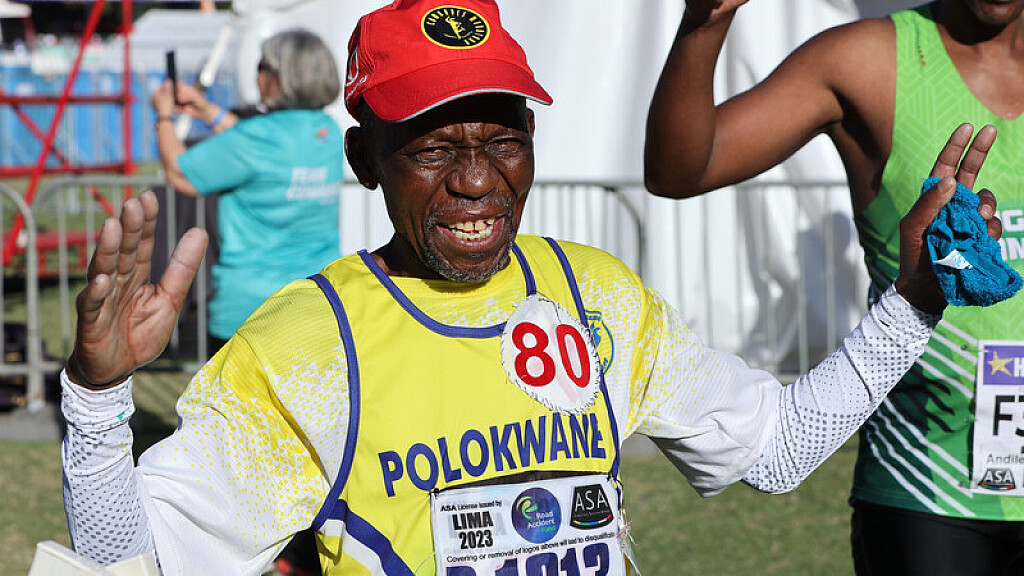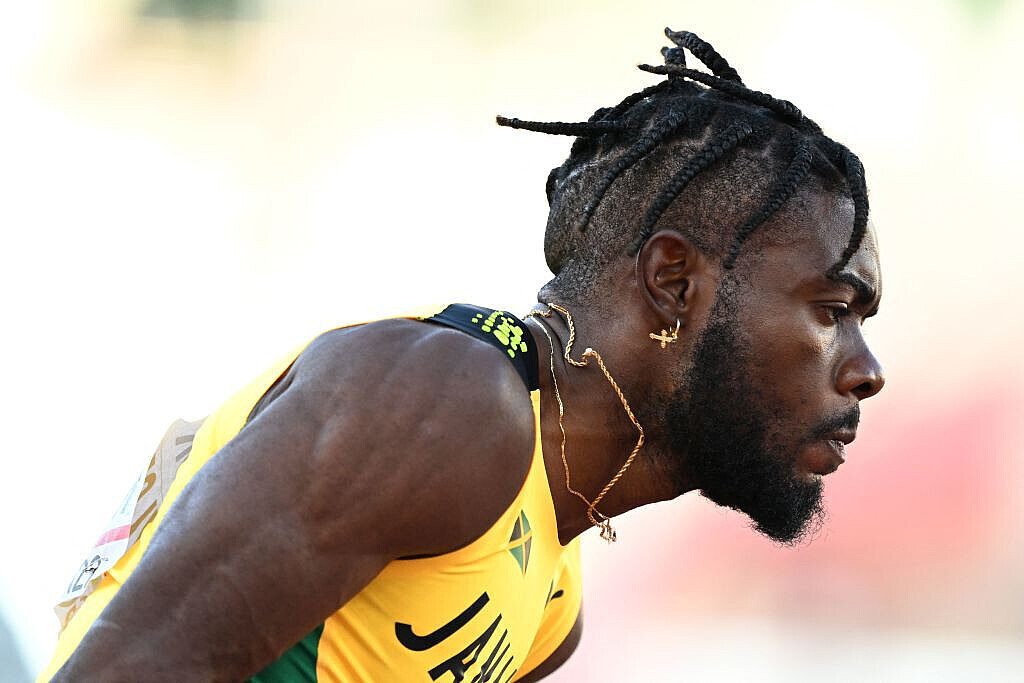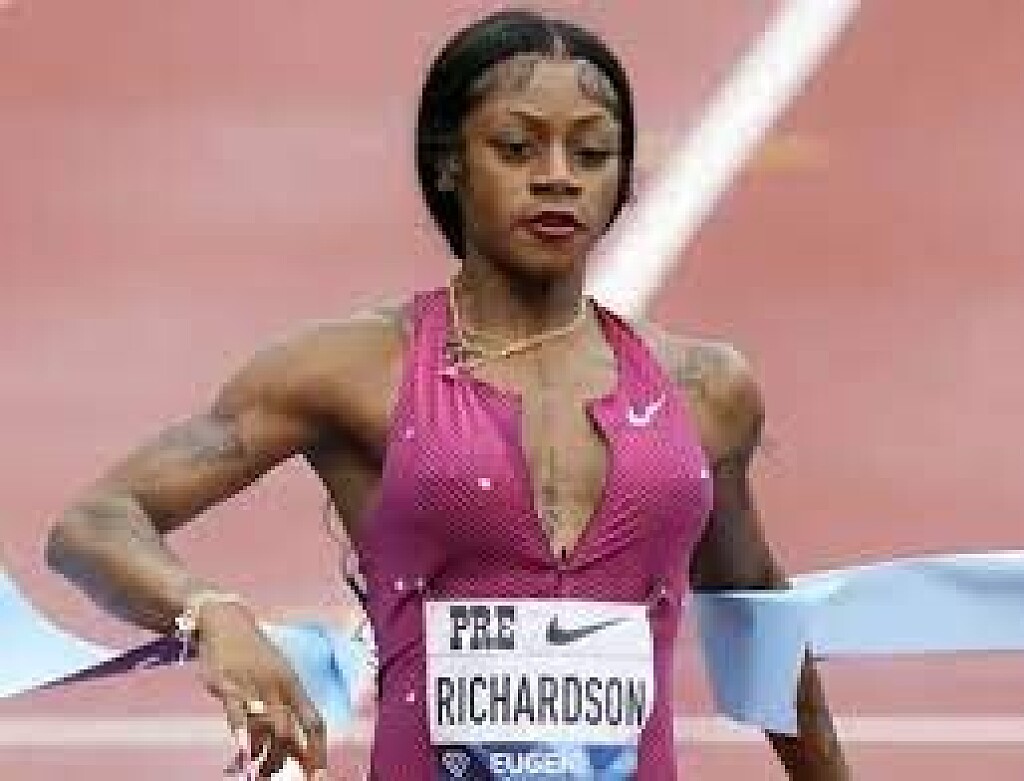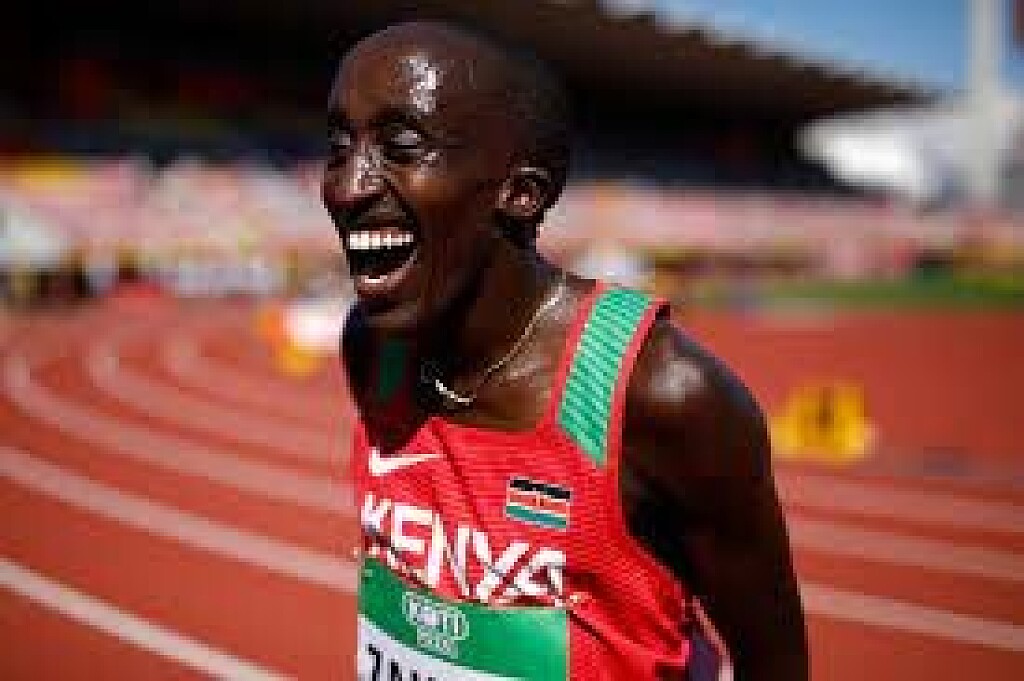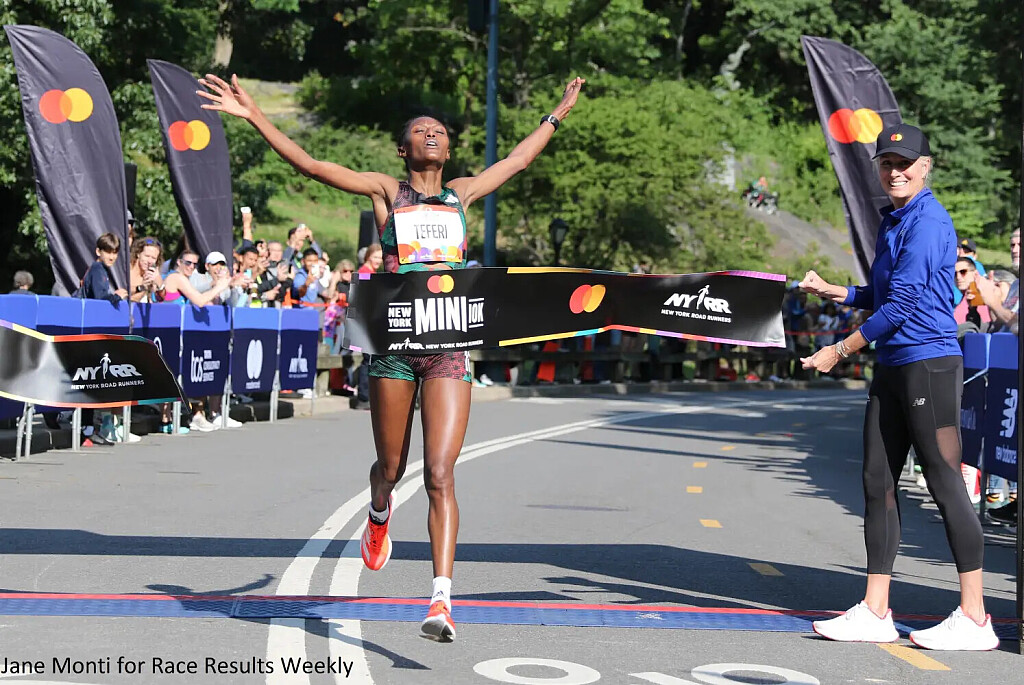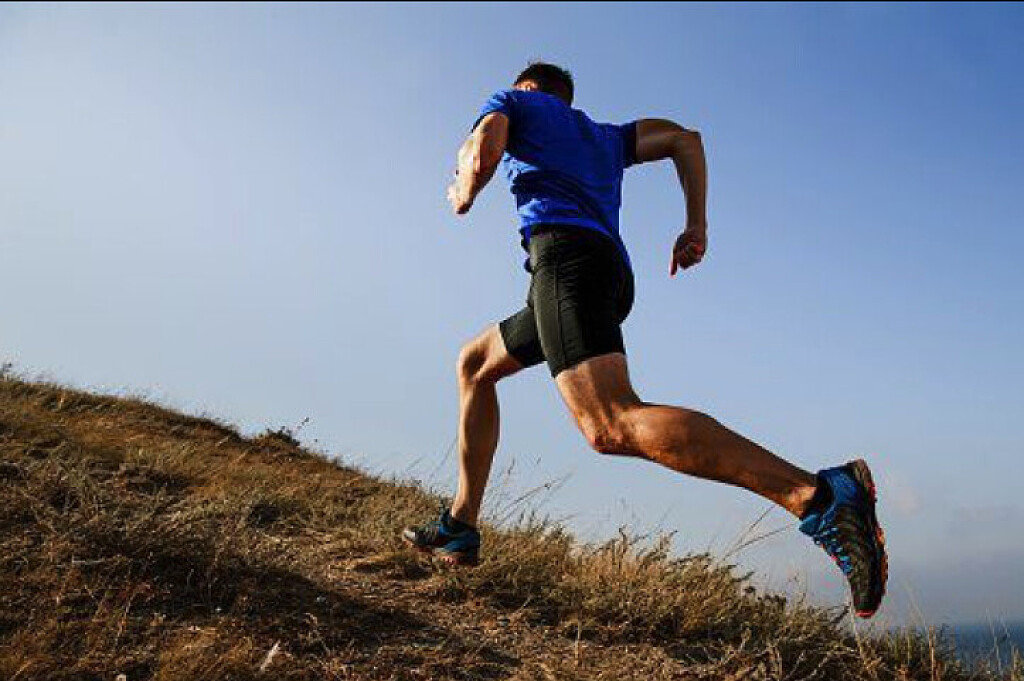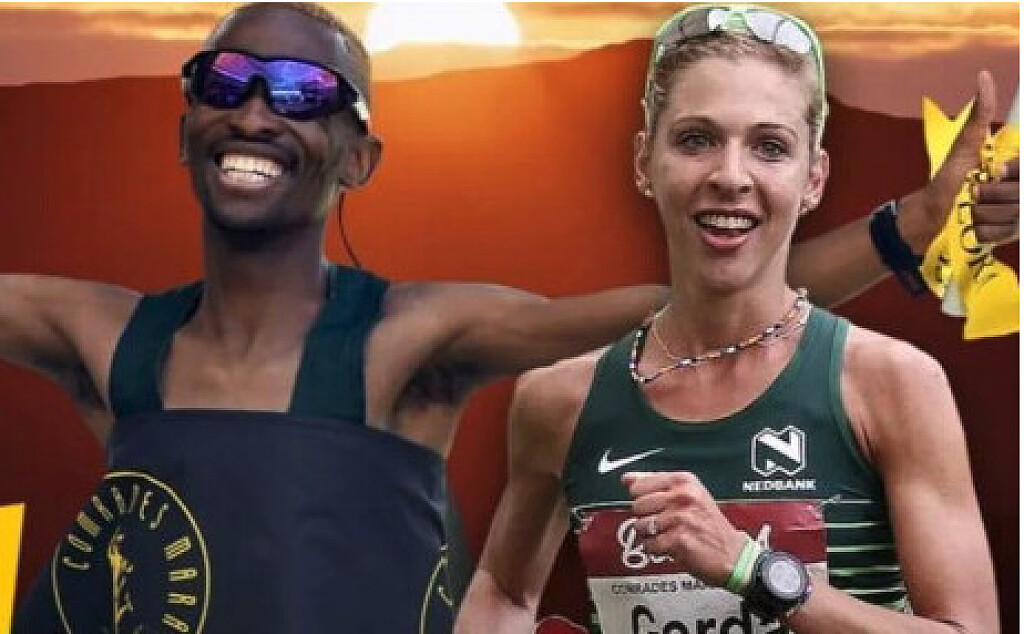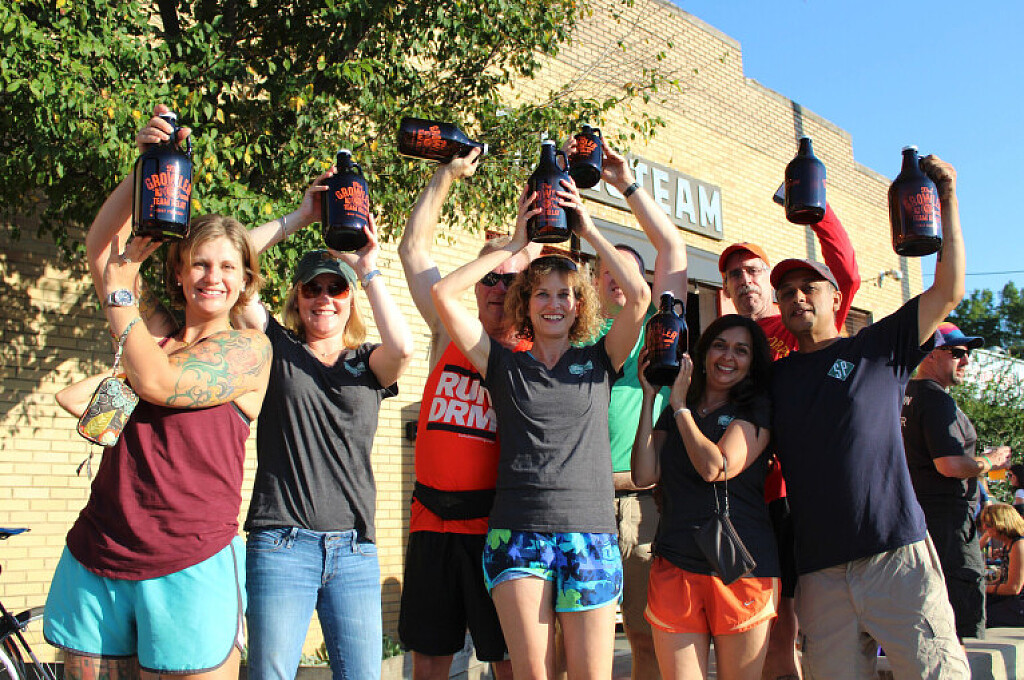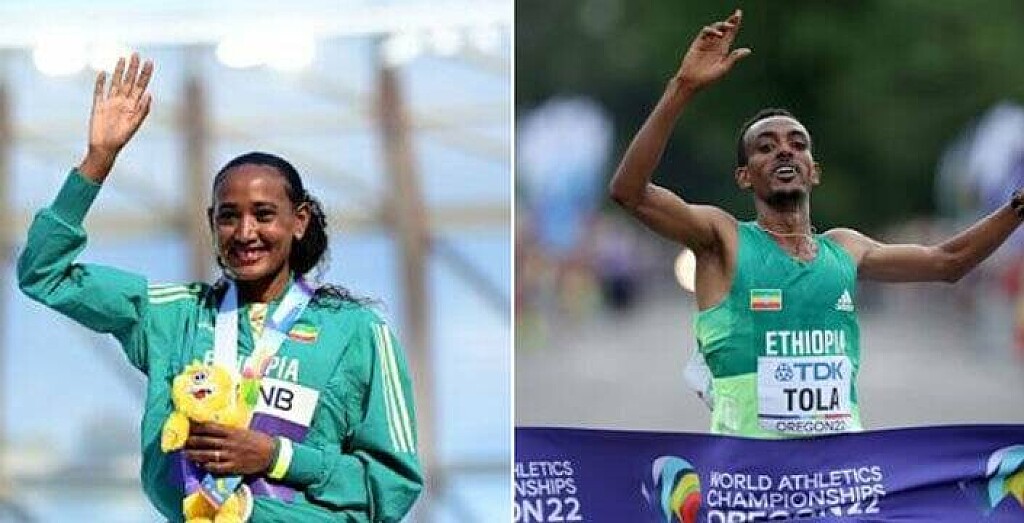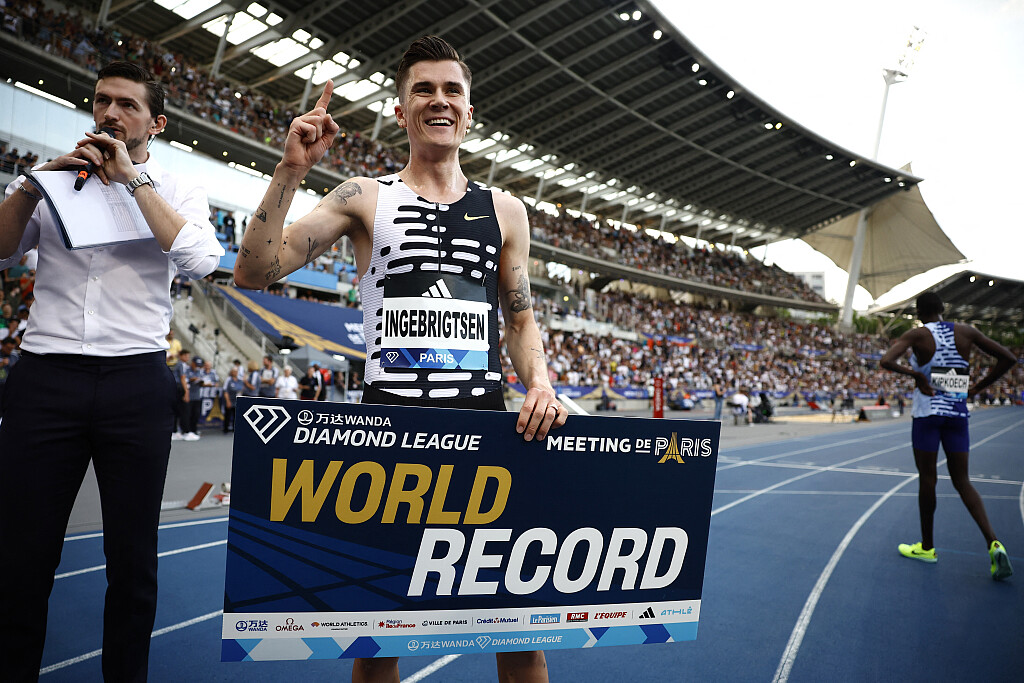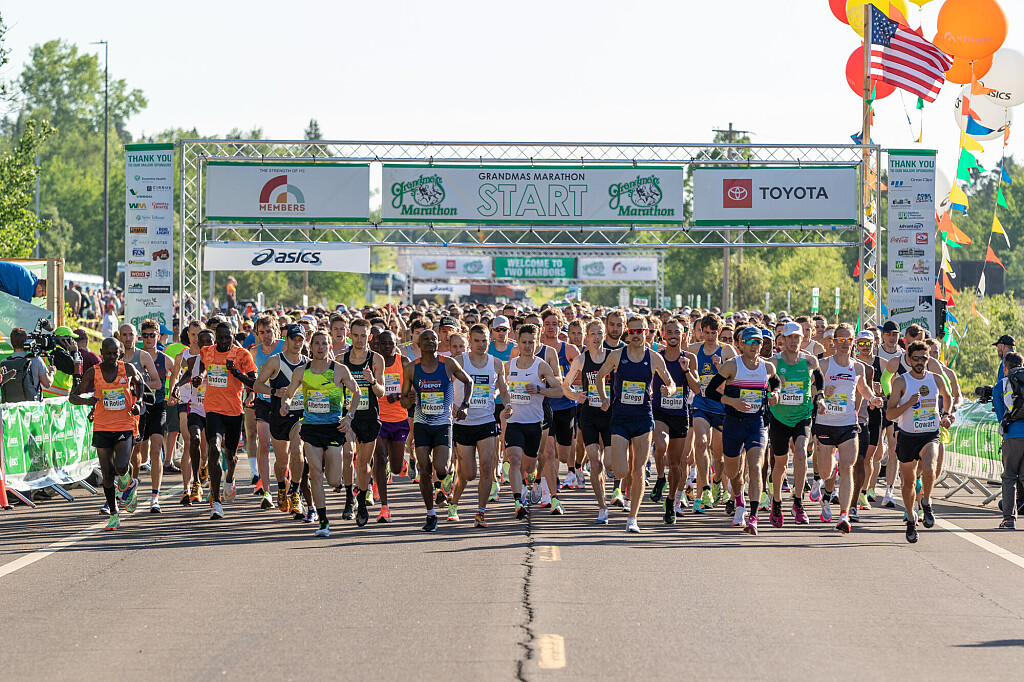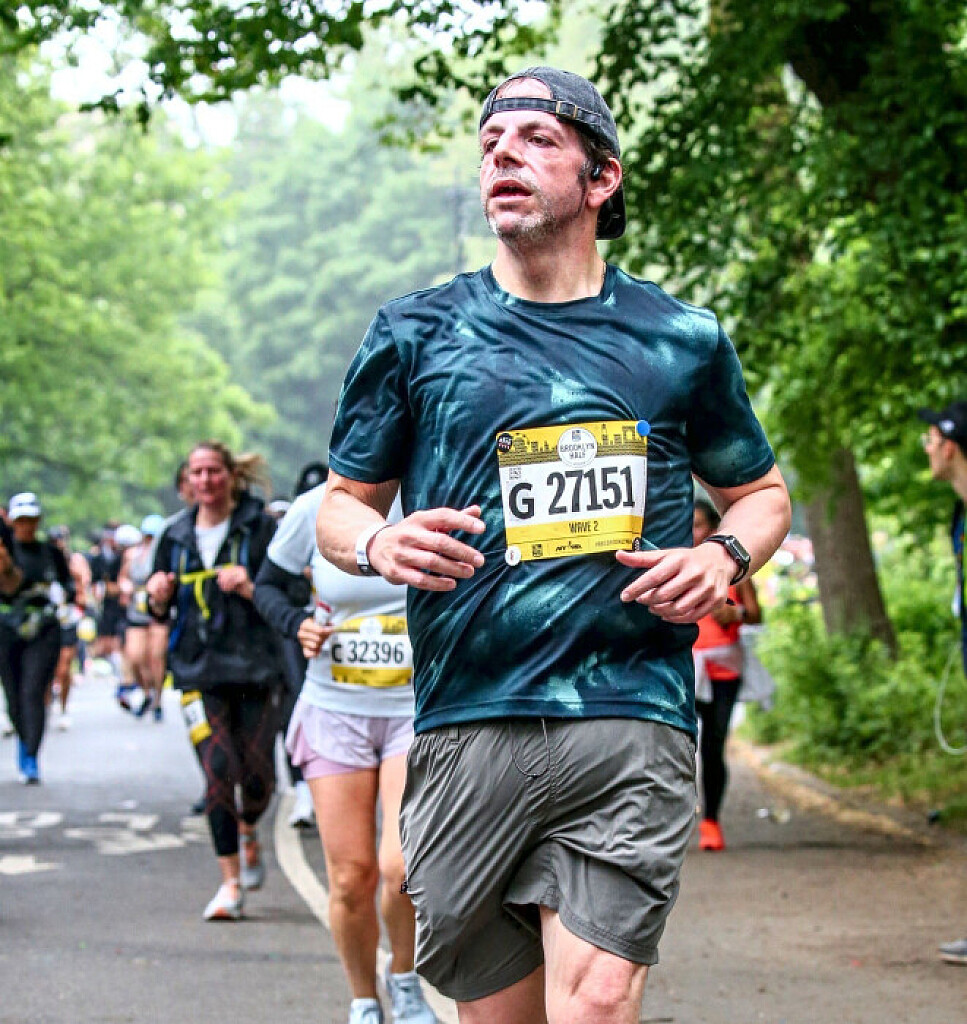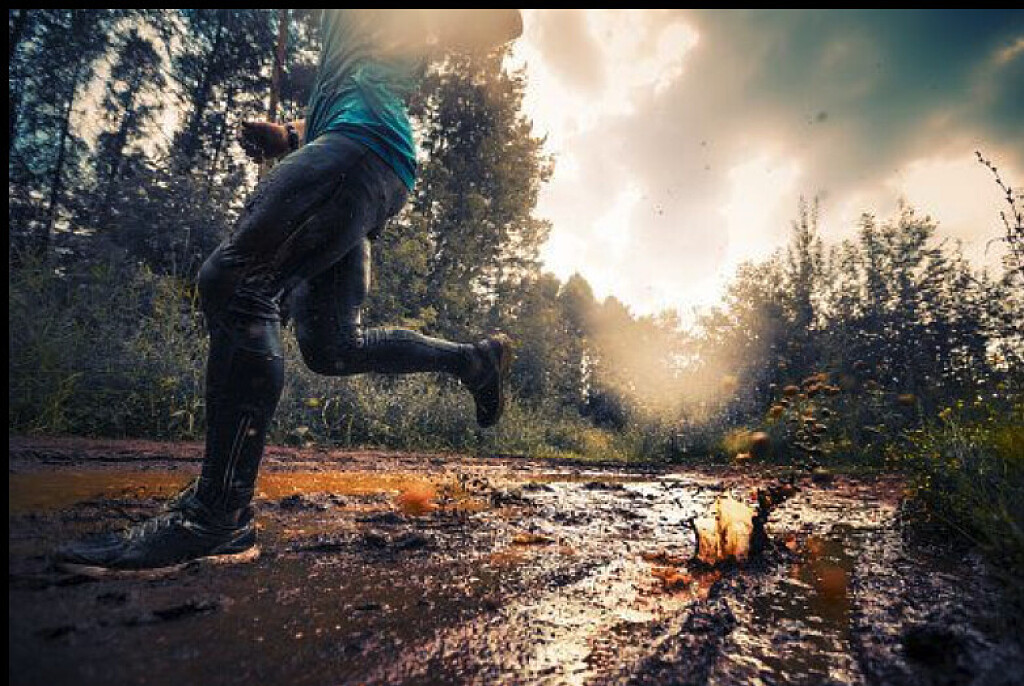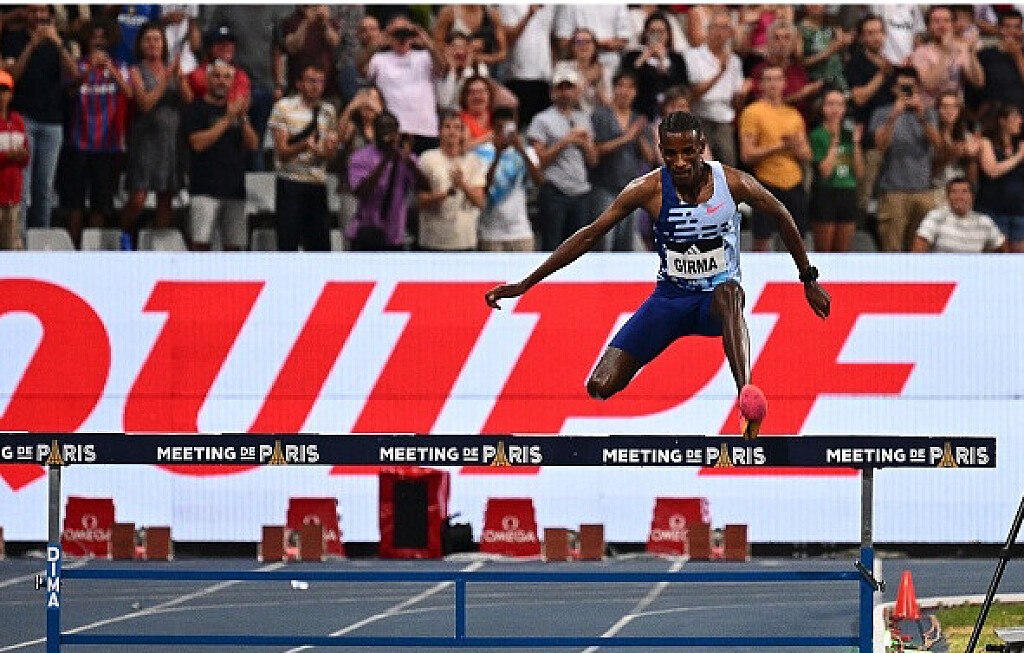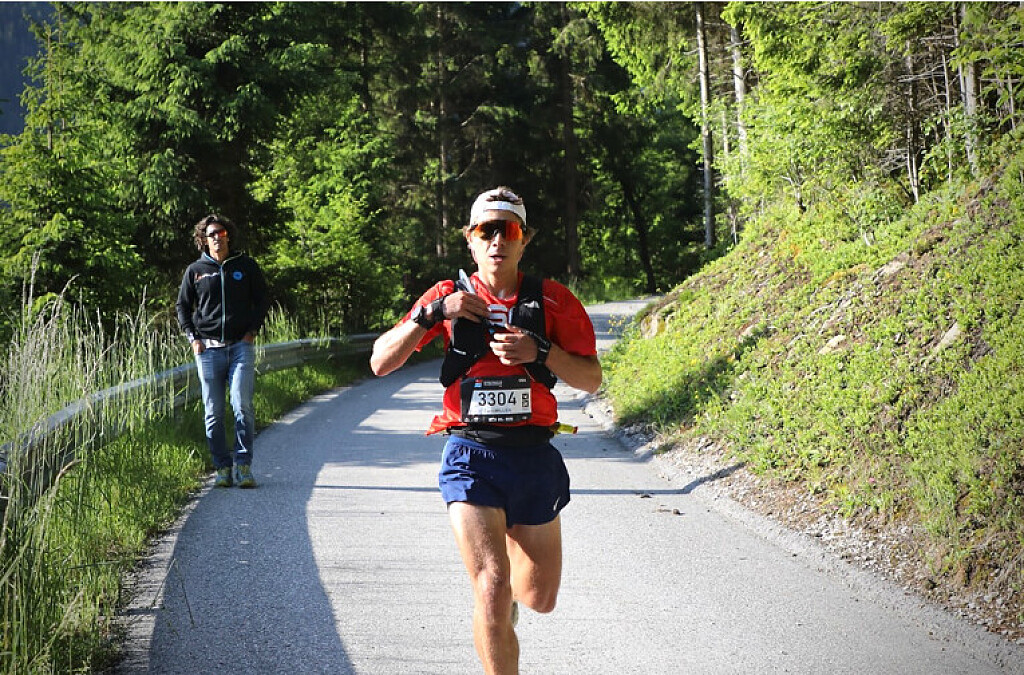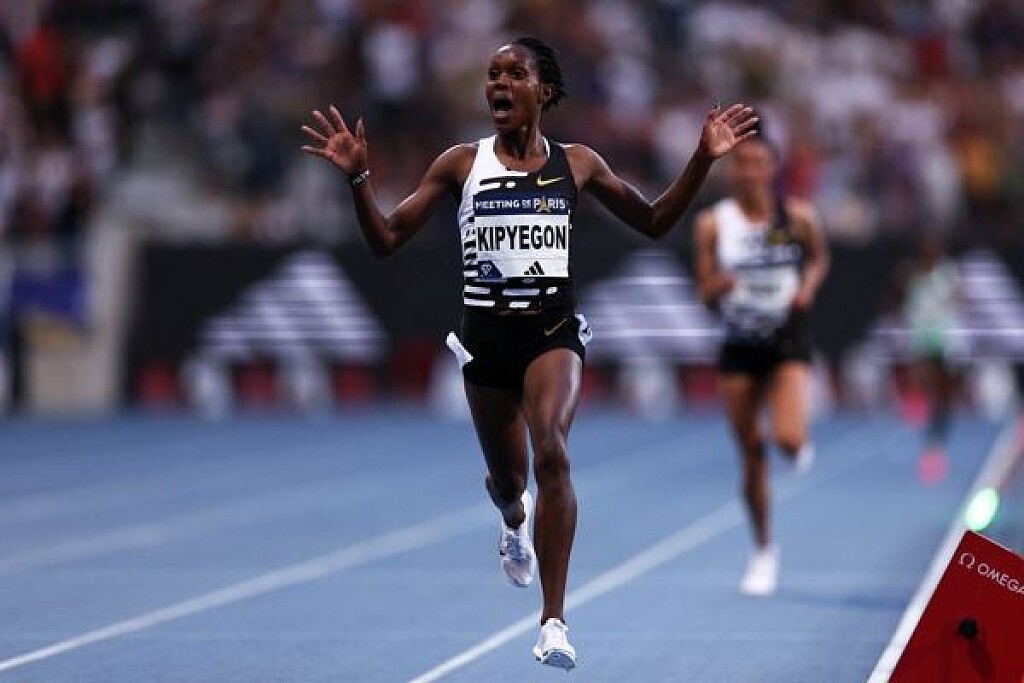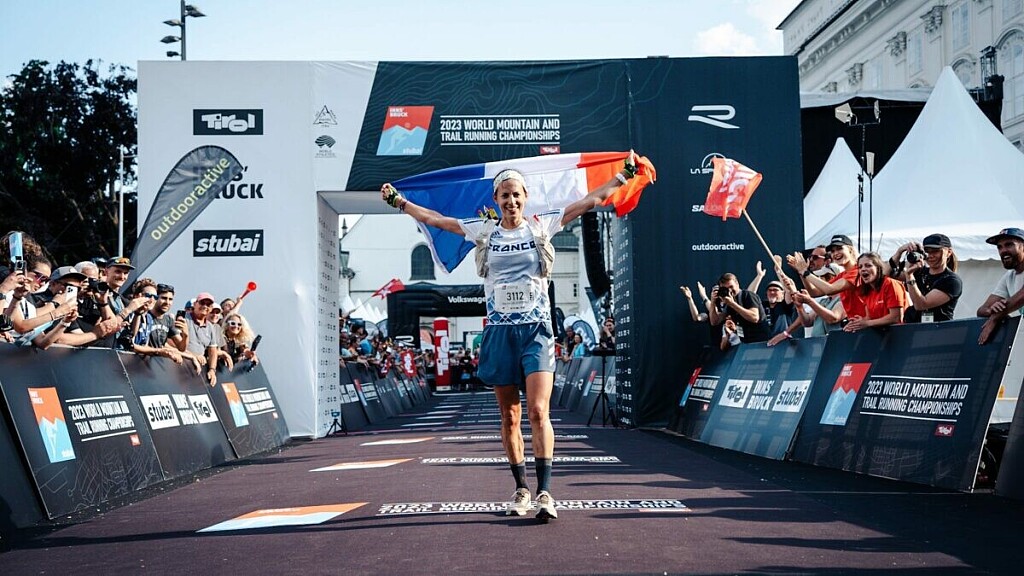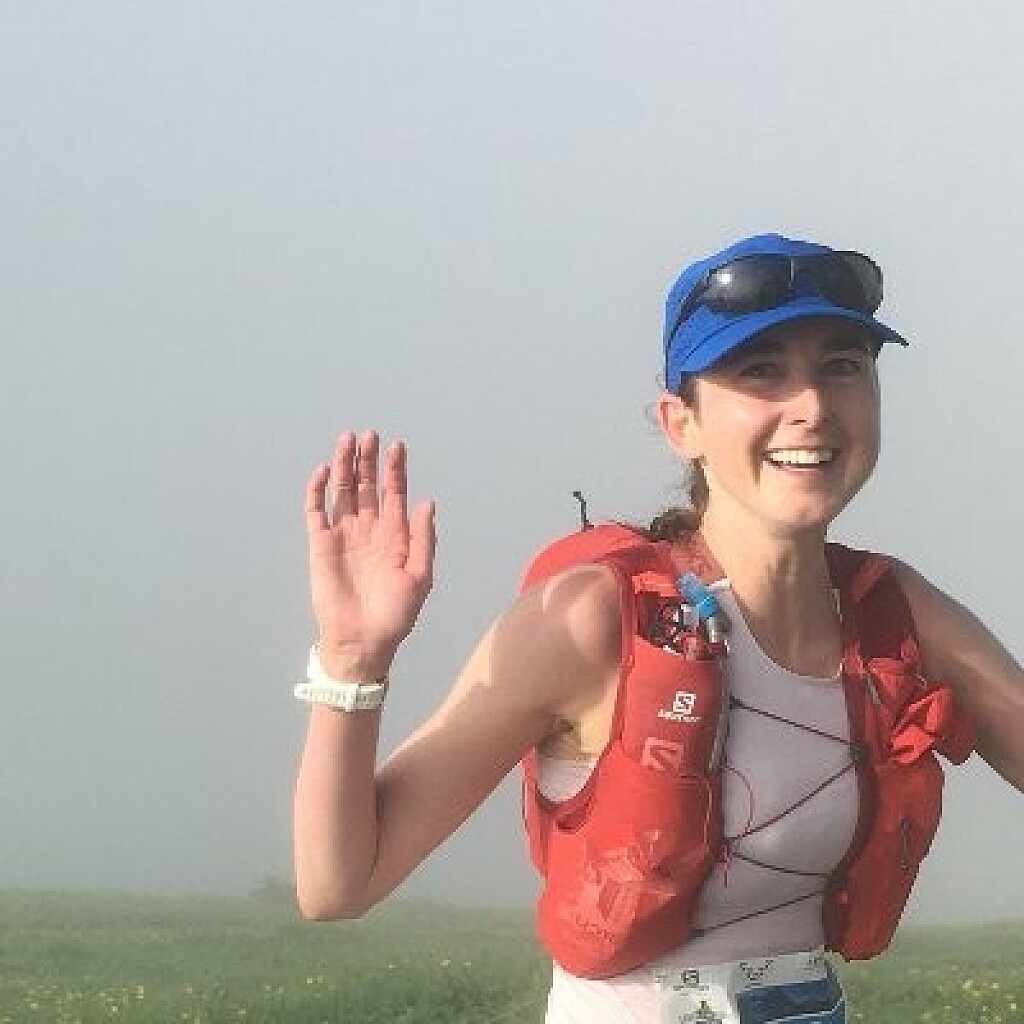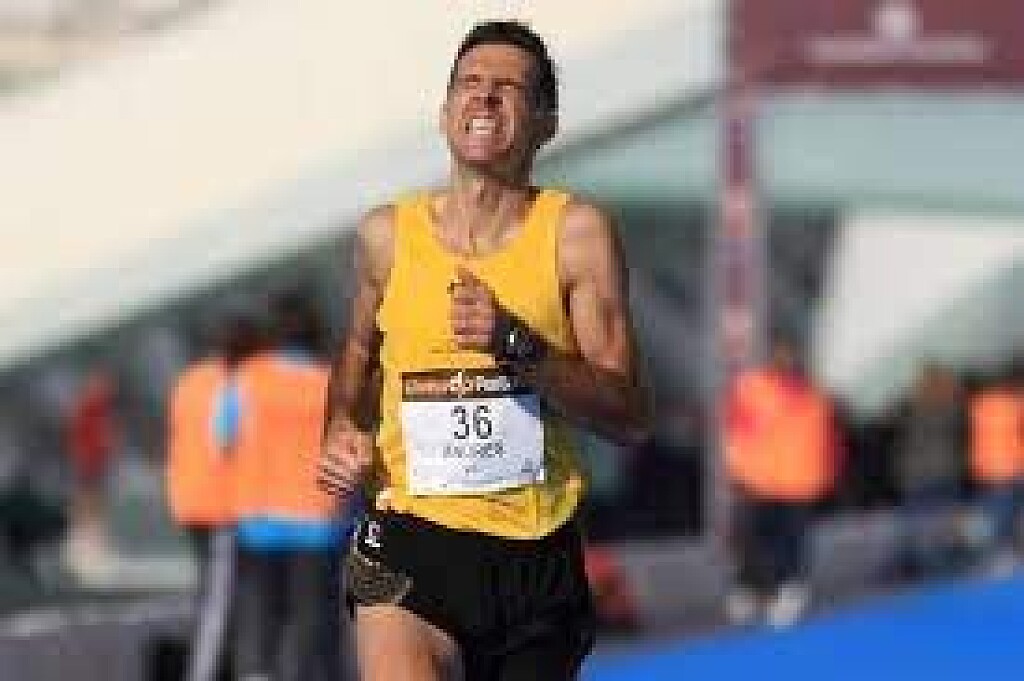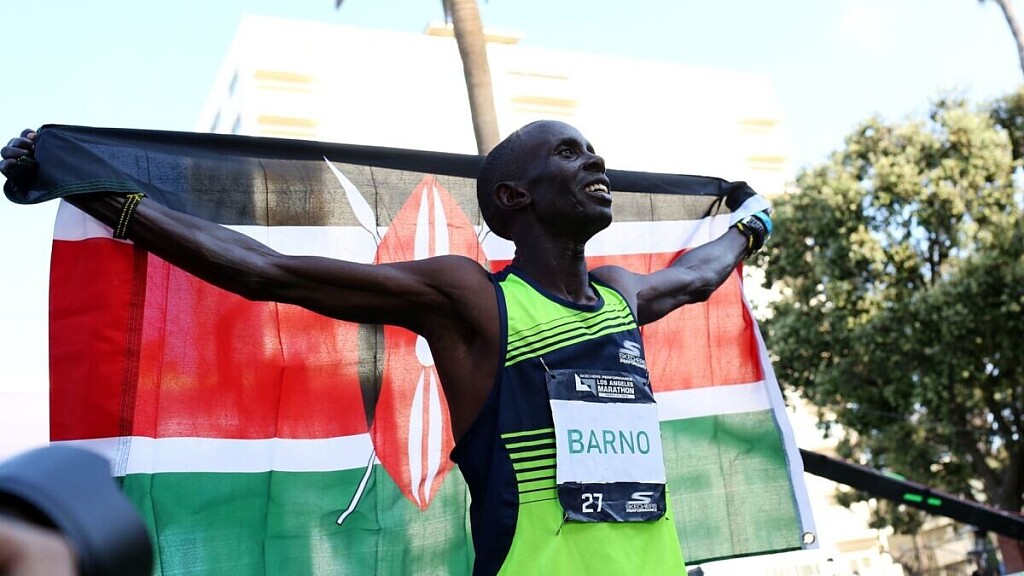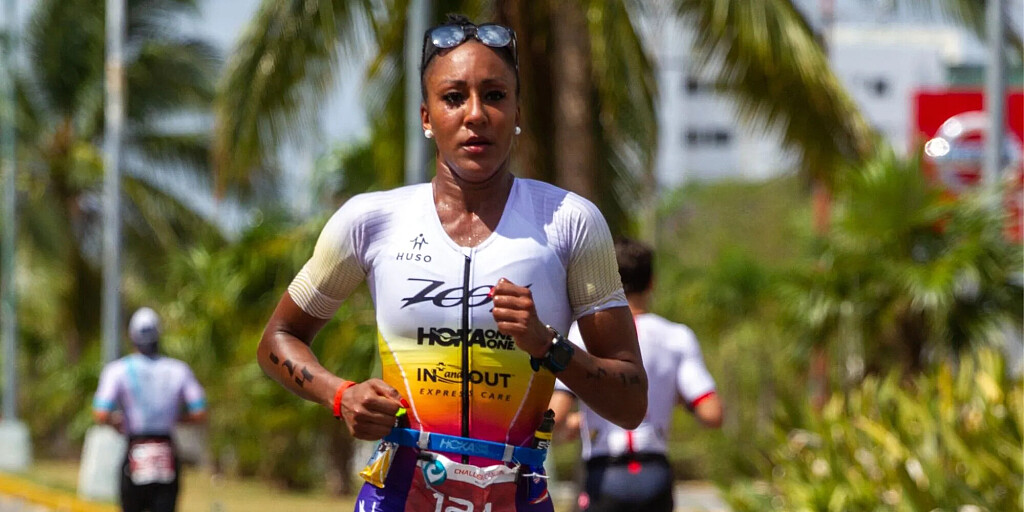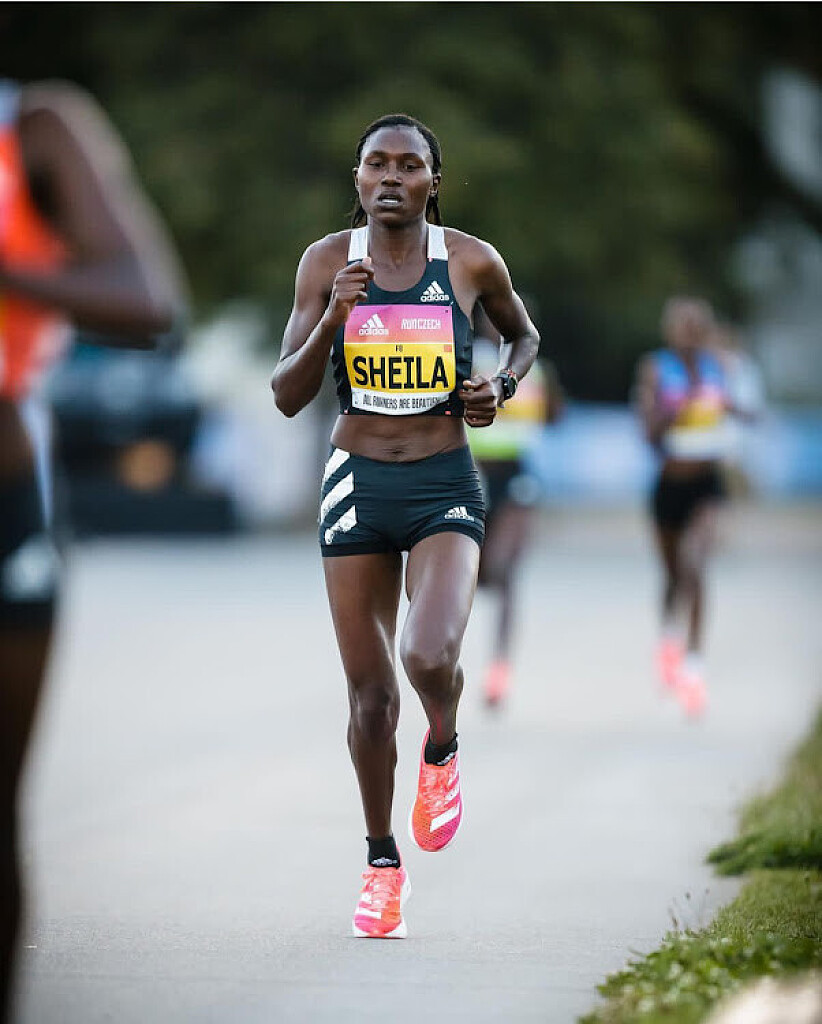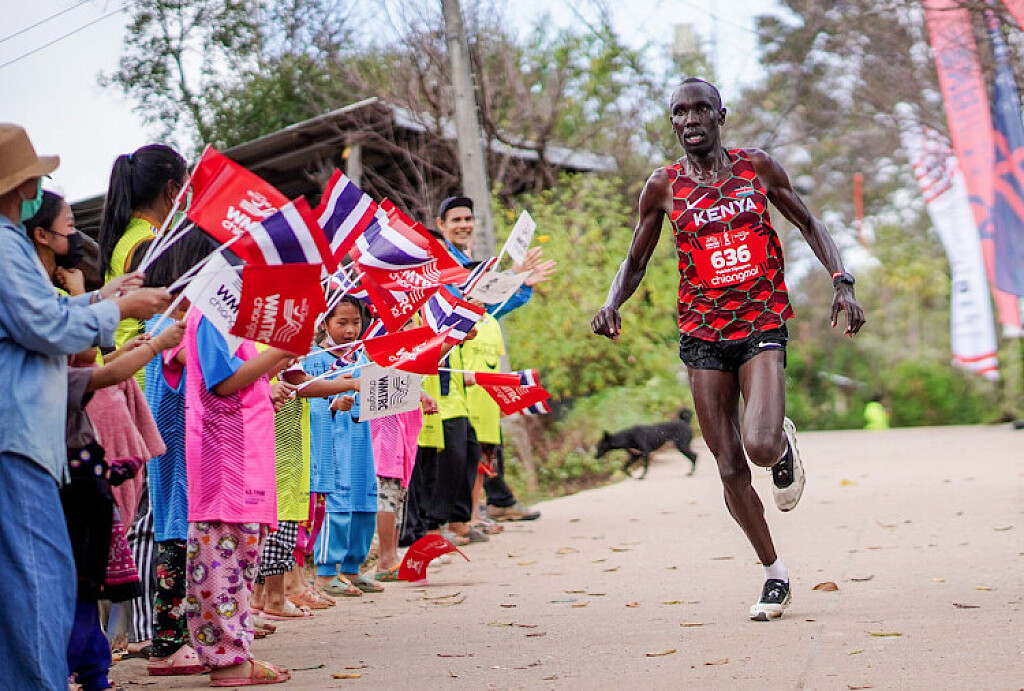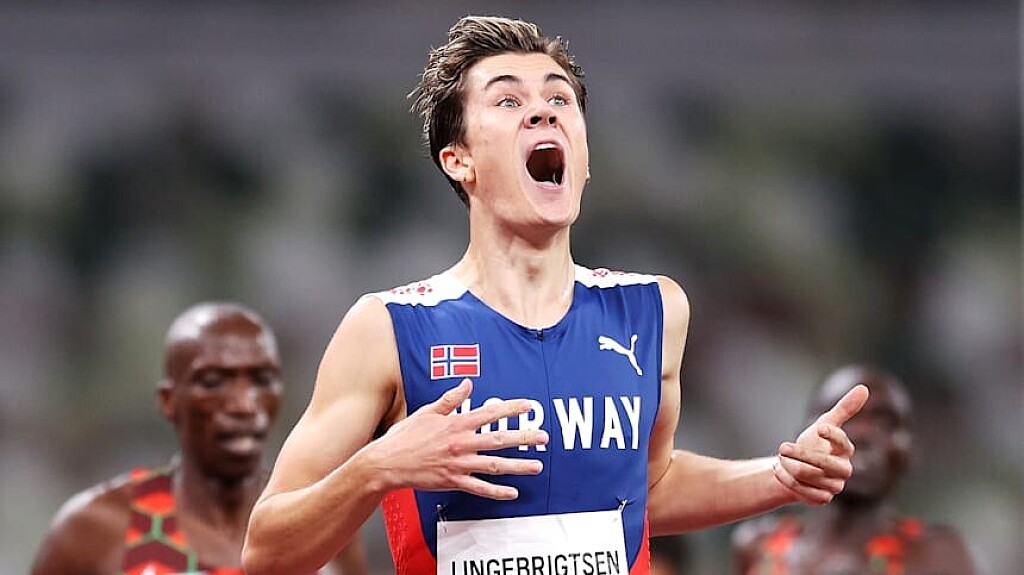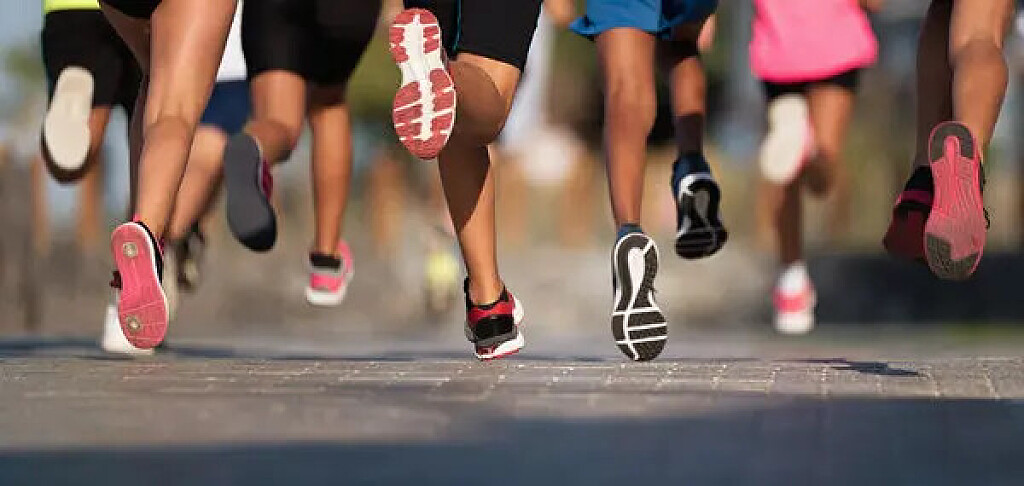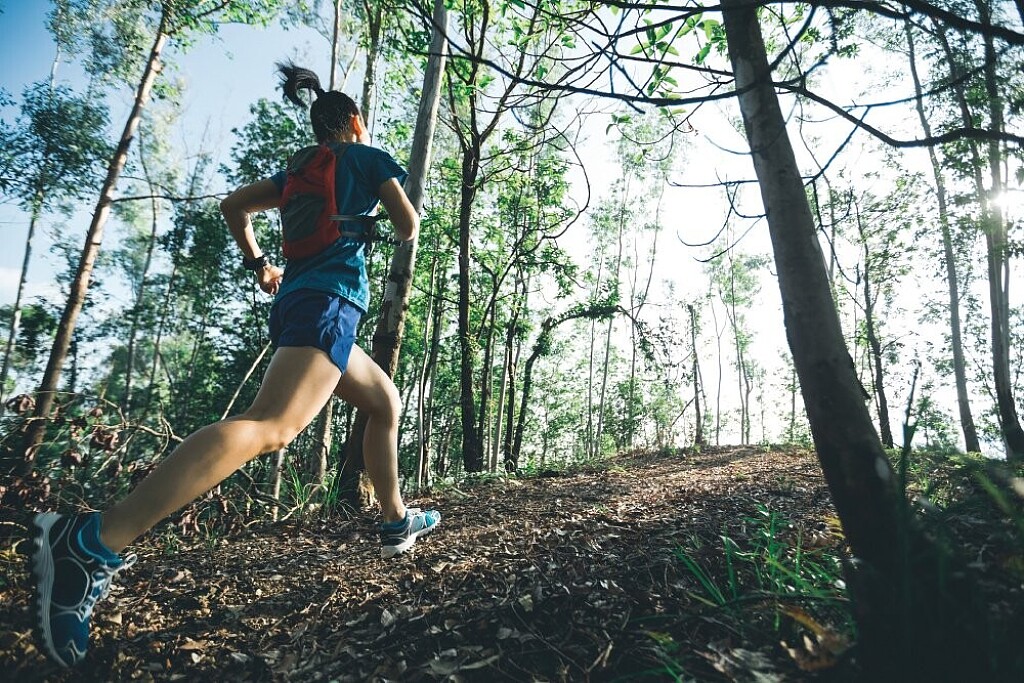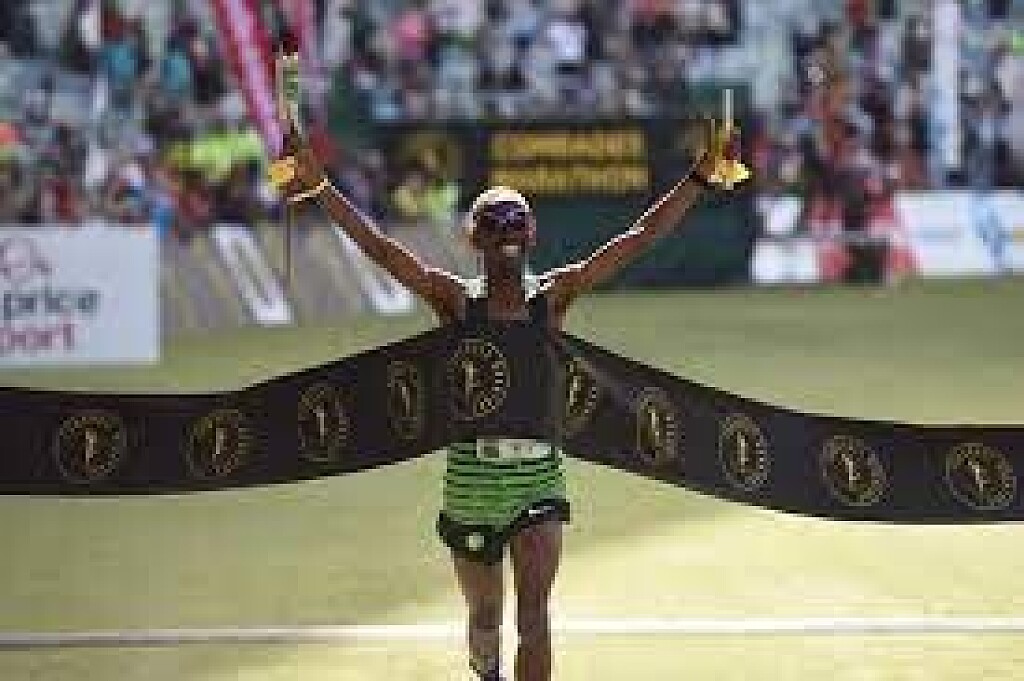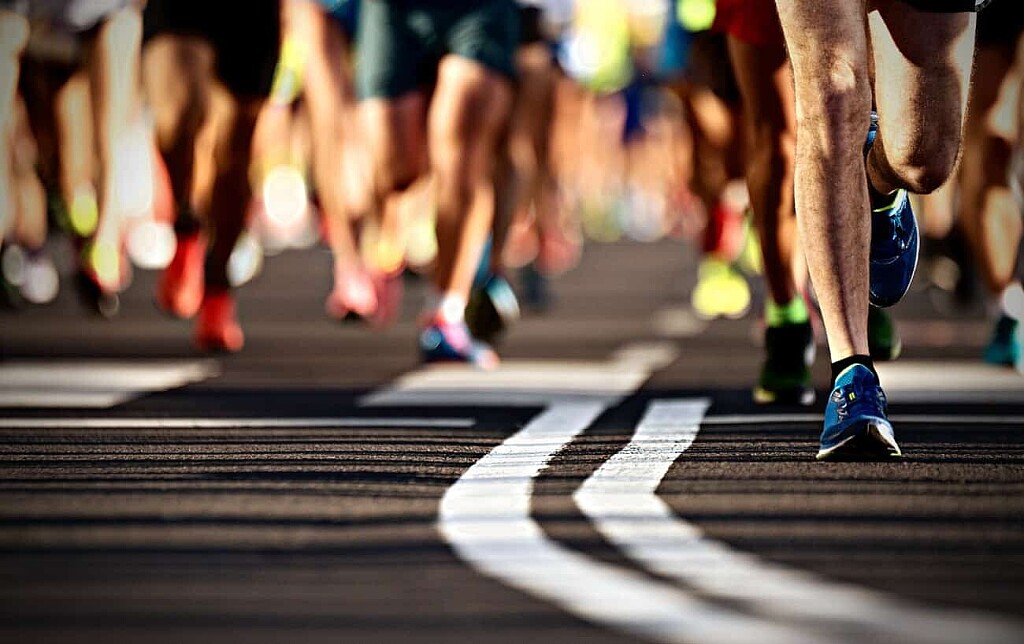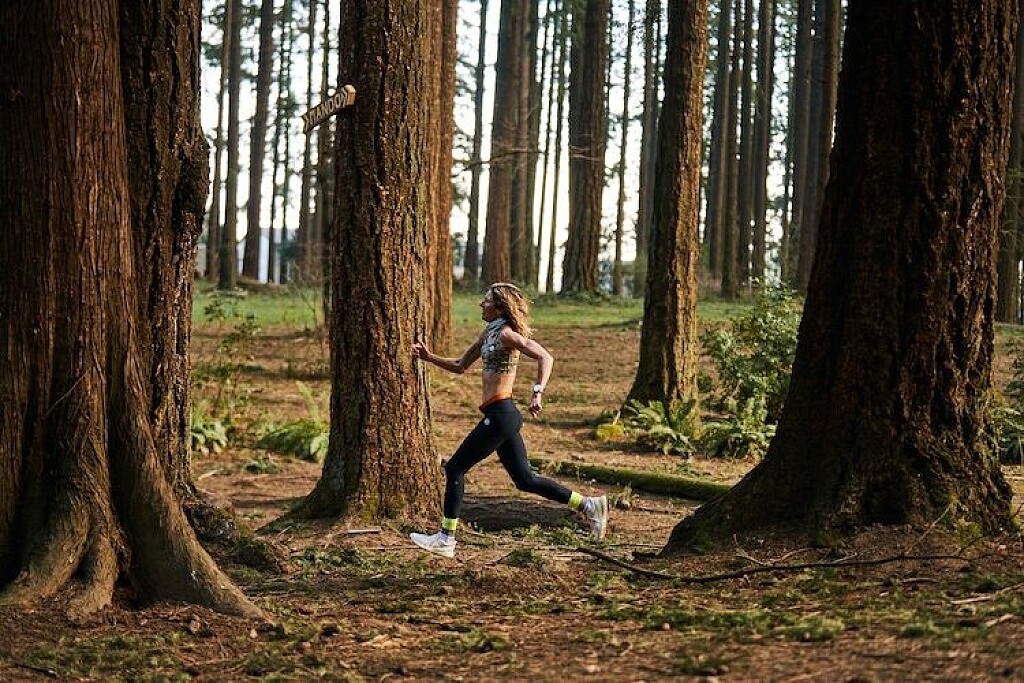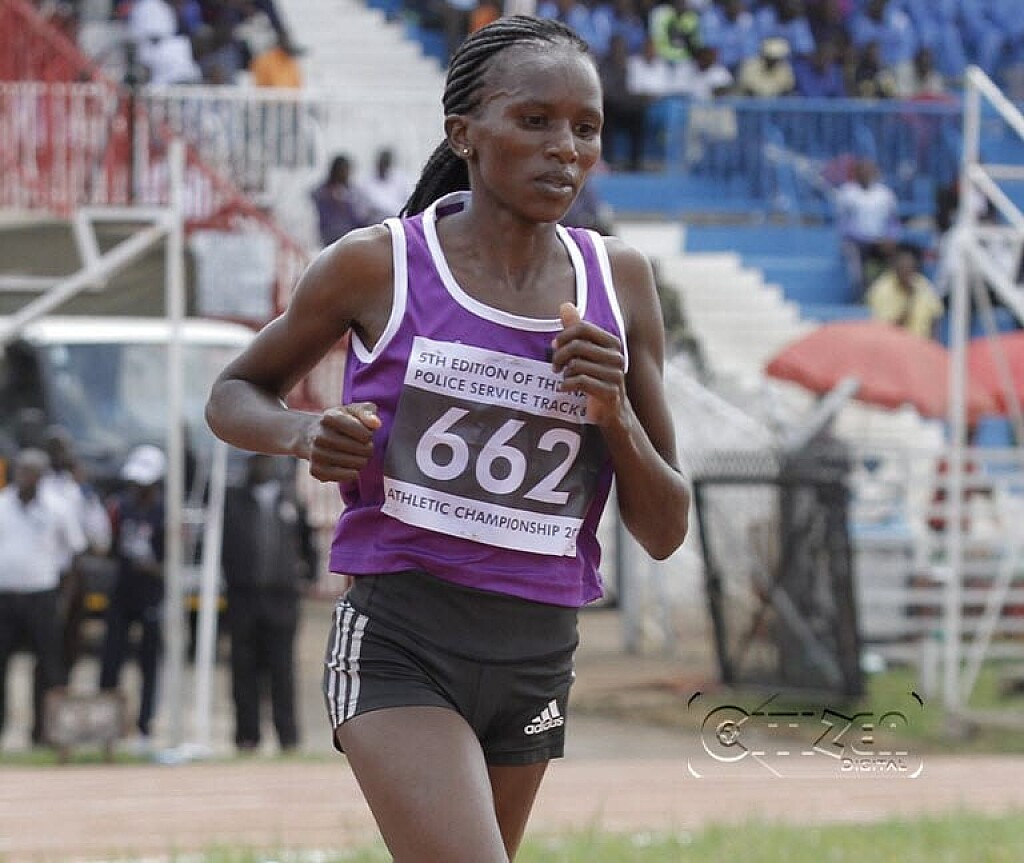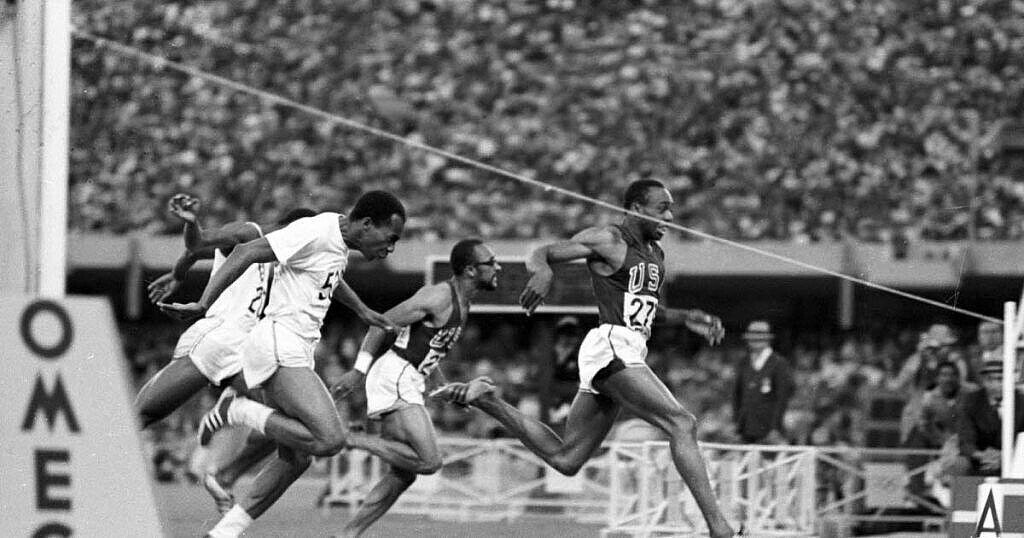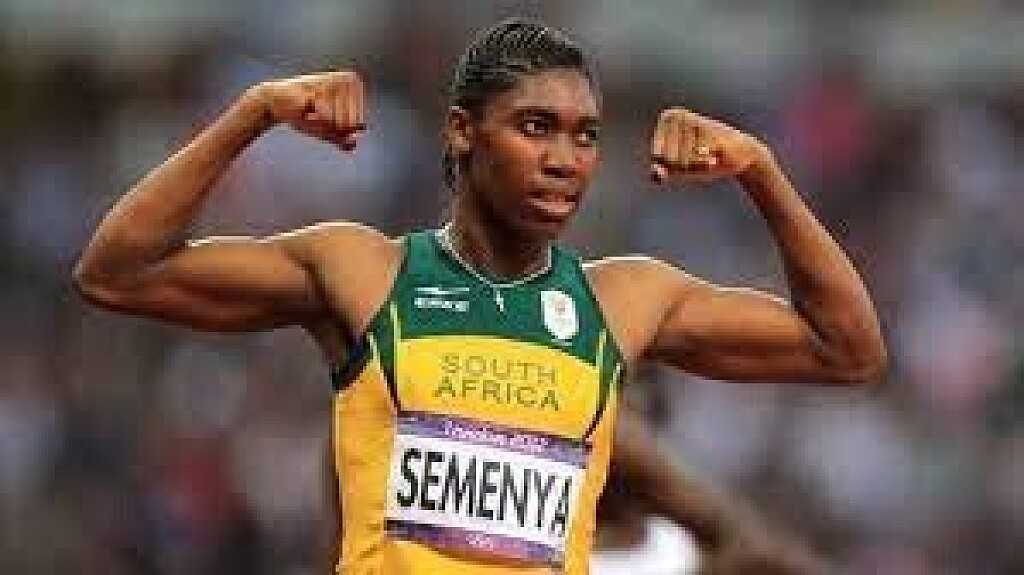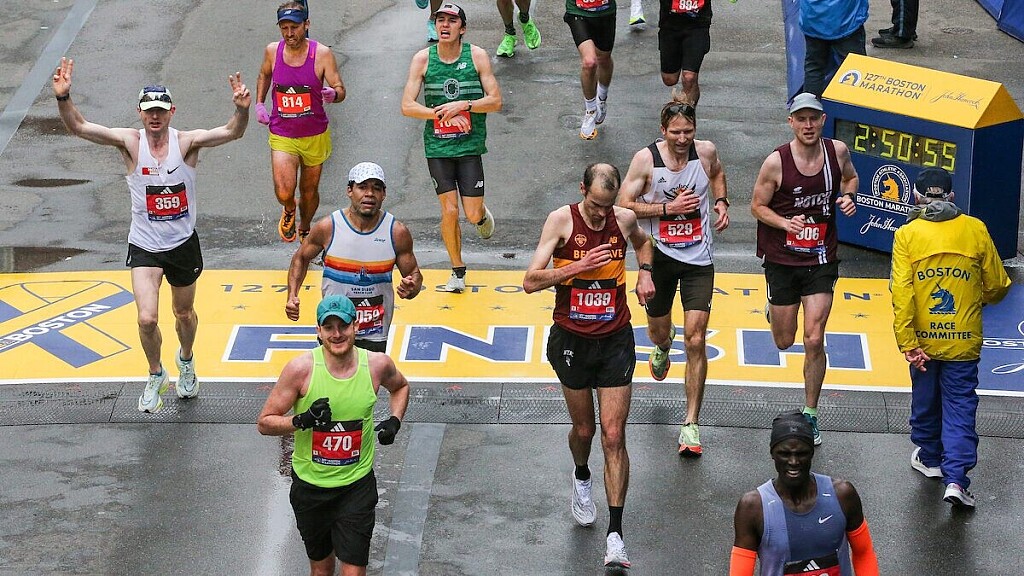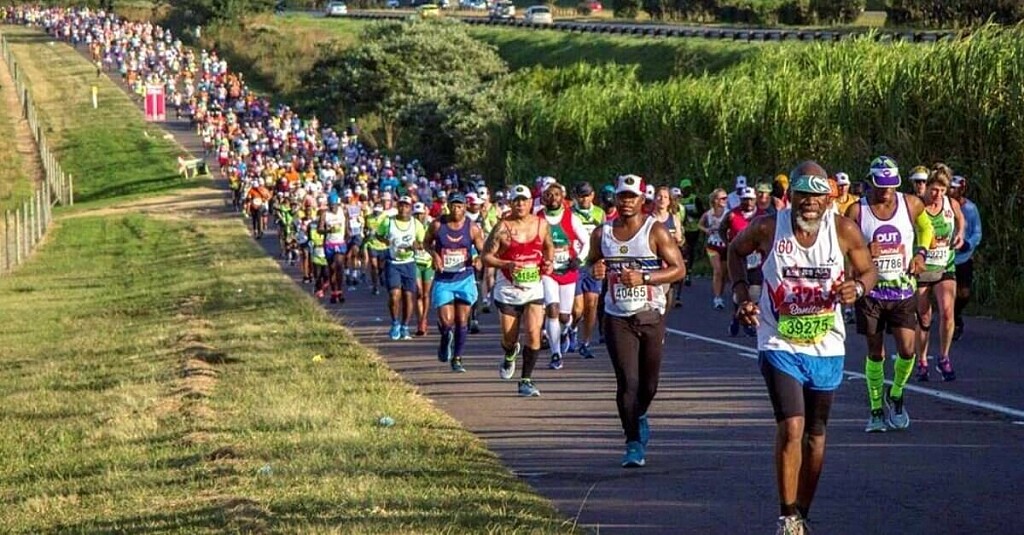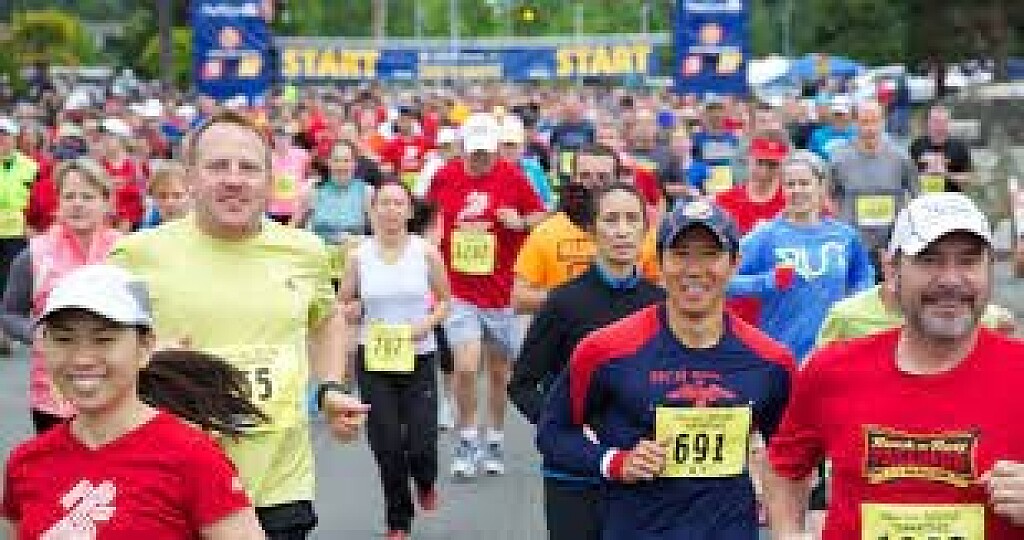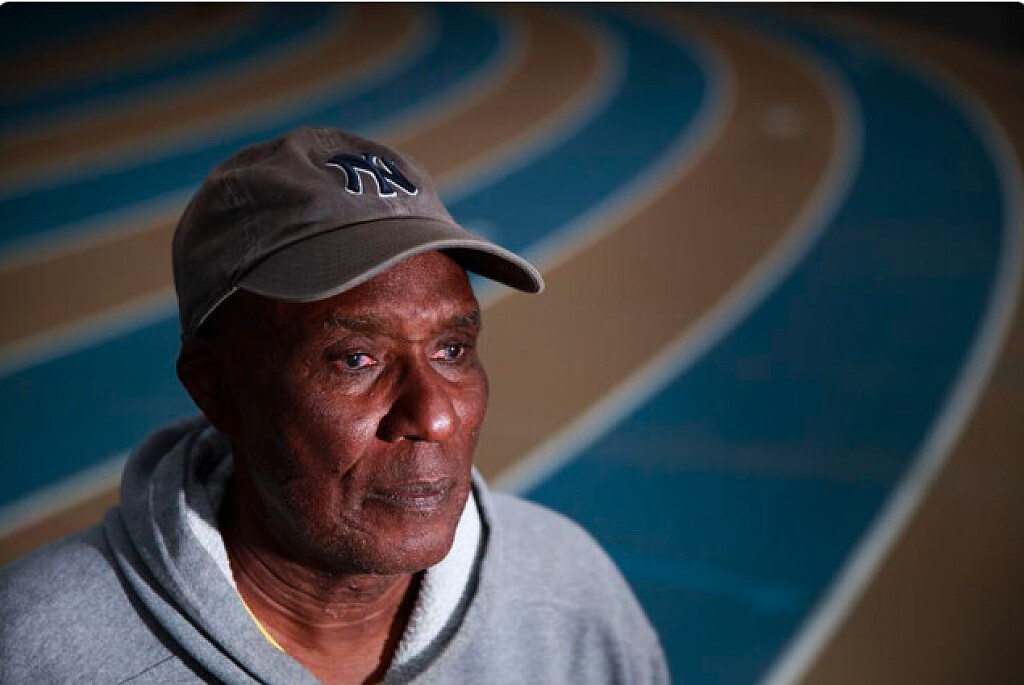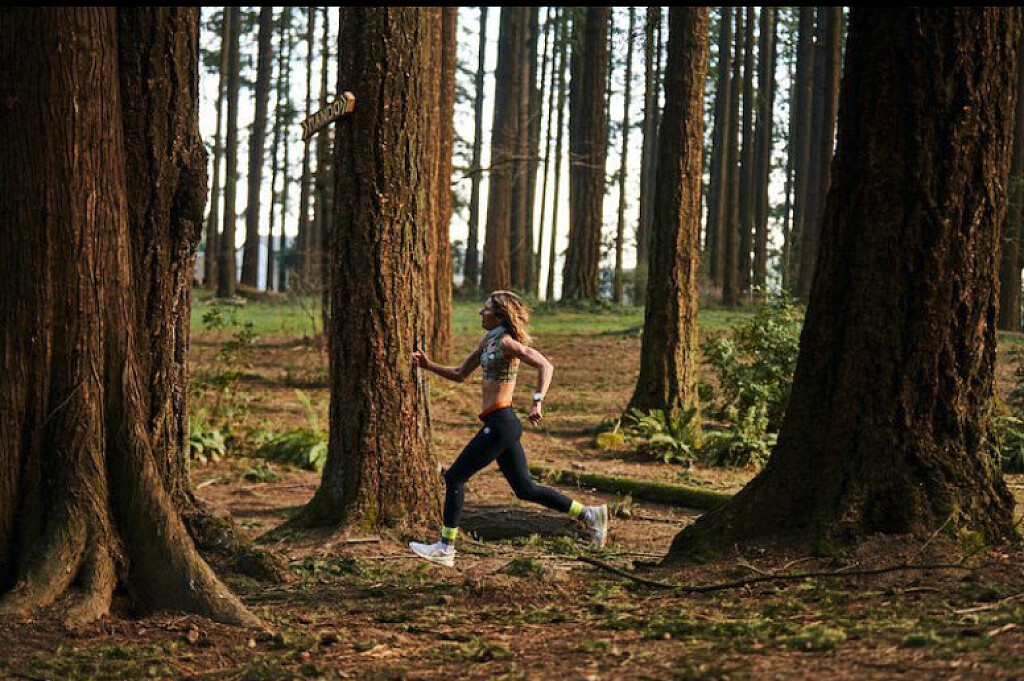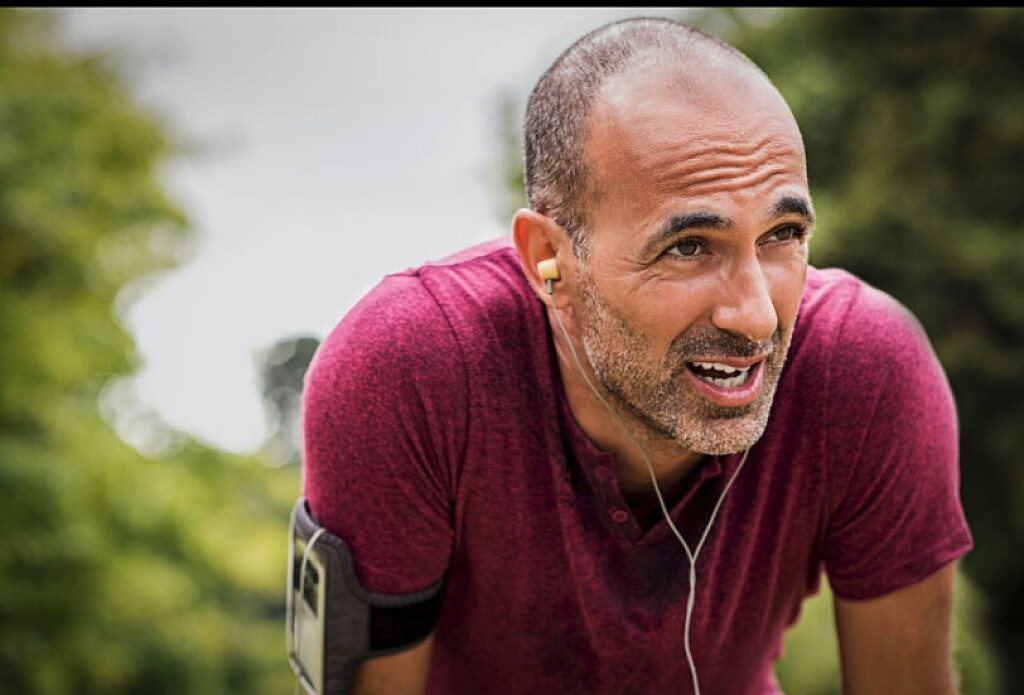Running News Daily
Running News Daily is edited by Bob Anderson. Send your news items to bob@mybestruns.com Advertising opportunities available. Train the Kenyan Way at KATA Kenya and Portugal owned and operated by Bob Anderson. Be sure to catch our movie A Long Run the movie KATA Running Camps and KATA Potato Farms - 31 now open in Kenya! https://kata.ke/
Index to Daily Posts · Sign Up For Updates · Run The World Feed
Runners: use yoga and meditation to improve their mental game
JN Yoga and meditation are powerful practices that can enhance a runner’s focus and mental toughness during a race. Anyone who’s tried tackling a 5K PB or reached a marathon finish line knows just how important mental resilience is to performance. By incorporating yoga and meditation into your routine, you can cultivate a calm and focused mind, improve your ability to cope with discomfort and reduce the effects of nerves on race day.
Runner and yoga instructor Katherine Moore explains that the practice of deep breathing while moving through challenging yoga postures teaches runners how to remain calm during difficult workouts and races.
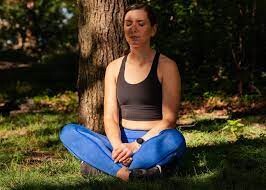
“When you get into challenging poses, it’s not easy. You have to relax your mind, deepen your breath and stay calm,” she says. “There’s always a point in a race when your brain says ‘Get me out of here, I’m done!’ If you can get comfortable in the discomfort, you can start to move through that.”
Not convinced? Here are four ways yoga and meditation can improve your mental toughness on race day.
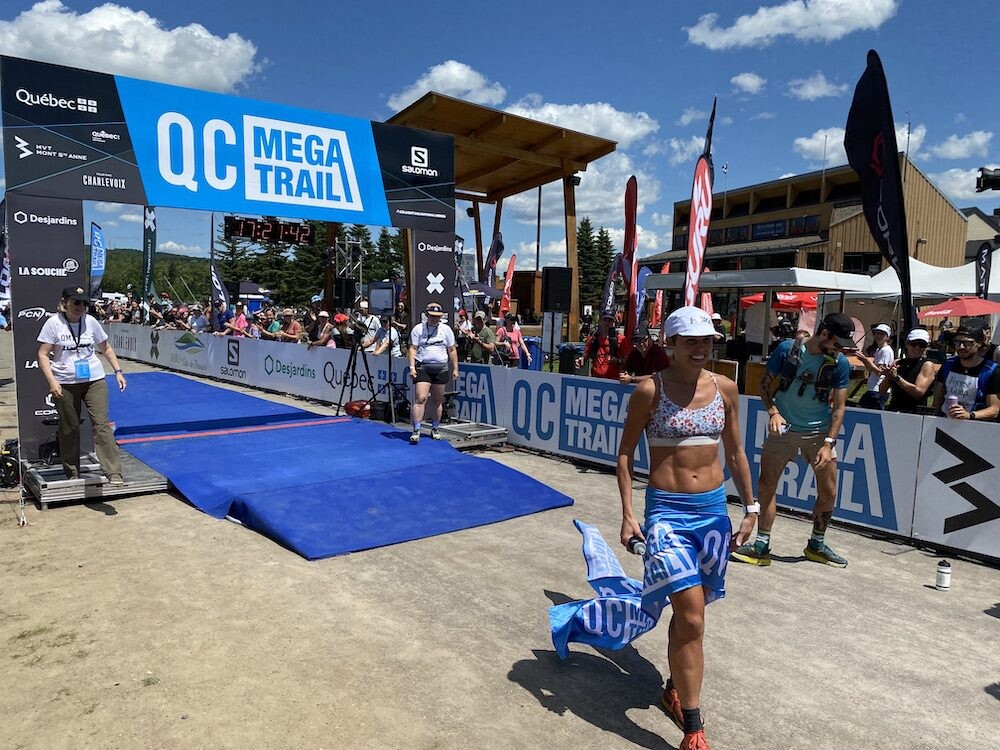
Cultivating mental focus
Yoga and meditation promote mindfulness, which is the practice of bringing one’s attention to the present moment. By practising mindfulness, runners learn to focus on their breath, body sensations, and thoughts without judgment. This heightened awareness helps runners stay present during a race, preventing their minds from wandering and enabling them to concentrate on their performance and strategy.
Managing discomfort
Pushing through intense efforts during a run or race is just as mentally challenging as it is physically challenging. Yoga and meditation teach runners to develop a better relationship with discomfort. Through breathing exercises and body awareness techniques, runners can learn to observe sensations of discomfort without becoming overwhelmed or consumed by them. This mental resilience allows runners to endure physical challenges with a greater sense of calm and control.
Stress reduction
Many runners struggle with pre-race jitters and anxiety. Yoga and meditation are well-known for their stress-reducing benefits. These practices activate the relaxation response in the body, which helps reduce stress hormones and promotes a sense of calm and well-being. By incorporating regular yoga and meditation sessions into your training, you can mitigate race-related stress and approach races with a clearer and more focused mindset.
Visualization and positive affirmations
Yoga and meditation provide an ideal platform for runners to visualize their race success and cultivate positive affirmations. During meditation, you can visualize yourself crossing the finish line strong, overcoming challenges and achieving your goals. Positive affirmations, such as repeating motivational statements, can help boost self-belief and mental toughness, empowering runners to stay determined and focused even in the face of adversity.
Incorporating yoga and meditation into your training routine is beneficial for physical performance and mental well-being. By cultivating focus, managing discomfort, reducing stress and visualizing success, these practices provide you with valuable tools to improve your mental toughness in workouts and races.
Meet Katherine Moore
Moore got into running when she was 18, after moving to Vancouver, and ran her first marathon in New York City in 2005. She progressed in the sport, eventually running a 2:47 marathon, crossing the finish line of the 2010 Toronto Waterfront Marathon as the first Canadian female. Having been a yoga instructor for several years already, Moore eventually combined her two passions and created the KM Run Club in Vancouver, where runners meet for workouts and yoga classes.
To learn more about Moore, her run club, and her yoga teaching, head to her website at runningintoyoga.ca or check out her YouTube channel for daily yoga and pilates workouts.
(06/13/2023) ⚡AMPby Brittany Hambleton
U.S. sprinter Tori Bowie died in childbirth at home, autopsy reveals
U.S. sprinter Tori Bowie‘s death at age 32 was the result of complications during childbirth at her Florida home, according to an autopsy report by the Orange County Medical Examiner Office.
The report, obtained by USA Today, says Bowie was carrying a “well-developed fetus” at about eight months into her pregnancy when she died during labour at her home in Winter Garden, Fla. Her body was discovered May 2 as part of a welfare check by sheriff deputies, who were responding to reports of a woman who had not been seen for several days.
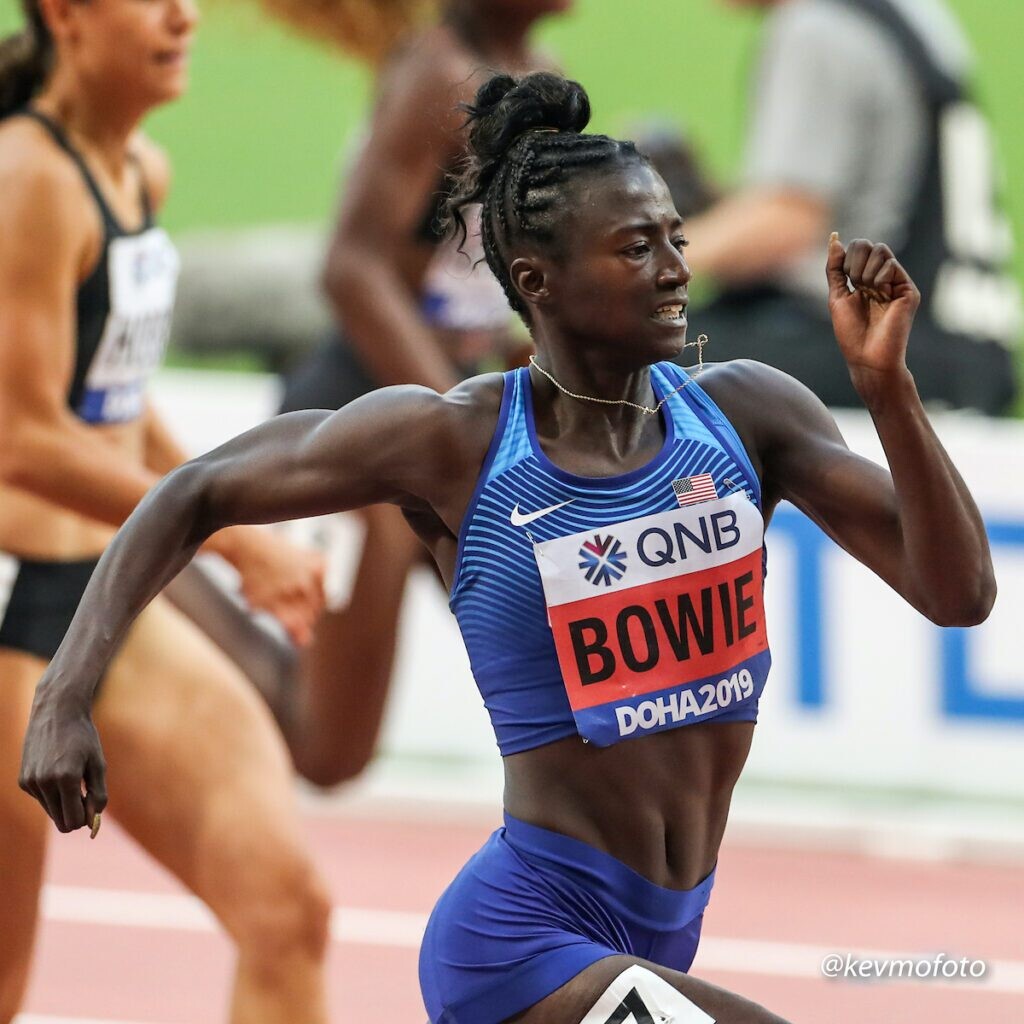
The medical examiner ruled Bowie’s death as “natural” and said complications during labour could have included eclampsia and respiratory distress. (Eclampsia is characterized by seizures related to a spike in blood pressure during pregnancy and can lead to coma, brain damage and death if not treated, according to the Preeclampsia Foundation. The foundation describes the condition as rare in the developed world and is “usually treatable if appropriate intervention is promptly sought.”)
Bowie was a three-time Olympic medallist who took gold in the 4x100m as a member of the U.S. relay team at the 2016 Rio Games. In addition to topping the podium in the relay in Rio, Bowie captured silver in the 100m and bronze in the 200m at the 2016 Summer Olympics.

The news of her death last month dealt a shocking blow to the track-and-field community in the United States and around the world. “We’ve lost a client, dear friend, daughter and sister,” Icon Management, Bowie’s management company, said in a statement confirming the athlete’s death. “Tori was a champion…a beacon of light that shined so bright! We’re truly heartbroken and our prayers are with the family and friends.”
Originally from Sand Hill, Miss., Bowie attended Pisgah High School. There, she earned state titles in the 100m, 200m, 4x10m relay and long jump. Earning a full athletic scholarship at the University of Southern Mississippi, she twice won gold in the long jump at the NCAA Women’s Indoor Track and Field Championship. According to her official bio at USA Track and Field, Bowie was first athlete from the University of Southern Mississippi, male or female, to sweep the long jump NCAA titles at both the indoor and outdoor events in a single season, a feat she accomplished between 2011 and 2010.
Bowie bookended her triumphs in Rio by taking bronze in the 100m at the 2015 World Athletic Championships in Beijing, and topping the podium in the 100m at the World Championships in London in 2017.
(06/13/2023) ⚡AMPby Paul Baswick
81-year-old bricklayer becomes Comrades Marathon’s oldest finisher
An 81-year-old bricklayer has become the oldest person to complete South Africa’s storied Comrades Marathon, finishing this year’s 87.7-km run from Pietermaritzburg to Durban in 9:26:10.
Sunday’s history-making run by Johannes Mosehla, who hails from the South African city of Polokwane, marked the 10th time the speedy senior has completed the Comrades Marathon, the world’s largest ultra-marathon. According to comments Mosehla made at Monday’s awards breakfast at Durban’s Elangeni Hotel on Monday, this year’s Comrades won’t be his last.
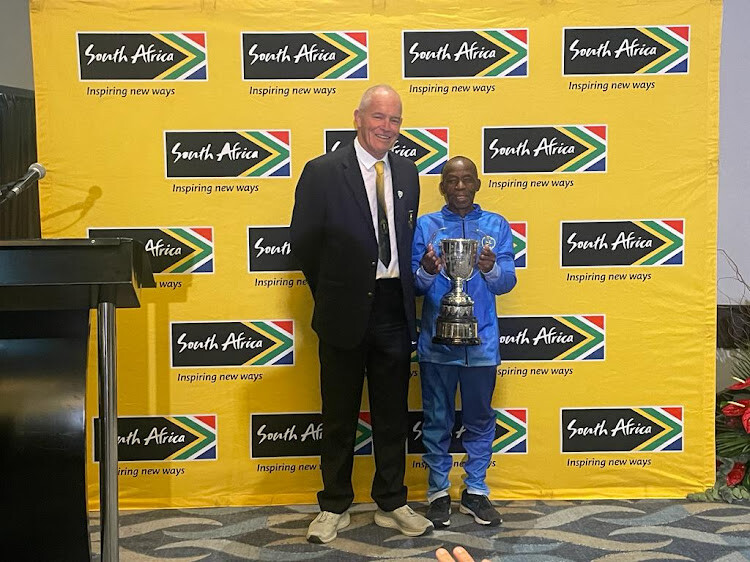
“I feel strong,” South Africa’s news24 reported Mosehla as saying. “I could run it again!” he added, confirming that he plans to return to Comrades in 2024.
He told those at the breakfast that there are no shortcuts to becoming Comrades’ oldest finisher: “My secret is to train. You can’t win without training,” said Mosehla, who has been running since 1963 and continues to train three times a week, covering distances from five to 32 km.

Comrades alternates between the “down” course, which was run this year and is so-named for its relative descent in elevation, and the “up” course, which begins in Durban and ends in Pietermaritzburg.
Noting he was proud to pull off his record-breaking effort “for the whole country,” Mosehla said he hopes his run sends the message that people “must not look for a number or age. I am 81, but I must not look at that number. I must be controlled by my body. When I am still strong, I must not look at my age.”
Mosehla’s run broke the decades-old record set by Comrades legend Wally Hayward, who at age 80 crossed the finish line of the 1989 Comrades Marathon less than two minutes before the 11-hour cutoff time.
Hawyard’s wasn’t the only record to fall at Sunday’s race. Last year’s winner, Tete Dijana of Rustenburg, South Africa, defended his Comrades crown in 5:13:58, shaving more than four minutes off the “down” record set by David Gatebe in 2016.
Gerda Steyn ran this year’s course in 5:44:56, breaking the women’s “down” record set by fellow South African runner Frith van der Merwe in 1989 by nearly 10 minutes.
(06/13/2023) ⚡AMPby Paul Baswick
Comrades Marathon
Arguably the greatest ultra marathon in the world where athletes come from all over the world to combine muscle and mental strength to conquer the approx 90kilometers between the cities of Pietermaritzburg and Durban, the event owes its beginnings to the vision of one man, World War I veteran Vic Clapham. A soldier, a dreamer, who had campaigned in East...
more...World championship silver medalist suspended for evading doping test
On Monday morning, the Athletics Integrity Unit (AIU) announced the provisional suspension of Jamaican 400m runner and 2022 world championship silver medalist Christopher Taylor for evading and refusing to submit to a sample collection, stemming from an incident in November 2022.
Taylor, an Olympic and World Championships finalist in the men’s 400m, may face a four-year ban if he is found guilty; he has not competed since Aug. 30, 2022. At the 2022 World Championships, he anchored the Jamaican 4x400m team to a silver medal.

The suspension
According to the Jamaica Observer, Taylor was contacted in November by anti-doping officials, who had turned up to conduct a test at his home in Kingston, Jamaica (the location he had indicated on his whereabouts form). When the officials arrived, Taylor was at the Norman Manley International Airport in Kingston, waiting to catch a flight to the U.S.
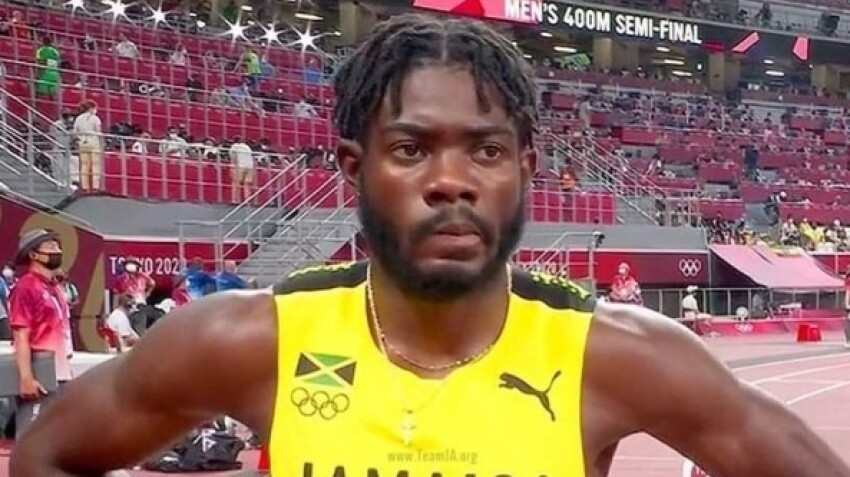
If an athlete is not where they say they are when anti-doping officials show up, it counts as a missed test. Typically, a first or second offence does not carry any penalty, but if an athlete misses three tests during a 12-month period, that constitutes a whereabouts violation, resulting in an automatic period of ineligibility.
However, in Taylor’s case, he is believed to have violated WADA Anti-Doping Code Article 2.3, which speaks to purposely “evading, refusing or failing to submit to sample collection,” resulting in a mandatory two- or four-year ban. If Taylor can establish that the rule violation was not intentional, the period of ineligibility may be reduced.
Taylor’s case
Sports lawyer Paul Greene, who has previously represented high-profile athletes, Shelby Houlihan and Peter Bol, has been representing Taylor. In the interview with the Jamaica Observer, Greene says that upon discovering that Taylor was at the airport, the doping control officer tracked him down, but Taylor refused to test because he didn’t want to miss his flight. Taylor assumed this would simply count as one of an allowable three whereabouts violations, and Greene claims Taylor would have consented to the test if he’d known his behaviour would be interpreted as an attempt to avoid being tested.
Before being notified of the suspension, Greene admitted there are some grey areas in the interpretation of rules differentiating a whereabouts failure from an attempt to evade testing, and that Taylor could either avoid any penalty or be slapped with a multi-year ban.
(06/12/2023) ⚡AMPby Running Magazine
Sha'Carri Richardson nominated for BET Sportswoman of the Year Award
Track and Field has two representatives as Sha'Carri Richardson and Allyson Felix have been nominated for 2023 BET Sportswoman of the Year Award.
Sha'Carri Richardson's continued relevance in sports and entertainment isn't stopping anytime soon, as she has been nominated for the BET Sportswoman of the Year Award.
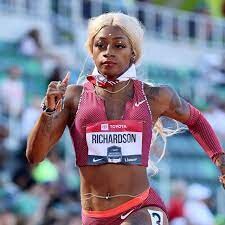
Richardson is a nominee alongside prominent sports personalities such as Serena Williams and Allyson Felix. Others nominated are Alexis Morris, Angel Reese, Candace Parker, and Naomi Osaka, who are all worthy of winning the award.
It's the second consecutive year Richardson will be in the nominee list, as she lost to Osaka in 2022.

Richardson has an unbeaten record in the 100m this year and has a world-leading time of 10.76s. She has clocked the fastest times this season, both legal and wind-aided, making her a favourite to win the US title in a few weeks.
Her last race at the Star Athletics Speed Series saw her win the 100m final in an effortless windy 10.73s (2.6), which speaks volumes of being the most in-form female sprinter in the world this year.
(06/12/2023) ⚡AMPby Funmilayo Fameso
Missoula Half Marathon listed as one of the most beautiful in the world by USA Today
The Missoula Half Marathon course was named one of the most beautiful in the world by USA Today!
Coming in at number 13, the Missoula course ranks among beautiful places which include Queenstown, New Zealand and Jasper, Canada.

"That half marathon course, you can't beat it... and you certainly don't have to train as long. So you can almost always commit to that half marathon," Missoula Marathon Director Trisha Drobeck said.
The half marathon runs alongside the scenic Bitterroot River before heading into downtown Missoula where runners are cheered on as they get closer to the finish line.
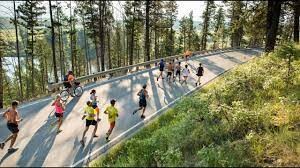
"I feel like the half marathon is maybe the younger sibling that doesn't get recognized as much as its older sibling, the signature marathon," Drobeck noted. "So, it's nice to see that. The half marathon... it is beautiful, and twice as many people do it as the marathon, so it's good to see it get a little recognition. It's well deserved."
This year's Missoula Marathon weekend runs from June 23 through June 25 with the half-marathon taking place on June 25. We'll have complete Missoula Marathon coverage right here on KPAX.
(06/12/2023) ⚡AMP
by Emily Brown
Missoula Marathon
Half and full marathon in Missoula, Montana, in the city they call "The Garden City." Amazing participation by the entire town and county. Front lawn hose squads cool down the runners en route. Lots of rest stations. The full marathon is a Boston qualifier. Runner's World rated the course as one of the best overall road races. ...
more...Edward Zakayo shifts to 10,000m, eyes World championships
Former world under 20 5,000m champion Edward Zakayo has shifted from the 5,000m to the 10,000m as he seeks qualifying time for the World Athletics Championships in Budapest, Hungary.
The former Commonwealth Games 5,000m bronze medalist Zakayo, who is returning to competition battling injury, said he is targeting both Budapest and Paris but feels the world championships have come too soon.
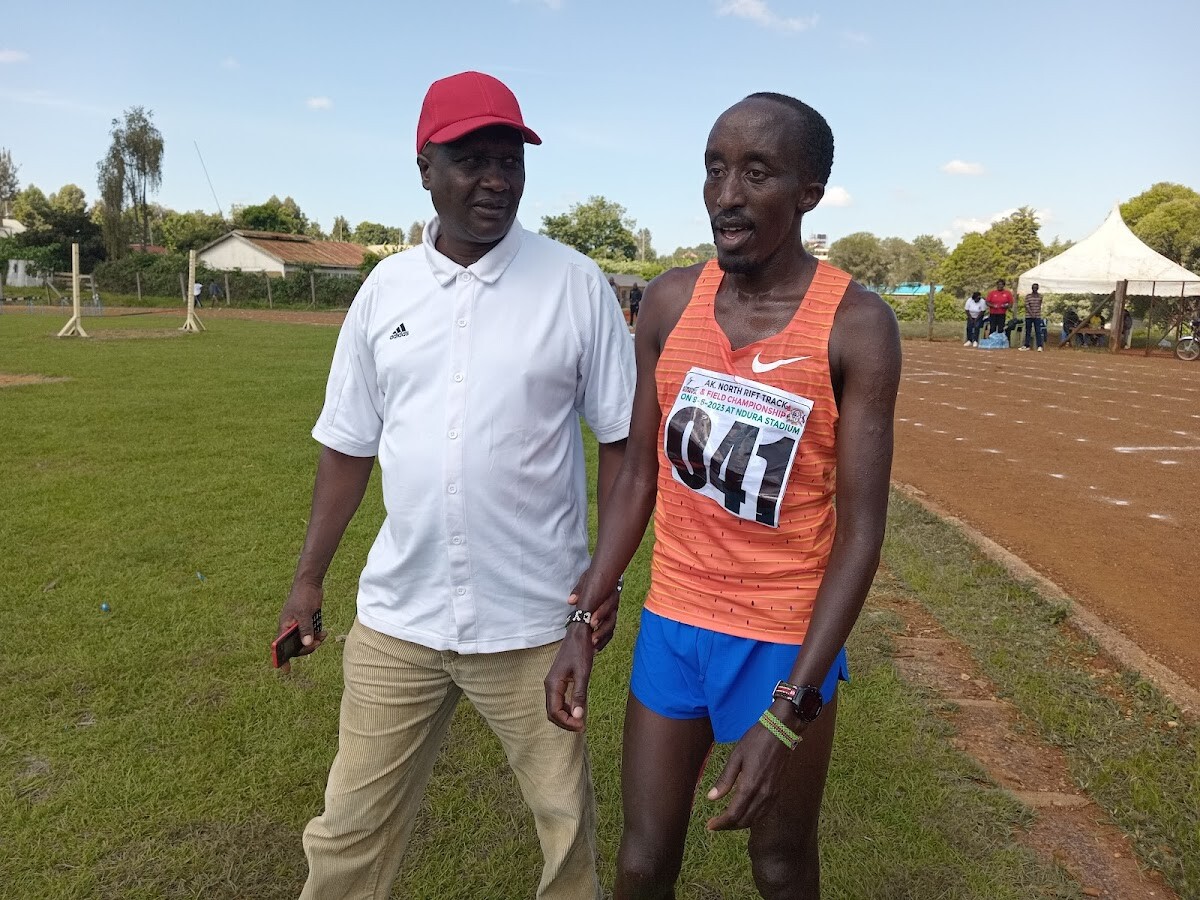
“For now, my coach and I have bigger plans of competing at the Olympic Games. Missing the World Championships will not a big deal. But we have to do what is possible to make the Olympics team. That is our target. We have a project in the camp for the Olympics,” said Zakayo.
Speaking in Kitale after winning the 10,000m title during the Athletics Kenya North Rift region championships at the Ndura Sports Complex, Zakayo added: “Right now, I am focusing on the 10,000m race. I feel great to run the 10,000m since it is long and enjoyable."
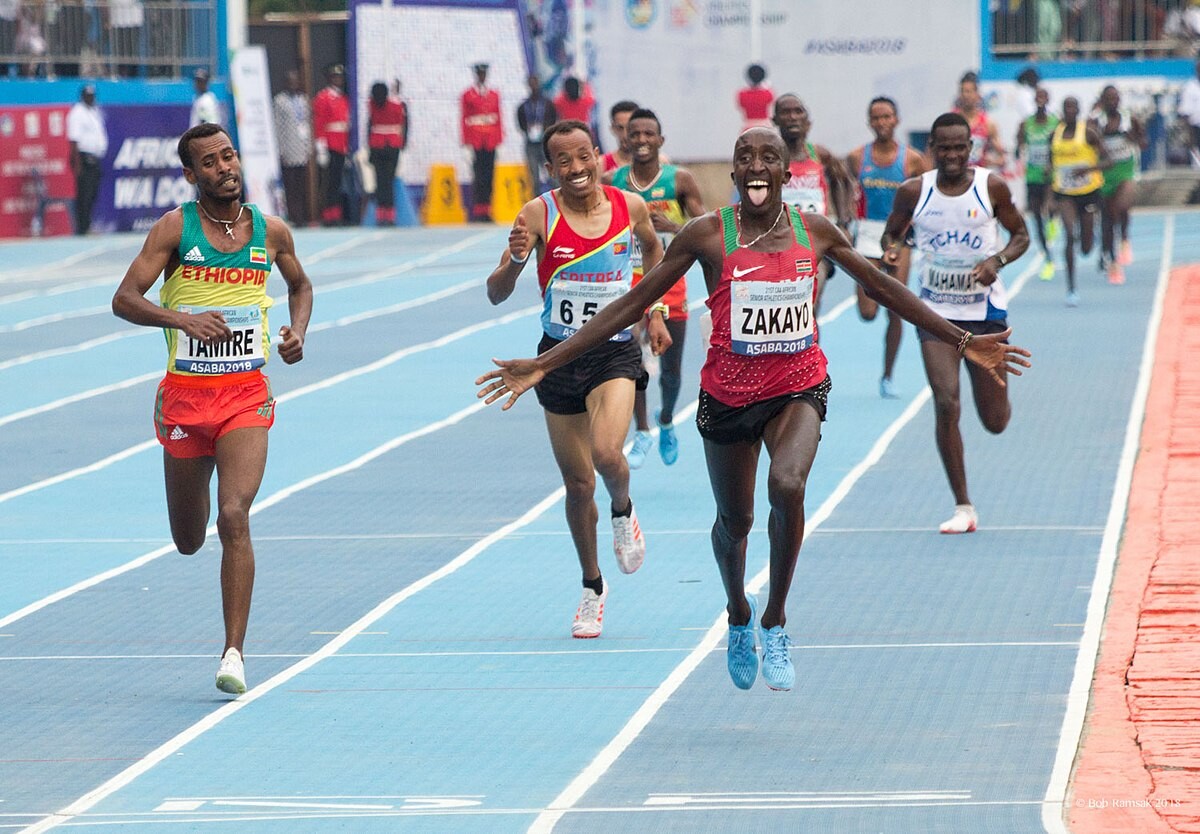
"When I run 10,000m, I enjoy it unlike the 5,000m race, which ends as soon as I start enjoying it,” he said.
Zakayo said the season started badly for him since he was still in pain and had lost form. However, he said he has recuperated successfully and even returned to training camp in Kapsait under coach Erick Kimaiyo.
“I haven't qualified for the World Championships and so I don't see if I will make Team Kenya. I have been missing the World Championships and I don’t know why. I train, gets in good shape but I still miss out at the trials, even if I have the qualifying time," he said.
He says it will need a quality field and race at the national championships for him to hit the WA standards.
“If I get quality athletes at the national championships, it will push me to qualify. I feel I have not been challenged enough,” he said.
(06/12/2023) ⚡AMPby Emmanuel Sabuni
World Athletics Championships Budapest 23
From August 19-27, 2023, Budapest will host the world's third largest sporting event, the World Athletics Championships. It is the largest sporting event in the history of Hungary, attended by athletes from more than 200 countries, whose news will reach more than one billion people. Athletics is the foundation of all sports. It represents strength, speed, dexterity and endurance, the...
more...Teferi runs 30:12 race record to win New York Mini 10k
Senbere Teferi outsprinted Hellen Obiri to win the New York Mini 10K in a PB and event record of 30:12 on Saturday (10).
Ethiopia’s 2015 world 5000m silver medallist Teferi beat Kenya’s two-time world 5000m gold medallist Obiri by seven seconds to retain her title in New York.
Teferi and Obiri broke away from the rest of the field in the first half of the race, leaving a chase group of Emily Sisson, Laura Galvan, Cynthia Limo, Keira D’Amato and Emily Durgin behind.
The leaders reached the 5km mark in 15:28, 10 seconds inside the half way split recorded by Teferi en route to her win in 30:43 in 2022.
Galvan and Sisson were seven seconds behind them at half way, with Limo and D’Amato another couple of seconds back.
Just before the clock showed 27 minutes, Teferi put in a surge and moved a stride ahead, but Obiri – who won the Boston Marathon in April and the NYC Half in March – was quick to cover it. A minute and a half later, it was Obiri’s turn to push the pace as they hit another hill, but again, Teferi – runner-up behind Obiri at the NYC Half – matched it and they continued to run shoulder to shoulder.
The six-mile marker sent a signal to Teferi and, clearly still feeling good, she kicked again. This time Obiri couldn’t respond and the 28-year-old sprinted away over the final 200m to a successful title defence.
“It was tough,” said Teferi, speaking through an interpreter. “From the beginning, we were running together. It was extremely competitive. On the uphills I could tell she (Obiri) was tiring a bit, so I could pull away then. I also know the course well, so that helped me.”
Although the fastest women’s 10km ever recorded on US soil, Teferi’s performance does not improve the US all-comers’ record as the undulating course is slightly downhill overall, and is therefore not record-eligible.
Mexico’s Galvan finished third in 31:14, while Sisson finished fourth (31:16) and D’Amato fifth (31:23).
Leading results
1 Senbere Teferi (ETH) 30:122 Hellen Obiri (KEN) 30:193 Laura Galvan (MEX) 31:144 Emily Sisson (USA) 31:165 Keira D’Amato (USA) 31:236 Cynthia Limo (KEN) 31:277 Emily Durgin (USA) 31:358 Kellyn Taylor (USA) 32:159 Edna Kiplagat (KEN) 32:1710 Emma Grace Hurley (USA) 32:32
(06/11/2023) ⚡AMPby World Athletics
New York Mini 10K
Join us for the NYRR New York Mini 10K, a race just for women. This race was made for you! It’s the world’s original women-only road race, founded in 1972 and named for the miniskirt, and it empowers women of all ages and fitness levels to be active and to look and feel great on the run. Every woman who...
more...Study finds speedwork (not hill repeats) more likely to cause stress fractures in runners
Fast efforts are more likely than tough hill sessions to lead to tibia (shin-bone) stress fractures, according to new research out of the University of Calgary. In fact, the same factors that can make hill work so gruelling might also help promote runners’ bone health.
The findings come from a study in which researchers enlisted 17 volunteers for treadmill runs up to 16 km/h, at five different slopes. Through complex modeling that also pulled information from motion-capture testing and a database of computerized tomography (CT) scans of volunteers’ tibia bones, researchers were able to get insights into the type of running that places greater stress on the tibia, which in turn is more likely to result in a stress fracture.
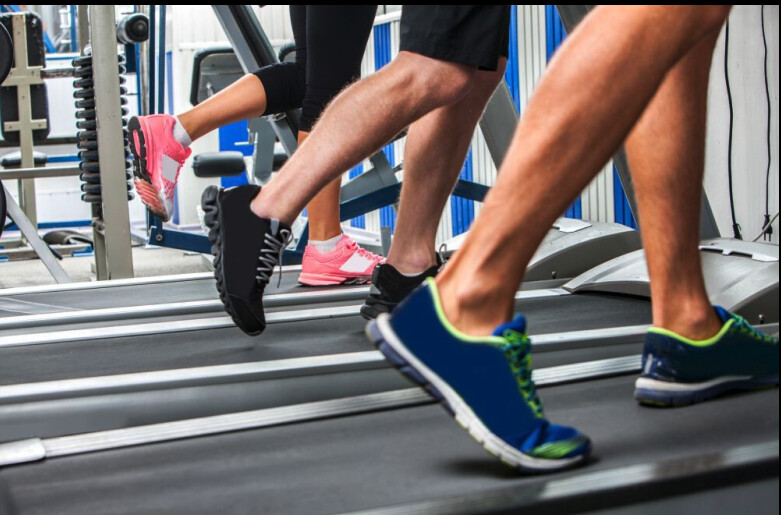

“I’ve really been interested in running biomechanics, and in particular, understanding why people get injured,” says Michael Baggaley of the University of Calgary’s faculty of kinesiology. He tells Canadian Running that although the link between increasing training intensity and a greater risk of tibial stress fractures is well established, he and his team wanted to understand what specific aspects of training were more likely to result in injury.
“We didn’t really see a difference in the damage potential when you run uphill or downhill relative to running on flat ground,” Baggaley says of his team’s findings, “but changing the speed that you run at really did change what we consider the damage potential.”
He suggests the body’s response to the challenge of running uphill helps protect runners from shin-bone stress.
“It can be counterintuitive, because uphill running is very exhausting, really taxing, but when you run uphill, you tend to run with a very quick cadence and a very short stride length,” he says. “So it’s actually these adaptations going uphill running that minimize the loading on the bone. Inadvertently, the fact that running uphill is so tough, that it costs so much energy and oxygen, actually causes you to change the way you run into a more protective manner for our body. Conversely, when you run fast [i.e., on flat ground], you take longer strides and spend more time in the air. All that requires more force to be placed on your body.”
He says while other factors, such as previous bone injuries or malnutrition, can increase susceptibility to stress fractures, the study does make a clear connection between running faster and increasing the risk of damage to the tibia. “The faster you’re trying to run, the more likely you are to be stressing the bones to a higher degree,” says Baggaley.
The takeway for runners, he says, is to take easy runs easy, and to be careful not to introduce too much speedwork too quickly into your training. “There’s a general premise that most runners spend too much time training too fast, and most of us should spend most of our runs at an easy, conversational pace. I think the results of this work support that notion, and that many people are putting themselves at a higher risk than is necessary in order to gain the training benefits of running.”
(06/11/2023) ⚡AMPby Running Magazine
Tom Cruise Wants You to Know He's Still a Runner
The "Mission: Impossible" star is famous for sprinting after the bad guys—and his form has only improved over the years.
Remember when we said Global Running Day is for everyone? We meant it! Wednesday’s celebrations were recognized by everyday runners, professional athletes, and even famous actors. Tom Cruise acknowledged the holiday by posting a GIF on Twitter of him running in his upcoming “Mission: Impossible” sequel.
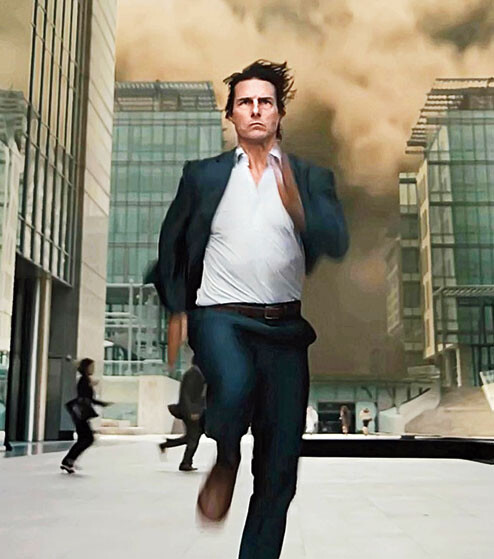
He wrote, “Running in #MissionImpossible movies since 1996. #GlobalRunningDay.”
The spry 60-year-old also shared the clip and caption on his Instagram story. His social media bios have long been dedicated to his athletic chops on the big screen, reading, “Running in movies since 1981,” referencing the year he appeared in his first onscreen roles for the films “Endless Love” and “Taps.”
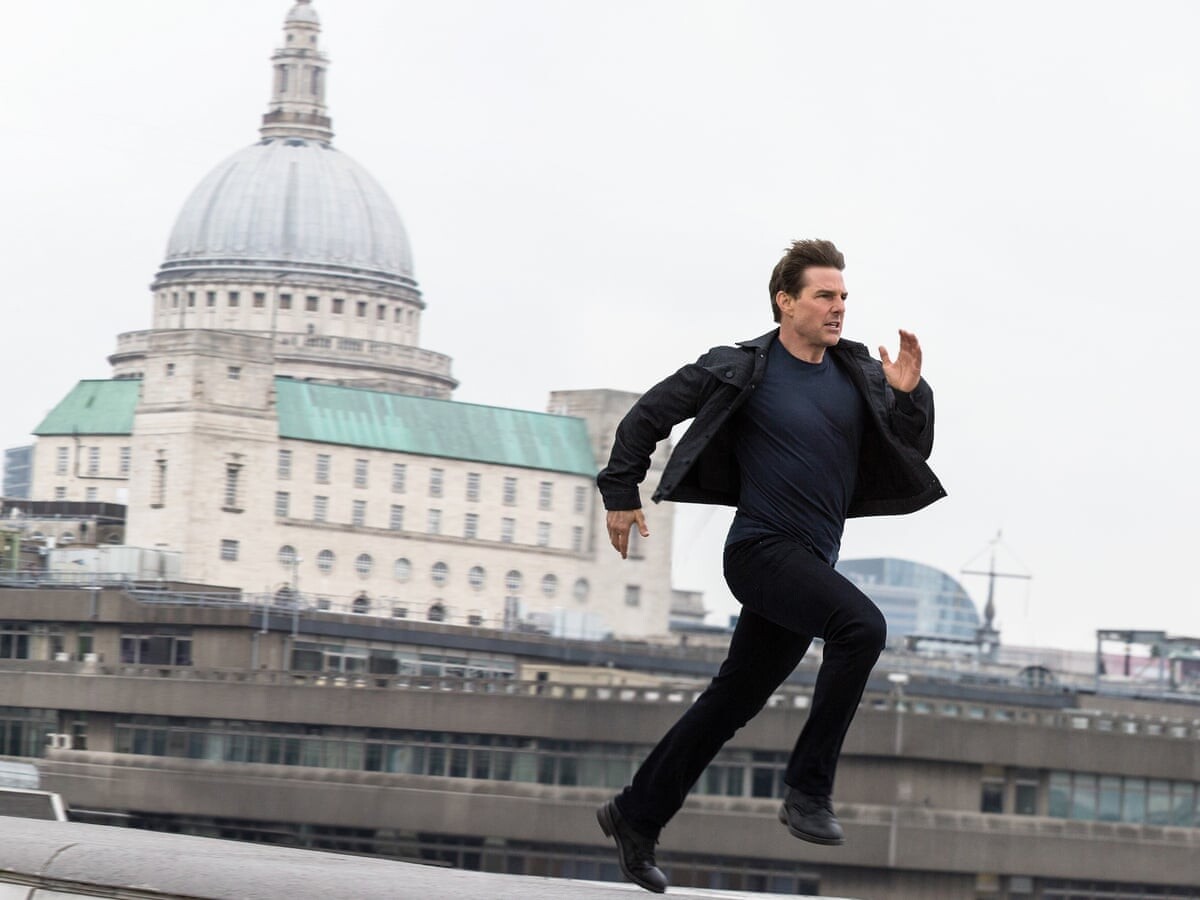
In the seventh “Mission: Impossible” film—and the first to be released since 2018—Cruise will reprise his role as Ethan Hunt, tracking down “a terrifying new weapon that threatens all of humanity before it falls into the wrong hands,” according to promotional material for the upcoming movie. As in all of the films in the franchise, Cruise will be doing quite a bit of onscreen running.
In one running blog’s count, as of last year, he’d run in 44 out of 52 movies. Cruise is known so much for his athleticism that there are YouTube videos documenting “Every Tom Cruise Run. Ever,” and ESPN has even called in experts to evaluate his form. Writer Ryan Hockensmith wrote, “In ‘The Outsiders’ and ‘Taps,’ Cruise runs quite a bit, and it’s a sloppy, under-developed run. It’s not until toward the end of ‘Risky Business’ in 1983 when Cruise vaults up his high school’s steps and jets through the hallways that the beginnings of a steady, faster form begins to emerge.”
As so many other runners have discovered, running economy, form, endurance, and overall ability really can improve with age and experience.
(06/11/2023) ⚡AMPby Runner’s World
RECORD-BREAKING WINS FOR TETE DIJANA AND GERDA STEYN AT 2023 COMRADES MARATHON
Dijana stripped more than four minutes off David Gatebe’s best time of 5:18:19, in 2019, while Steyn broke a 1989 record which was held by Frith van der Merwe.
Tete Dijana won the Comrades Marathon for the second consecutive year, with a record-breaking time of 5 hours, 13 minutes, and 58 seconds.
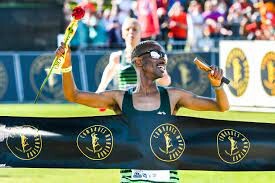
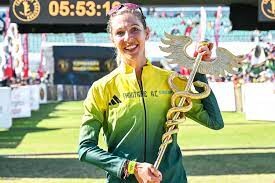
Dijana, who hails from the North West stripped more than four minutes off David Gatebe’s best time of 5:18:19, in 2019.
Meanwhile, Gerda Steyn won the women’s race of the 96th edition of the marathon, in a time of 5:44:56.
The Two Oceans winner also broke the down-run record, which was previously held by Frith van der Merwe in 1989 at a time of 5:54:43.
This year’s race was a downhill run from Pietermaritzburg to Durban, with about 17 000 runners taking part in the 87km race.
The Netherlands’ Piet Wiersma came in second, with Edward Mothibi taking the third spot in the men’s race, while Adele Broodryk came in second in the women’s race, with Carla Monilaro clinching the third. Prize money was awarded to the first ten men and women totaling $160,141US.
(06/11/2023) ⚡AMPComrades Marathon
Arguably the greatest ultra marathon in the world where athletes come from all over the world to combine muscle and mental strength to conquer the approx 90kilometers between the cities of Pietermaritzburg and Durban, the event owes its beginnings to the vision of one man, World War I veteran Vic Clapham. A soldier, a dreamer, who had campaigned in East...
more...Qualification System Published For Paris 2024 Olympic Games
The qualification system for athletics competition at the Paris 2024 Olympic Games, to be held between 2-11 August 2024, has been published.
As was the case for the Olympic Games in Tokyo and the World Athletics Championships Oregon22, the qualification system will be based on a dual pathway of qualification, with 50% of athletes qualifying through entry standards and the remaining 50% qualifying through World Rankings.
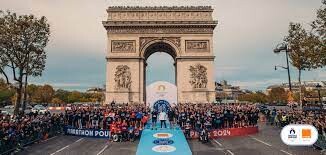
The qualification system was approved by the World Athletics Council and includes details of the qualification windows, targeted number of athletes per discipline and entry standards.
The programme will include 23 women’s events and 23 men’s events as well as two mixed events – the 4x400m mixed relay and the 35km mixed team race walk.
For the 10,000m, combined events, race walks and relays, the qualification period runs from 31 December 2022 to 30 June 2024.
For the marathon, the qualification window is from 1 November 2022 to 30 April 2024. For all other events, the qualification period runs from 1 July 2023 to 30 June 2024.
For the marathon, any athlete ranked higher than the 65th athlete on the filtered Quota Place “Road to Paris” list on 30 January 2024 will be considered qualified.
After 30 January 2024, the remaining 20% of the quota will be determined by the same dual pathway qualification criteria outlined above, without displacing the athletes qualified per 30 January 2024.
Any national Olympic committee may choose to reallocate a quota place to an unqualified athlete, provided the athlete in the qualification window has achieved at least a 2:11:30 (men) or 2:29:30 (women) performance.World Athletics will publish the official qualification monitoring tool (Road to Paris) on the Stats Zone of the World Athletics website in the latter part of 2023.
Nassau in The Bahamas will host the World Athletics Relays, the main Olympic qualifying event for the relays, in April/May 2024 (dates to be confirmed).
The current sport-by-sport schedule for the Paris 2024 Olympic Games, which outlines the start and finish times of each session, can be found on the Paris 2024 website. Olympic Games ticketing is also now open.
Organisers have revealed the routes for the Olympic marathon and the two races – a 42.195km course and a 10km course – that will be open to the general public as part of mass event running.
(06/11/2023) ⚡AMP13 Races for the Runners Who Love a Beer After a Run
Thirsty for a brew? You can crack a cold one postrun at these races.
Sure, the beverage most closely associated with running long distances is probably water, with sport drinks as a close second. But many other races are being organized around beer. That’s right, runners (like everyone else) love to crack open a cold one, and every year more races pop up in the United States that are geared specifically toward beer.
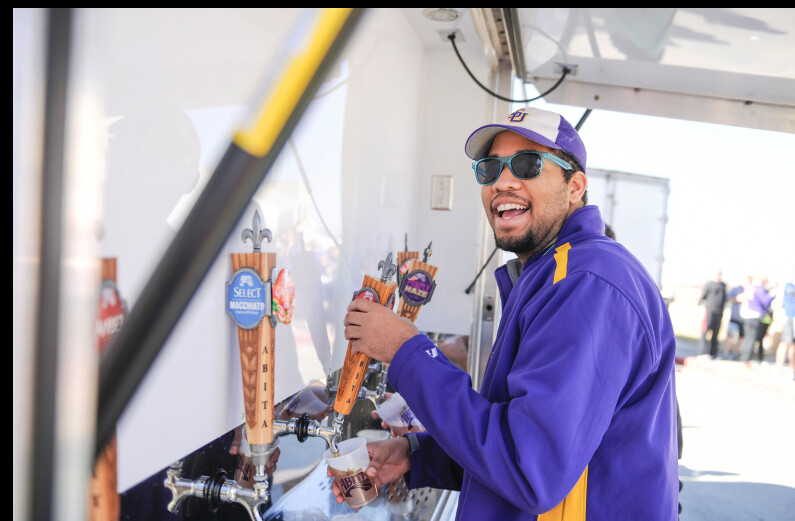
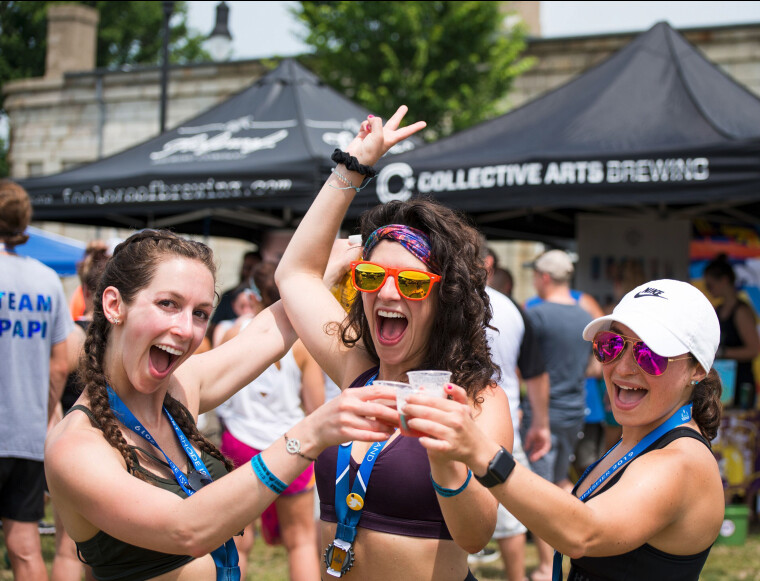
After all, finishing a race deserves a celebration and there’s no better way to celebrate than cheersing a pint with your best mates (while wearing split shorts and a singlet obviously.) And if you’re ditching alcohol this season, you can still partake in these races in spirit with your favorite non-alcoholic beverage.
For obvious reasons, most of these races save the drinking for after the finish line, but that’s not always the case. And while many marathons give finishers an honorary beer, some of these beer-themed races aren’t so quick to cut you off. Whether you’re a beer snob or just looking for an adventure, these races are a great addition to your racing repertoire, and so we’ve rounded up a list of some of the best around the country.
Here are 13 incredible races that give you the opportunity to sip a brew after you run.
Craft Brew Races
Location: Various in New England Date: Various
Loads of races hand out a beer at the end, but few are actually themed entirely around beer. The Craft Brew Races, a series of beer-themed runs around New England are just that. After the race, there’s a three-hour-long festival where runners can try dozens of local craft beers. Just make sure that if you sign up for the run you also recruit a designated driver to pick you up.
The Louisiana Marathon and Half Marathon
Location: Baton Rogue, Louisiana Date: January 14, 2024
While not technically a brewery-themed race, the 2023 Louisiana Marathon had six beer tags attached to runners’ bibs. Yes, that’s correct. Finishers of this race were treated to a six-pack of beer, and with several local brews to choose from, the variety won’t disappoint. Enjoy some gumbo and a few brews afterward. As they say in Baton Rogue, “Laissez les bon temps rouler!” (Translation— Let the good times roll!)
Yuengling Shamrock Marathon
Location: Virginia Beach, Virginia Date: March 17, 2024
If you’re looking for a great weekend for a beer race, an obvious choice would be St. Patrick’s Day weekend. It is, after all, a holiday celebrated almost exclusively by drinking. Virginia Beach’s race weekend, which includes a full gamut of distances to choose from, is sponsored by Yuengling and passes out beer flights to finishers. Plus, since it’s St. Patty’s, you can roll the postrace celebration into general festivities.
The Growler Team Relay
Location: Ashburn, Virginia & Virginia Beach, Virginia Date: April 15, 2023 and December 9, 2023
Running and drinking are usually more fun with friends, or at least that’s the viewpoint taken by the organizers of these Virginia races. With six legs, each team will race 33.5 miles with anywhere from two to six runners handing off the baton at the checkpoints. When teams finish, each participant receives a pint glass and plenty of beer. What makes the race even more interesting is that the routes you take in each leg are up to you. Sure you’ve got the same start and finish point, but you can get there any way you choose.
Cottonmouth Beerlay
Location: Greenville, South Carolina Date: June 3, 2023
While most races put the drinking at the end of the race, the Cottonmouth Beerlay is here to make things a little more, shall we say, interesting. The 8-mile course consists of four 2-mile loops. Before each loop, the runner must chug down a beer. If you sign up for the race in a relay, that seems doable, but individuals will be drinking at least four beers while tackling the wooded course. If you aren’t deathly ill when you finish, you can always celebrate with yet another beer.
Beer Mile World Classic
Location: Chicago, Illinois Date: July 1, 2023
While the Cottonmouth Beerlay is mostly run and games, the Beer Mile World Classic is a sporting event. These people are serious about running the “beer mile” as fast as possible, and by “beer mile” we mean running four laps around a track while chugging down a beer before each loop. The Beer Mile World Classic has slots early in the day for amateur runners, but as the day goes on, you’ll get to watch some top-notch competition. People train for this believe it or not.
Craft Classic Half Marathon and 5K
Location: Seattle, Washington Date: July 30, 2023
Seattle is a town known for its craft brewery scene, so it makes total sense that it would also host a beer-themed half marathon and 5K. The course is flat and scenic, and there is beer waiting for you at the end (which you’ll need after running in July). It’s said that runners receive a custom bottle opener at the finish. What a cute, useful little prize to win, especially if you already have 500 running T-shirts.
Dogfish Dash
Location: Milton, Delaware Date: September 24, 2023
You need to be 21-plus just to access the website for this race. The Dogfish Dash, which is sponsored by the Dogfish Head Craft Brewery, is a 5K-ish distance race around Milton, Delaware. Obviously, finishers are treated to some of the brewery’s finest beers, but you’ll also get some cool swag. This race prides itself on sustainability as well, meaning that not only do you get reusable shopping bags and water bottles for finishing, but also if you wear a costume made of recycled materials, you get entered for a special prize. Time to start working on your Pepsi can racing shorts.
Time to start working on your Pepsi can racing shorts.
Milwaukee Beer Run
Location: Milwaukee, Wisconsin Date: October 8, 2023
If you happen to be on the other side of Lake Michigan during Oktoberfest, you can run the Milwaukee Beer Run, and let’s be honest Milwaukee knows its beers. The 5K race ends at The Bavarian Bierhaus, where you’ll get a free beer (or root beer for our sober crowd). The race entry also comes with a pass into Milwaukee’s Original Oktoberfest, so you can really keep that energy going all day. Also, there is a .05 mile race (which is 54 yards) for those who want the medal and beer without actually doing much running.
Kona Oktoberfest Run
Location: Royal Oak, Michigan Date: October 8, 2023
Oktoberfest is the St. Patty’s Day of the fall, right? While you might think that this race is put on by Kona Brewing Company in Hawaii, it’s actually hosted by the Kona Running Company in Michigan. The race does, however, come with a plentiful supply of beer, as the post-race festivities include an Oktoberfest event complete with steins of ale and giant pretzels. Runners are also encouraged to run the 5K or 10K wearing Bavarian gear.
Great American Brewery Runs
Location: Various Date: Various
Great American Brewery Runs are almost more of a beer race aggregator than a specific event. They host races all over the East Coast that involve beer, but the specifics and distances vary. There’s a 50K relay, a 5,000 yard dash, and everything else in between. What they all have in common, though, is the inclusion of beer, and how can you say no to that? Might as well sign up for them all.
Shiner Beer Run
Location: Shiner, Texas Date: November 18, 2023
The Shiner Beer Run, which is hosted by the Spoetzl Brewery in Shiner, Texas, is obviously giving out Shiner Bock beer to entrants, and the race ends at the brewery where you can grab food and beers postrace. But, the prerace packet pick up is also at the Spoetzel Brewery the day before, where you can carb load the day before.
The Beer and Bagel Off-Road Race
Location: Various Date: Various
The Beer and Bagel Off-Road Race is sort of a bizarre mixture of things thrown together, but who are we to question it. Beer and bagels—both made of wheat so it works! Plus, there’s also said to be a Sasquatch running around on the course. We’re serious! The series has races all over the Midwest, South, and East, and looks like a great time.
(06/11/2023) ⚡AMPby Runner’s World
Ethiopia selects marathon squad for the marathon event at the 2023 World Athletics Championships in Budapest
The Ethiopian Athletics Federation has selected 12 athletes to compete in the marathon events at the 2023 World Athletics Championships in Budapest, Hungary, from August 19–27.
Leading the Ethiopian marathon squad are defending champions Tamirat Tola and Gotytom Gebreslase, who won the men’s marathon gold at the 2022 World Championships.

Following their world rankings and personal best times last year, the EAF selected 12 marathon competitors (six men and six women) to compete in the 2023 World Athletics Championships in Budapest. Reigning world champions Tamirat Tola and Gotytom Gebreslase, who won the gold medal in the marathon at the 2022 World Athletics Championships in Oregon, are among them.
Tsegaye Getachew, Chalu Deso, Leul Gebresillassie, Seifu Tura, and Amhed Essa will represent the Ethiopian men’s squad, while Worknish Edessa, Megertu Alemu, Yalemzerf Yehualaw, Tsehaye Gemechu, and Amane Beriso will represent the women’s team.
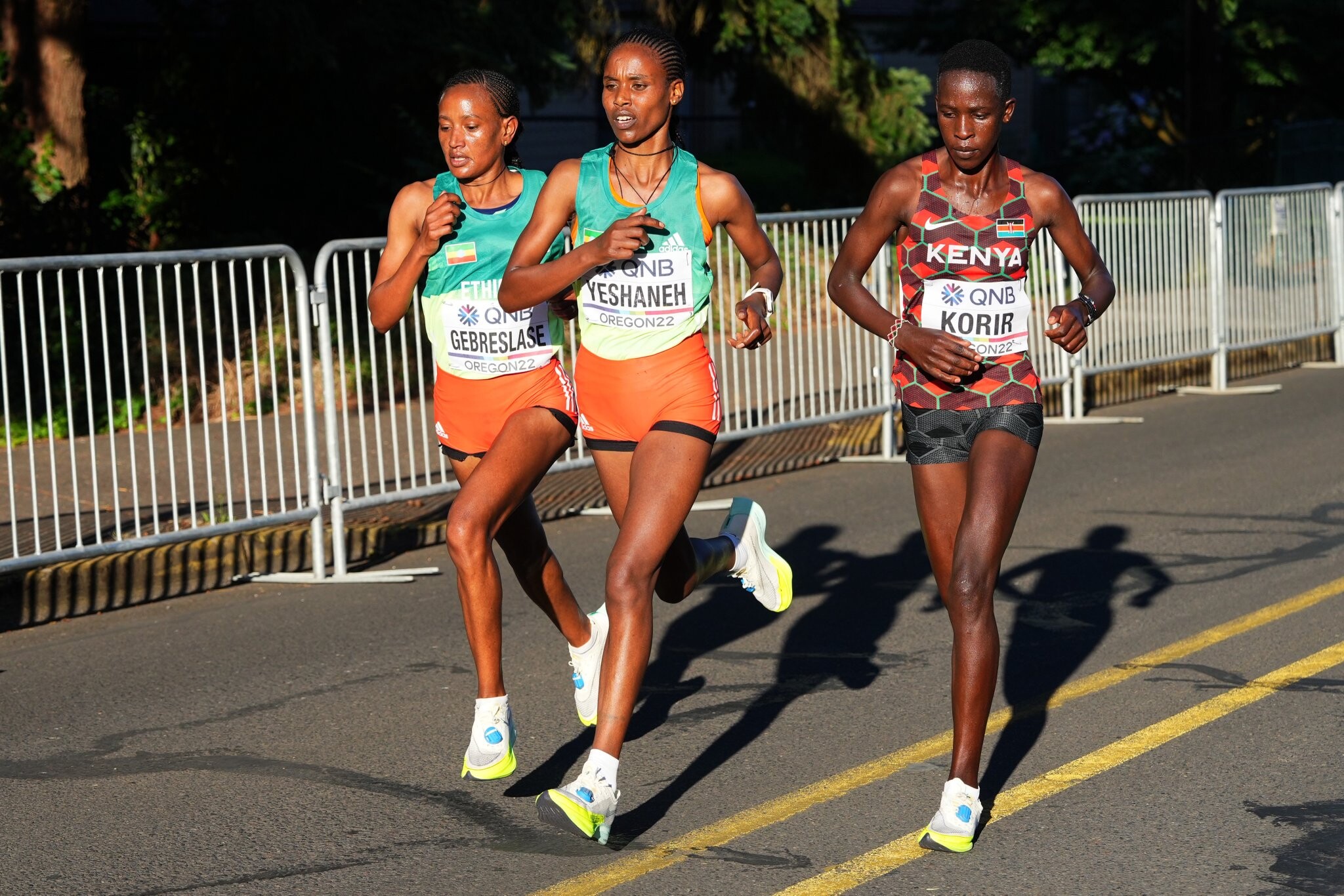
The EAF has announced that all selected athletes will attend a training camp starting June 14, 2023, to begin their usual two-month preparation. The EAF has also appointed two national team coaches to oversee the athletes as they prepare for the competition.
The EAF stated that after the two months of training camps, three athletes will be chosen to join the two defending champions to represent Ethiopia at the World Championships.
EAF Technical Director Asfaw Dagne told The Reporter, “The two months of training will be followed by the selection of the top three athletes. Their health condition and performance after their training in those two months will determine the final selections.”
World Athletics published the qualification standards for the championships, including lists of courses and competitions that comply with the standards. According to the qualification standards, athletes must achieve qualifying performances on a course measured by World Athletics and graded by the Association of International Marathon and Distance Races (AIMS).
Athletes must meet a minimum time of 2:09:40 for men and 2:28:00 for women.
(06/10/2023) ⚡AMPby Dawit Tolesa
World Athletics Championships Budapest 23
From August 19-27, 2023, Budapest will host the world's third largest sporting event, the World Athletics Championships. It is the largest sporting event in the history of Hungary, attended by athletes from more than 200 countries, whose news will reach more than one billion people. Athletics is the foundation of all sports. It represents strength, speed, dexterity and endurance, the...
more...Jakob Ingebrigtsen shattered the two mile world record in Paris
Jakob Ingebrigtsen made history on Friday in Paris, running 7:54.10 in the two mile to break Daniel Komen’s mark that had stood since 1997.
Though the event isn’t frequently run, Komen’s time of 7:58.61 had taken on a mythical quality because of its longevity.
The distance was a perfect combination for Ingebrigtsen who has global gold medals in the 1500m and 5000m.
On Friday, the Norwegian was accompanied by two rabbits from the start and quickly separated himself from the rest of the pack. Ingebrigtsen never wavered from the pace, following the pacers through splits of 2:29.07 for 1000m and 4:56.95 for 2000m.
With 400 meters remaining, Ingebrigtsen only needed a 60-second close to get the record. He had much more to give than that, ripping off a 56-second 400m to obliterate the old mark.
En route, Ingebrigtsen passed 3000m in 7:24.07. That’s the third fastest time in history behind Komen and Hicham El Guerrouj
The race was just the second of Ingebrigtsen’s outdoor campaign. He opened his season with a victory in the Rabat Diamond League in 3:32.59.
Ingebrigtsen also owns the fastest time in history in the indoor 1500m, a 3:30.60 from Lievin.
(06/10/2023) ⚡AMPby Flo Track
Former Champions Highlight Strong 2023 Grandma’s Marathon Field
Several former champions will return to this year’s Grandma’s Marathon, highlighting a field that’s expected to include some of the best American distance runners ahead of next year’s U.S. Olympic Trials.
GRANDMA’S MARATHON

Defending champion and event record holder Dominic Ondoro returns on the men’s side, that after winning his second Grandma’s Marathon last summer. He’s joined by countrymen and former champions themselves, Milton Rotich and Elisha Barno.
Ondoro, who broke Dick Beardsley’s longtime event record with his winning run in 2014, will be trying to become just the second man to win three or more Grandma’s Marathons. The only to have done it so far is Barno, who won four straight titles from 2015-18.

NOTE: Elisha Barno will be officially inducted on Friday, June 16 into the Grandma’s Marathon Hall of Fame as part of the Class of 2023, making him the first athlete inducted since 2017.
Kevin Lynch not only leads a pack of American men aiming to qualify for the U.S. Olympic Trials, but is also hoping to become the first American men’s winner of Grandma’s Marathon since Chris Raabe did it in 2009.
Minnesotan and fan favorite Dakotah Lindwurm returns on the women’s side as a favorite to win her third-straight Grandma’s Marathon, which would make her the third woman to accomplish that feat.
New Zealand’s Lorraine Moller won three straight women’s races from 1979-81, and American Mary Akor then did it from 2007-09.
Lindwurm’s personal record of 2:25:01, which she ran in last year’s winning effort at Grandma’s Marathon, is more than four minutes better than any other woman in the field, though Gabriella Rooker is back this year after finishing 10th place last summer in her Duluth debut.
GARRY BJORKLUND HALF MARATHON
Neither the men’s or the women’s defending champion is back in the Garry Bjorklund Half Marathon, but 2016 winner Macdonard Ondara is back this year for his fourth run in Duluth. He will lead a strong group of returners on the men’s side, with each of the top five runners having been here before.
Garry Bjorklund Half Marathon rookie Lydia Mathathi leads things on the women’s side, and the Kenyan’s personal best is a time that, if repeated, would break the storied mark of Duluth native Kara Goucher. Followed by four Americans who are also making their debut in Duluth, Mathathi would be the first Kenyan to win this race since Monicah Ngige in 2018.
(06/10/2023) ⚡AMPby Running USA
Grandmas Marathon
Grandma's Marathon began in 1977 when a group of local runners planned a scenic road race from Two Harbors to Duluth, Minnesota. There were just 150 participants that year, but organizers knew they had discovered something special. The marathon received its name from the Duluth-based group of famous Grandma's restaurants, its first major sponsor. The level of sponsorship with the...
more...How This Guy Lost 300 Pounds and Became a Half-Marathoner
Finding a community through running keeps him going.
I’ve been a yo-yo dieter for much of my life. Except where some people lose ten or twenty pounds, then gain it back, I’ve lost hundreds of pounds at a time. And then I’d gain it back. Not slowly, either. It came back fast, for all kinds of reasons. At one point I was 370 pounds, and over a year got down to 180. I’m 5’10”, so that’s a good weight for me. But I gained it all back. That happened multiple times.

So in January of 2019 I was 480 pounds. I couldn't walk more than five or ten feet without needing to sit down. That's how bad it was. And I travel a lot for work, meeting customers, so here I am this 480-pound guy who can barely move more than 10 feet, but I’m carrying my luggage and my laptop and looking like a mess.
My inspiration to change
I was struggling to walk through the Raleigh-Durham airport and everything just kind of hit me all at once. I knew I felt terrible, and I knew I looked terrible. Clients had watched me struggle to climb a set of stairs. We’d recently gotten new badge photos and I thought it was the worst picture I’d ever seen of myself. My relationships were strained because I was depressed about my size.
And I’m an alcoholic. May 30, 2019, I had my last drink. I was someone who would black out and not remember what I did while I was drunk, plus I hated the way I felt the next day. Alongside losing weight, I decided I needed drinking out of my life.
I’m not going to make it sound easy. I had some really sick days as my body responded to going sober. And it’s a challenge. On a whiteboard in my house I have a tally of how many days I’ve been sober, how many days I’ve not smoked, how many I haven’t gambled. That board motivates me.
I had started using the Lose It!! app and counting my calories. I cut down my calories quite a bit because I couldn’t exercise much until I lost weight. Then I got so I could go to a gym that had just opened around the corner from me. I really got into spin classes and doing a lot of cardio. And once I quit drinking, it just supercharged my weight loss.
The first month of not drinking, I dropped about 45 pounds.
Then I got diagnosed with multiple sclerosis. I’d had neurological issues before, but it had seemed a one-off thing. Once I knew it was multiple sclerosis, I realized the stakes for keeping the weight off had just been raised.
Friends inspired me, too
I had a couple of people who really inspired me to start running. One, in Raleigh, is probably one of the healthiest people I know, and swears by running half-marathons. She really sold me on the idea. Another is my cousin Ian, who runs marathons. He told me about the sense of community he gets from it, and that really appealed to me, too.
I dove right in. It was during the pandemic, so my earliest races were all virtual competitions. My first in-person race was a half-marathon. And I’ve been doing it ever since.
I’m 5’10”, and at my heaviest I was at 480 pounds. Since then I’ve dropped 312 pounds, then put on about 20 pounds of muscle, so I’m at 188 these days. I still keep my count of days sober, without a drink, and without gambling. I recently did the Brooklyn half-marathon, with a time of 2:44:48.
All of these numbers and stats help me see my progress, but a big part of what keeps me running is feeling like I’m part of something. There’s such an endorphin rush from going out there and running with other people, knowing I’m doing these things for my health. Ultimately, the numbers don’t matter as much as the feeling of support and knowing I’m not alone. I never could have done this alone, even if I had to be the one to help myself first.
That’s what I tell people who are looking to get into running. Just getting to the starting line is a victory. You’re not going out there to be the fastest person. If you lined up to run a race, you've already won. You're proving to yourself just how much you’re capable of doing. Thinking that way, and being honest with myself, is what keeps me going every day.
(06/10/2023) ⚡AMPby Men’s Health
Steph Catudal shares how ultrarunning husband's terrifying illness sparked transformation
Steph Catudal felt her world unravel in 2020 when her husband, famed U.S. ultramarathoner Tommy Rivers Puzey (a.k.a. Tommy Rivs), was diagnosed with a rare form of lung cancer that put him into a medically induced coma for 84 days. The crisis forced Catudal, who was born and raised in Montreal, to face not only an uncertain future, but also pent-up anger and unprocessed grief from her own past.
The author explores the heights and depths of her years-long journey to self-acceptance in Everything All At Once , which comes out May 30. From the tragedy of losing her father to cancer to her supporting Puzey on his road to remission and his being declared free of the disease, the memoir shares lessons Catudal says required time and patience to fully grasp.

“I started writing this book about 10 years ago actually, long before Rivs was diagnosed with cancer. I wanted to tell the story of my adolescent grief of losing my father—it was a story that affected me so deeply and throughout my life,” says Catudal. “I wanted to connect to other people who similarly experienced grief. But it never felt finished. The book never felt done even though I had typed the last words, so I kind of left it on the back burner.”
“When Rivs got sick, I went through an entire self-transformation, and I realized part of the reason why my book didn’t feel finished was because my healing journey still wasn’t finished, and I hadn’t learned all the lessons that I needed to, that I ended up learning through Rivs’ illness. When he was sick, I wrote a lot and posted my writing on social media, and what I wrote resonated with a lot of people and it made me feel a lot less lonely during a lonely time–that human connection in a really isolated time in my life. So I think I wrote the book to further that connection, to broaden the network of those who have experienced grief, which everyone has experienced in life, no matter what the situation is.”
Catudal, who lives with Puzey and their three daughters, says that while writing the memoir was cathartic, she hopes the book can be an aid to others as they navigate their own unique challenges.
“Mostly I hope that it helps people learn self-acceptance,” she says. “It was a long road for me to accept myself. It’s important to accept all of who you are—the brokenness, the anger and also the gratitude and the joy—and just know that you’re OK wherever you’re at.”
“Another hope I have for what people take from this is that no matter what we’re going through, there is love all around. It’s woven into every human experience, and you just have to look to see it. Even if you feel like you’re in the depths of loneliness, there is always love there.”
She says sharing her story with readers has given her a new opportunity to practise acceptance.
“It’s both really exciting and, in a way, nerve-racking to put so much of your life, your feelings and your introspection into a book that people can take and they could either love it or they could hate it. I just have to be OK with letting it go out into the world.”
The publication of Catudal’s memoir also comes with the satisfaction of seeing a long, gruelling challenge to the very end—a feeling her ultrarunning husband knows very well.
“Rivs tells me that this is my own ultramarathon—the daily deposits of writing a page if I could, whenever I had the time,” says Catudal.
“I did it through newborn babies and grad school and sleepless nights, so there’s definitely a sense of pride and accomplishment.”
Look for our review of Everything All At Once in the July/August 2023 issue of Canadian Running.
(06/10/2023) ⚡AMPby Running Magazine
Runners beware: tick season poses increasing threat
If brushes with ticks seem to be increasingly common on your trail runs, odds are the uptick in skin-crawling encounters isn’t just in your head. Recent research shows not only that the tick population in Canada is continuing to branch out into new areas, but also that ticks carrying the bacterium that causes Lyme disease have a better chance of surviving the winter than those not infected.
Rates ticking upward


A new study published in the online journal Insect Science shows that female ticks infected with the Borrelia burgdorferi bacterium have greater survivability rates over the winter months, suggesting that a greater proportion of the tick population will be able to spread Lyme disease as more of the blood-eating mites surface in the spring.
In addition, rising temperatures linked to climate change are making areas of the country previously unpopulated by ticks fertile ground for the parasites. Nick Ogden, a senior researcher with the Public Health Agency of Canada (PHAC), recently told the CBC that “there’s quite a lot of evidence to support the idea that really a major driver of the emergence of ticks has been recent climate change. Because of the warming climate, the new geographic footprint of Canada from Manitoba eastward that’s suitable for the ticks is increasing all the time.”
Statistics from PHAC, which tracks cases of Lyme disease across Canada, reveals a clear upward trend in the number of annual cases reported over the past decade. The numbers of human cases have exploded from 144 in 2009 to 3,147 in 2021.
Dress defensively
Although a quick brush with a blade of grass can be enough for a tick to hop a ride on an unsuspecting runner, forested areas—particularly in Ontario, Quebec and Nova Scotia—are hotspots for blacklegged ticks and other species of the parasite capable of spreading Lyme disease. Dressing strategically is the first line of defence to protecting yourself. Keep covered by wearing tights or long pants tucked into your socks and sporting a long-sleeved shirt, and spray your clothing with pest repellent.
Spotting stowaways
Don’t wait until the end of your run to check yourself for ticks. Stopping for a snack or gear adjustment on the trail can be a good time to do a spot-check for any stowaways. Quick scans can also be done on the run; running single-file on a group outing will make it easier for your friends to have your back, and vice versa, allowing you to spot ticks you wouldn’t otherwise be able to see. While a hot, soapy shower is likely already part of your post trail-run routine, it’s also a good opportunity to do a more thorough tick check. A long shower can also free a tick from your skin that hasn’t yet embedded itself.
If you find a tick …
Ticks need to be attached for at least 24 hours to transmit the bacteria that causes Lyme disease, so you’ll likely be able to avoid infection by spotting and removing the tick right away. If you do spot an embedded tick, a pair of fine-tipped tweezers will be your best tool for extractions. Use the tweezers to grab the tick as close to the skin as possible, and pull upward, making sure no part of the tick remains. Use soap and water to clean the bite area and apply antiseptic.
Seeking medical treatment
Seeing a doctor after removing a tick—especially one that had become embedded in the skin—will cut your chances of developing Lyme disease, an illness that carries flu-like symptoms that can be chronic and debilitating. Medical treatment becomes crucial if you develop flu-like symptoms or the telltale “bull’s eye” rash around the bite site, but you may still be susceptible to infection without these warning signs. A doctor may start you on a course of antibiotics to prevent Lyme disease and other illnesses transmitted by ticks.
(06/10/2023) ⚡AMPby Running magazine
Men’s 3000m Steeplechase: Mr Second Place, Gets His Second World Record of 2023
For most of his career, Lamecha Girma was known for finishing second.
At the 2019 World Championships in Doha, Girma got the silver medal in the steeplechase losing to Conseslus Kipruto of Kenya. At the 2021 Olympics in Tokyo, he got the silver medal losing to Soufiane El Bakkali. At the 2022 World Indoor Championships in Belgrade, he got the silver medal in the 3,000m flat losing to his fellow countryman Selemon Barega.
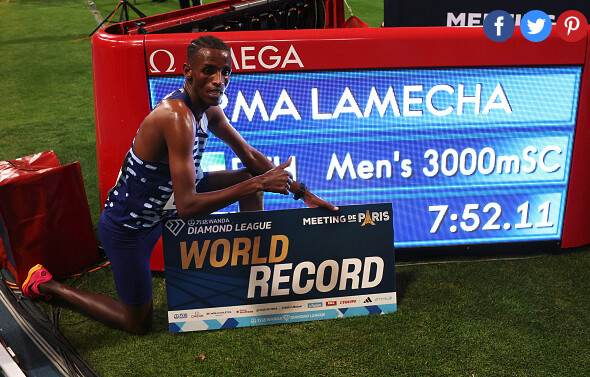
Finally, in Eugene last year for the World Championship, he got the silver medal once more, losing to the man who is now his fiercest rival, El Bakkali.
Girma’s fate has changed in 2023 and second took on a whole different meaning Friday night in Paris as Girma ran a sensational 7:52.11 in the 3000m steeplechase to break Saif Saaeed Shaheen’s nearly 19 year-old world record of 7:53.63. It was Girma’s second world record of 2023, to go with his 7:23.81 indoor 3000m record.
The RaceGirma was hot on the pace right from the gun, pressing the two pacers in front of him as soon as the three of them were in a single-file line together. The wavelight technology was set to the WR of 7:53.63, so Girma knew exactly where he was in relation to making history. The pacemaker’s assignment was not clear watching the race, as Girma went by the second pacemaker with more than four laps remaining in the race. Passing the pacemaker who was on schedule for the world record displayed the fact that Girma meant business. The wavelights were well behind him as he hit 4:41 with three laps remaining.
His second kilometer was a blistering 2:35, hitting 2,000m at 5:12.5, a full six seconds faster than Shaheen during his world record performance. As the laps went on, Girma definitely was tiring, as the water jumps looked to take more and more out of him. As he hit the bell, the distance from him to the front of the wavelight (the previous WR) was shrinking.
The Ethiopian was about even with the lights with 300m to go and looked exhausted, but he found another gear and lengthened his lead from the lights with 200m to go and cleanly cleared the final two barriers en route to his new WR of 7:52.11.
Quick Take: Girma’s WR was no surprise to him
On the LetsRun.com homepage, 80% of voters said that Girma would not take down the steeplechase world record. Nonetheless, there was reason to believe in Girma tonight. Girma broke Daniel Komen’s indoor 3,000m WR less than four months ago and Komen’s records are known as some of the most elusive on the books. If that was too far away for your liking, Girma also ran a 7:26.18 outdoor 3,000m in Doha in May to beat a very strong field. He even beat his rival El Bakkali by approximately seven seconds in that race.
After the race, Girma said “I felt so fast during the race, so confident. The world record is not a surprise, I planned to beat it tonight in Paris. It’s a result of full determination.”
(06/10/2023) ⚡AMPby Let’s Run
2023 Trail World Championships 80k Women’s Race
As with the men’s race, some of the pre-race favorites bowed out of the race early on with Blandine L’Hirondel (pre-race interview) dropping on the “start loop” out of Neustift due to foot pain from an existing injury. The rest of the field charged on, led up the first climb by Marcela Vašínová (pre-race interview) of the Czech Republic, Martina Valmassoi (pre-race interview) of Italy, and Akiyama Honokaof Japan.
The top five, made up of Allison Baca of the U.S., Vašínová, Azara García of Spain, Valmassoi, and Honoka, all came back through the village of Neustift at 18k and headed out into the mountains toward Innsbruck within two and a half minutes of each other.
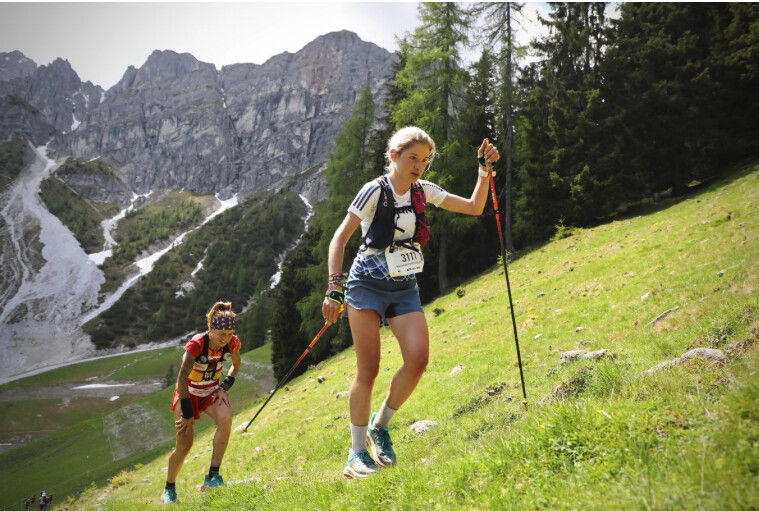
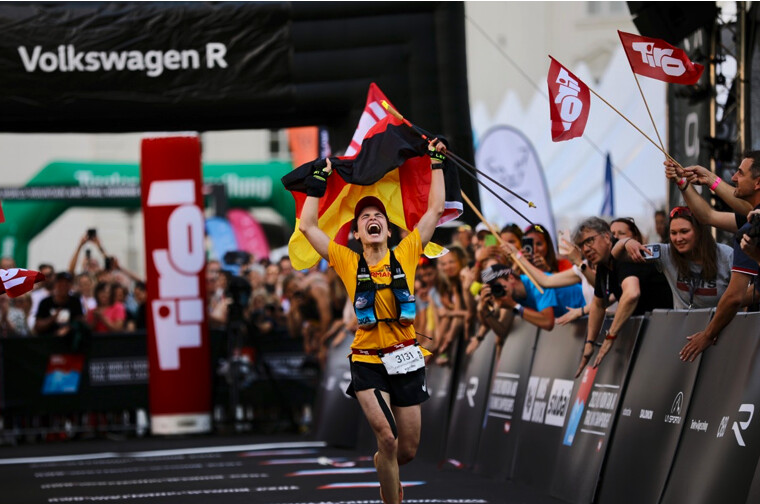
The front of the race continued to reshuffle up the day’s biggest climb, that 1,400-meter (4,600 feet) doozy. Vašínová continued to lead with a smile, opening up a sizable gap to Germany’s Katharina Hartmuth and Valmassoi, who were running within a minute of each other 36k into the race. Baca and Rosanna Buchauer of Germany rounded out the top five as the race approached the halfway point.
Vašínová’s and Valmassoi’s fast start seemed to take a toll on the two women as they traversed the following three climbs and descents high in the mountains, with Vašínová looking noticeably rougher than the quickly closing Hartmuth, who looked downright comfortable. By the top of the final 600-meter (2,000 feet) climb in the middle section of the course, the two women had dropped back in the standings with Hartmuth taking over the lead with a five-minute gap over second-place Manon Bohard Cailler of France. Buchauer and Marion Delespierre of France trailed second by less than half a minute now, 49k into the race and only one major climb left to go. Pre-race favorite Gemma Arenas of Spain continued to work her way up the field after a slow start and ran just inside the top 10 in ninth place.
The top five remained mostly unchanged except for a slight shuffle after the dramatic drop into Grinzens village at 54k, with Bohard Cailler, Delespierre, and Buchauer all running within 20 seconds of each other, four minutes behind Hartmuth, who continued to lead and look strong. She was clearly enjoying her day out in the mountains, but the descent seemed to take its toll. Bohard Cailler and Delespierre, who’d been chasing together after dropping Buchauer, finally closed the gap to the leader into the final drop to the town of Kranebritten at 66k. Now, with the top-three women within two minutes of each other with one massive climb to go, it was anyone’s race and all three started up the final incline focused and silent.
Delespierre seemed to be the one with the most gas in the tank for the final kilometers and huge climb as she quickly opened a three-minute gap on Hartmuth at 73k. The gap stayed steady over the top of the climb at 75k, with Hartmuth fighting hard to catch the leader on the final downhill run in to the finish. Bohard Cailler was a further six minutes behind at the top. From there, the gap opened significantly to Buchauer and Valmassoi.
The top-two women looked to be moving incredibly strongly on the final descent, but the distance to close the gap was rapidly running out for anyone giving chase. In the end, no one could touch a flying Marion Delespierre who would cross the finish line in first to win the 2023 Trail World Championships 80k. Hartmuth and Bohard Cailler held onto their respective positions about seven and 12 minutes back, and an elated Valmassoi finished fourth. Buchauer ran strong from start to finish to round out the women’s top five.
(06/10/2023) ⚡AMPWorld Mountain and Trail Running Championships
Welcome all athletes, officials, coaches, and families to THE AMAZING THAILAND WORLD MOUNTAIN & TRAIL RUNNING CHAMPIONSHIPS 2021 (WMTRC2021). The event will feature 80km and 40km trail races, classic up and down and uphill only mountain races. It replaces World Championships previously hosted with World Athletics, WMRA (mountain running) and IAU and ITRA (trail). The Amazing Thailand World Mountain and...
more...2023 Trail World Championships 80k Men’s Race
Starting under cool and clear skies in Neustift, the men’s race went out fast up the “starting loop,” which happened to feature a 1,200-meter (4,000 feet) climb over 8.2 kilometers straight out of the starting gate. While things hadn’t split up significantly over the first climb, both Zach Miller (pre-race interview) of the U.S. and Andreas Reiterer (pre-race interview) of Italy came across the top in the top 10, clearly stating their intents for the day.
Back down in the valley, the two chased Baptiste Chassagne of France as the top three, as the race left the Stubai Valley and headed back up into the mountains toward Innsbruck. Benjamin Roubiol of France, Peter Fraňo of Slovakia, Aritz Egea of Spain, and Thibaut Garrivier of France all ran comfortably in the top 10, though Garrivier looked noticeably distressed compared to the others. Pre-race favorite, Nicolas Martin (pre-race interview) of France, was not in contention and would eventually drop after the halfway point due to knee pain.By the 36k mark, Reiterer had taken over the lead from Chassagne as they went over the biggest climb of the day, tallied at 1,400 meters (4,600 feet). From an outside observer’s perspective, Reiterer looked incredibly comfortable, running well within himself and appearing to have everything under control. Egea, Miller, Roubiol, Garrivier, and Fraňo all stayed in the top 10, all within 10 minutes of each other, biding their time.
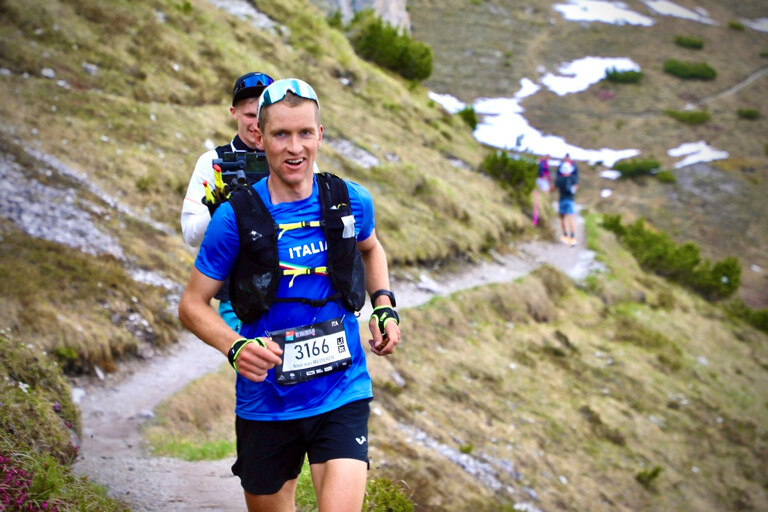
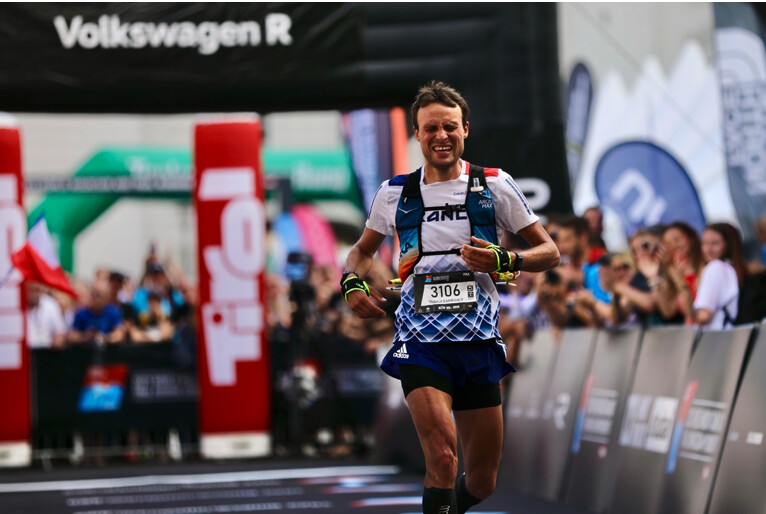
Over the course of the next three major climbs, all around 600 meters (2,000 feet), high in the mountains between the two host cities, Reiterer continued to lead the slowly stretching field. The steep trails were no barrier to his steady effort and the race’s cameraman was seen breathing harder than he was. Roubiol followed about six minutes back over the top of the last climb in the series, with Fraňo, Egea, and Garrivier completing the top five, still within 10 minutes of each other. Miller continued to hold on in sixth.More than halfway now, the runners bombed down into the village of Grinzens in the valley at 54k, now back to their original starting elevation, except on the other side of the mountains, with more descending to go before the final climb and descent into Innsbruck.
Reiterer and Roubiol maintained their top-two positions while the rest of the top 10 continued to shuffle amongst themselves with Garrivier continuing to move up in the field and Miller dropping another place into seventh. Miller, looking spry and claiming that he still had legs, continued to keep tabs on the men in front of him, clearly intent on reeling them in.
Continuing down to the low point of the course in Kranebritten at 66k, the top five looked like Reiterer, Roubiol, Fraňo, Garrivier, and Tomáš Fárník of the Czech Republic. Now, all that stood between the front end of the race and the finish was a final 1,000-meter (3,400 feet) climb and a wild drop back down into Innsbruck. While anything could happen, with more than a four-minute lead, it seemed like it was Reiterer’s lead to lose.
But on the final climb of the race, the ever-patient Roubiol made his move, surging into the lead at Aspachhütte at 71k, and opening a four-minute gap on a fading Reiterer. Roubiol looked incredibly focused as he made his way up the mountain. Fraňo and Garrivier remained solid in third and fourth, and Miller started to make good on his promise of still having legs, moving into fifth. The gap between Roubiol and Reiterer only continued to grow, eight minutes at 73k, and nine minutes at 75k, as they made their way to the top of the final climb. Fraňo stayed strong in third, Garrivier in fourth, and Miller and Fárník continued to battle for fifth, 25 minutes off the lead.From there, it was all downhill to the finish. Benjamin Roubiol flew down the final descent to win the 2023 Trail World Championships 80k in 9:52:59. Reiterer followed just under eight minutes back, the gap holding steady the whole descent. Fraňo and Garrivier both held onto their places to finish third and fourth.
I'm Behind them, U.S. teammates Drew Holmen and Eric LiPuma made a strong push to catch up to their teammate Miller. Holmen would out sprint Miller at the line, and the two were followed less a minute later by LiPuma, the trio taking fifth through seventh.
For the team competition, Chassagne would be the third French finisher in 17th place, securing the team victory for France. The strong fifth through seventh finishes of the U.S. men slotted them into second in the team competition, just over five minutes behind the French in over 30 hours of cumulative racing. Reiterer would lead the Italian team to a third-place finish.
(06/10/2023) ⚡AMPWorld Mountain and Trail Running Championships
Welcome all athletes, officials, coaches, and families to THE AMAZING THAILAND WORLD MOUNTAIN & TRAIL RUNNING CHAMPIONSHIPS 2021 (WMTRC2021). The event will feature 80km and 40km trail races, classic up and down and uphill only mountain races. It replaces World Championships previously hosted with World Athletics, WMRA (mountain running) and IAU and ITRA (trail). The Amazing Thailand World Mountain and...
more...Kipyegon, Girma and Ingebrigtsen make history in Paris
It will go down in history as one of the greatest nights in athletics.
Between them, Faith Kipyegon, Lamecha Girma and Jakob Ingebrigtsen broke two world records* and one world best at the Meeting de Paris on Friday (9), providing the standout moments at a highly memorable Wanda Diamond League meeting in the French capital.
A week after breaking the 1500m world record in Florence, Kipyegon etched her name into the record books for 5000m, winning in 14:05.20.
Ahead of the race, the world and Olympic champion hadn’t made too much noise about a possible world record attempt in tonight’s 5000m. It was, after all, just her third ever race at the distance, and her first 5000m outing in eight years.
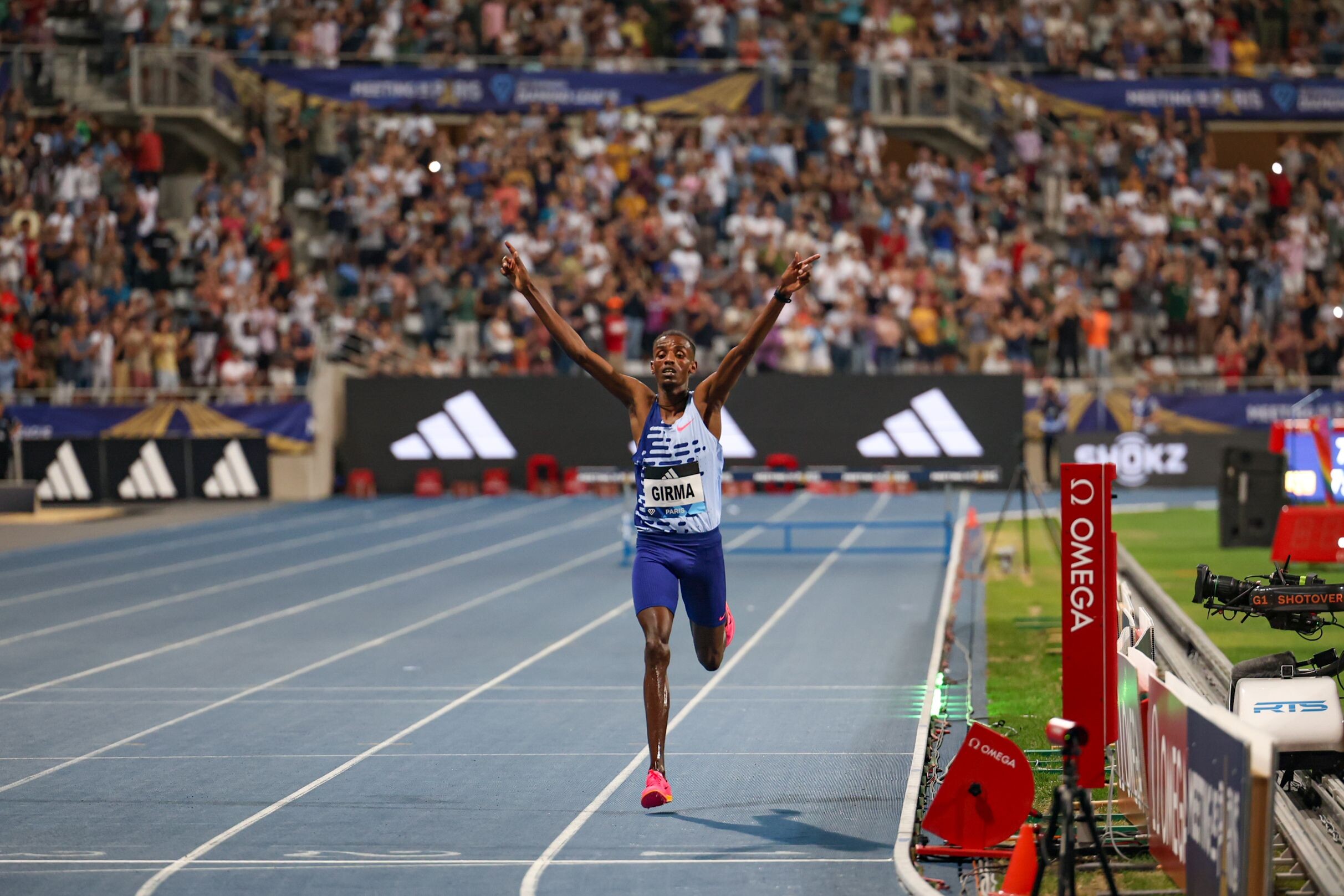
But, as is always the case with Kipyegon, the 29-year-old Kenyan showed no fear as she navigated her way through the race, the early pace – 2:52.31 at 1000m and 5:42.04 at 2000m – seemingly no bother for the two-time world U20 cross-country champion.
Steeplechase world record-holder Beatrice Chepkoech was the third and final pacemaker, leading the field through 3000m in 8:31.91. At this point, world record-holder Letesenbet Gidey led from Kipyegon with Ethiopia’s Ejgayehu Taye, the world 5km record-holder, a few strides behind.
Kipyegon took the lead with about 600 metres to go, but Gidey kept close contact. They were about six seconds outside of world record pace, but Gidey also knew what Kipyegon is capable of. The world 10,000m champion knew that Kipyegon had the finishing speed to break Gidey’s world record.
Kipyegon – now speeding up with each and every stride – hit the bell in 13:04.1, needing a final lap of about 62 seconds to break Gidey’s record. She did exactly that, covering the last 400m in 61.1 seconds to cross the line in 14:05.20 – a 1.42-second improvement on Gidey’s mark.
Gidey, competing for the first time since her unfortunate episode at the World Cross Country Championships in Bathurst, finished second in 14:07.94, the third-fastest time in history. Taye was third in 14:13.31, while the next three women – Lilian Kasait Rengerek, Freweyni Hailu and Margaret Chelimo Kipkemboi – all finished inside 14:24.
“I didn’t think about the world record, I don’t know how I made it,” said a delighted and surprised Kipyegon. “I just focused on the green light and tried to stay relaxed and enjoy the race. When I saw that it was a world record, I was so surprised – I just wanted to improve on my PB, the world record was not my plan. I just ran after Gidey – she is an amazing lady.
“I do not know what will be next – I’ll have to discuss it with my coach and my management,” she added. “If my body is healthy, anything is possible.”
Girma had requested an ambitious pace for the men’s 3000m steeplechase – one that would result in a finishing time of about 7:52. The world and Olympic silver medallist almost got a bit carried away mid-race, though, and ran well ahead of the wavelights through the middle section of the race.
With two laps to go, the lights almost caught up with the Ethiopian – who by now was well ahead of the rest of the field. But the sound of the bell and the reaction of the crowd seemingly gave him added impetus on the final lap as he moved clear of the lights once more.
He sped around the final lap in about 64 seconds, crossing the line in 7:52.11, taking 1.52 seconds off the world record set 19 years ago by Said Saeed Shaheen.
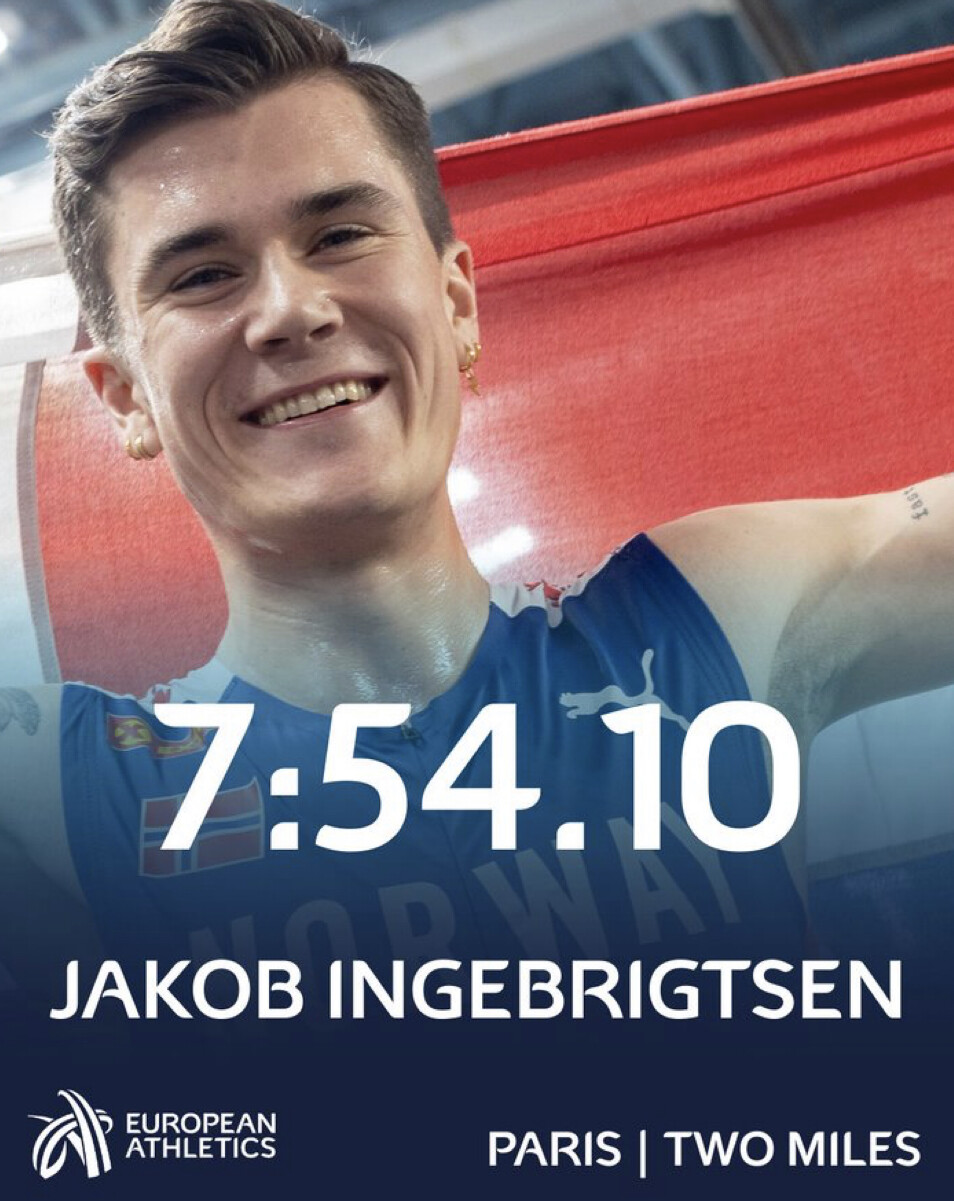
“I feel so happy,” said Girma, who started his year world a world indoor record over 3000m. “I’m happy and very proud. I felt so fast during the race, so confident. The world record is not a surprise; it was my plan to beat it tonight in Paris. It’s the result of my full determination.”
Two miles not be an official world record distance, but that mattered not to Jakob Ingebrigtsen – or indeed the sell-out crowd at the Stade Charlety – as the Norwegian won the event in a world best of 7:54.10.
The race wasn’t a scoring discipline on this occasion, and as such was held outside of the main broadcast window. But that didn’t deter the world and Olympic champion, who stuck to the pacemakers throughout, passing through 1000m in 2:29.07 and then moving closer to the second pacemaker – and, significantly, ahead of the green wavelights.
Once the pacemakers had done their job, Ingebrigtsen maintained his tempo and breezed through 3000m in an official split of 7:24.00 – a European record and the third-fastest performance of all time for that distance. At this point he had a 13.5-second lead over Ethiopia’s Kuma Girma. Victory was Ingebrigtsen’s; his next target was Daniel Komen’s world best.
He charged through the final 218 metres, roared on by the crowd, and crossed the finish line in 7:54.10, winning by 15 seconds.
“Being able to break this mark feels amazing,” he said. “It is my first world best outdoors. The pace felt very smooth for me, coming out of the 1500m. The public was amazing; without their help, it would have been more difficult. I was a bit surprised by the time in the end.”
World leads for Hodgkinson, Wanyonyi and Holloway
World and Olympic silver medallist Keely Hodgkinson opened her outdoor season in stunning fashion in the women’s 800m, winning by more than two seconds in a world-leading national record of 1:55.77.
The European champion stuck to the pacemaker and covered the first lap in 57.7 seconds, already a stride or two ahead of the rest of the field. With 200 metres to go, there was clear daylight between Hodgkinson and Jamaica’s Natoya Goule, who was being pursued by world indoor champion Ajee Wilson.
But none of them could get near Hodgkinson, who eased down the home straight to cross the line in 1:55.77, taking 0.11 off the British record she set two years ago in Tokyo. Wilson finished second in 1:58.16 and Goule was third in 1:58.23.
(06/09/2023) ⚡AMPby World Athletics
France wins double gold at World Mountain and Trail Running Championships
French runners pulled off a tour de force at the World Mountain and Trail Running Championships in Innsbruck, Austria, on Friday, with Benjamin Roubiol and Marion Delespierre winning gold in the men’s and women’s 86.9-km long-trail events.
Roubiol placed first in 9:52:59 and was joined on the podium by second-place Italy’s Andreas Reiterer (10:00:46), and Peter Frano from Slovakia in third (10:02:10).
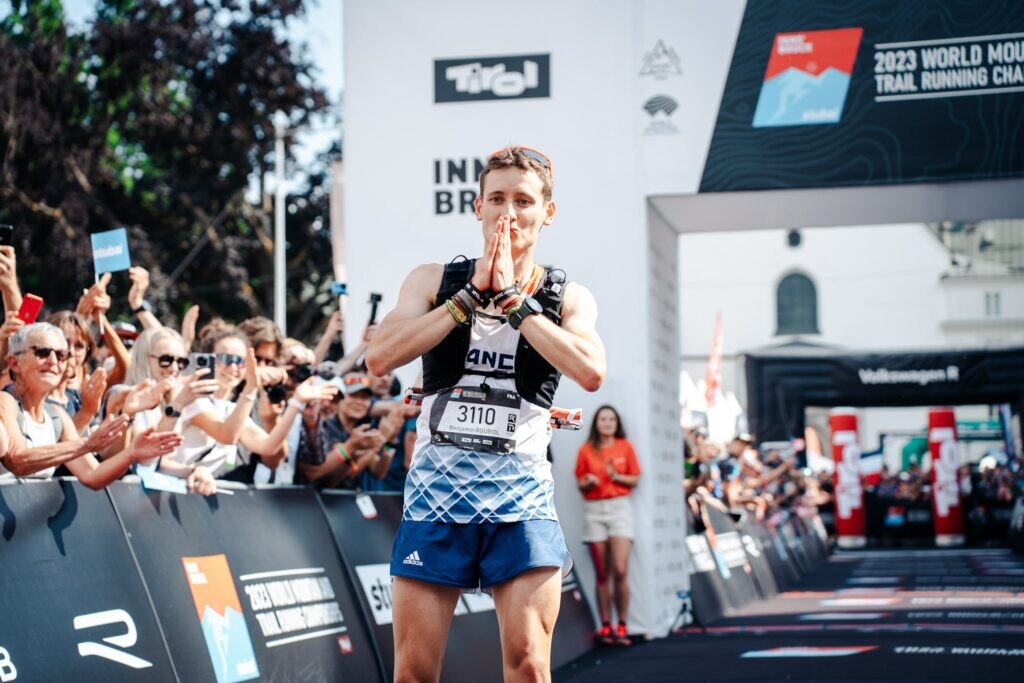
Late comeback
The 23-year-old Rubiol’s gold-medal finish came as a surprise to many, as Reiterer had situated himself firmly in the lead for more than 45 kilometres. The Italian was running solo at times, leaving a changing field in pursuit up to six minutes behind. But after having passed three peaks and the flat approach to Kranebitten, the climb up to the Nordkette caused Reiterer trouble, allowing Roubiol to pass the Italian just before the Aspach hut.
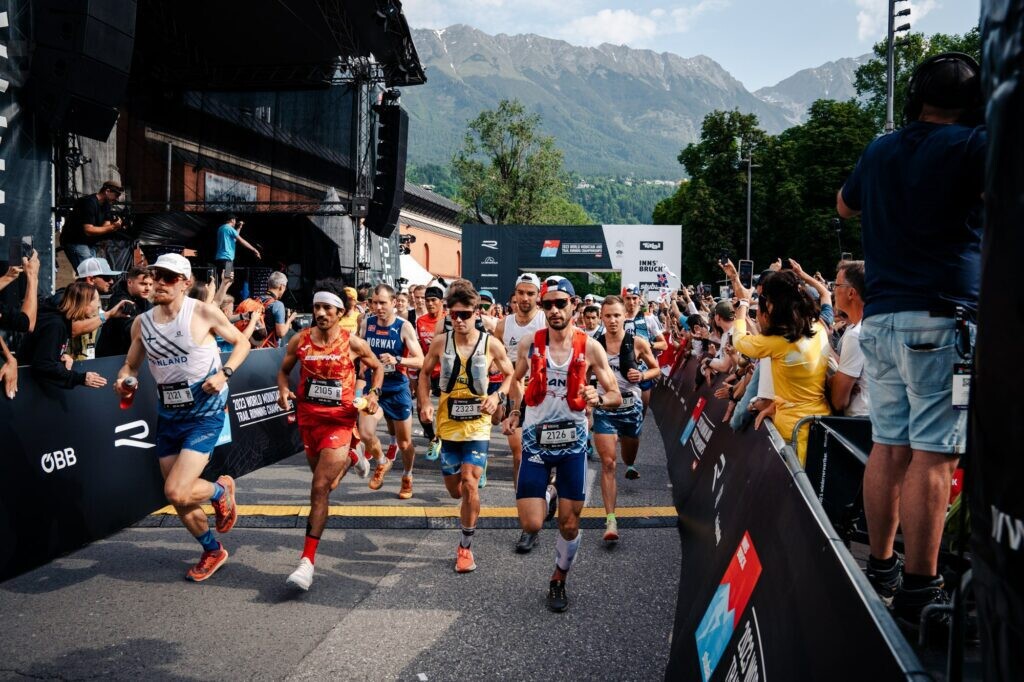
France punctuated Roubiol’s stunning performance in Innsbruck by claiming two podium spots in the women’s long trail race. Delespierre won the event in 11:22:31; Germany’s Katharina Hartmuth ran 11:29:14 to place second, and France’s Manon Bohard Cailler finished third in 11:34:22.
How the Canadians did
The Canadian women’s team finished eighth overall out of 27 teams, led by Calgary’s Arden Young, who placed 34th overall in 13:10:54. Anne-Marie Madden and Mylene Sansoucy both landed inside the top 50 to solidify Team Canada’s top-10 result. The men’s team wound up 13th of 33 teams with all five men placing inside the top 70. Jean-Philippe Thibodeau of Quebec was the top Canadian in 46th place, an hour and 23 minutes back of the leaders. Thibodeau won the Quebec Mega Trail 50K in June 2022.
Thursday’s races
France’s impressive showing Friday came on the heels of the country taking gold in Thursday’s women’s 45.2-km short-trail event. Clementine Geoffray won the race, covering 3,121 verticle metres from Innsbruck to Neustift im Stubaital in 4:53:12 ahead of two Swiss runners; Judith Wyder placed second in 4:55:13, followed by Theres Leboeuf for third (5:09:29).
In Thursday’s men’s short-trail event, Norway’s Stian Angermund ran 4:19:00 to successfully defend his short-trail title against second-place British runner Thomas Roach (4:21:18) and Italy’s Luca del Pero, who finished third in 4:22:04. Angermund and Roach took the lead soon after the start in the centre of Innsbruck, running the first 14.15 kilometres in a trio with Britain’s Jonathan Albon before Angermund was able to pull away. The route to the Kalkkögel leads over slippery fields of snow, and Angermund managed to extend his lead to more than 90 seconds. It briefly appeared the race could get close again as Angermund slowed down to a walking pace just before reaching the route’s highest point at the Starkenberger hut. On the downhill, weaving through the avalanche barriers down to Neustift, Angermund accelerated again and was able to keep his competitors at bay, allowing him to run down the final switchbacks to Neustift without pressure.
(06/09/2023) ⚡AMPby Running Magazine
World Mountain and Trail Running Championships
Welcome all athletes, officials, coaches, and families to THE AMAZING THAILAND WORLD MOUNTAIN & TRAIL RUNNING CHAMPIONSHIPS 2021 (WMTRC2021). The event will feature 80km and 40km trail races, classic up and down and uphill only mountain races. It replaces World Championships previously hosted with World Athletics, WMRA (mountain running) and IAU and ITRA (trail). The Amazing Thailand World Mountain and...
more...Colorado runner almost killed by cow on trail
A Colorado woman says she was almost killed when a cow knocked her over in one of two attacks on runners by aggressive cattle reported on a trail in the past week. Both attacks occurred on the Meadowlark Trail outside Superior, Colo., about halfway between Denver and Boulder.
The first attack happened on June 3 when a herd of cows knocked over a runner on the trail. The woman, who declined treatment for bruises and scrapes after the attack, told Boulder County Parks and Open Space officials she was not trampled in the incident, but described the attack as “very frightening,” according to McClatchey News.

On Tuesday, cattle rushed another female runner on the trail. A witness to that attack, who placed a call to 911, saw the runner “trying to protect herself on the ground, surrounded by about 15 or 20 cows, most of them mothers with their calves,” the Longmont Times-Call reported. The woman who was attacked in that incident was taken to hospital; her condition wasn’t known to officials.
Becca Fuchs, the runner involved in the June 3 attack, tweeted about her experience after hearing about the second encounter Tuesday. “Did someone else get injured there now since Sat?” she wrote. “It was definitely near death for me. if the one that knocked me on my back had just landed with his hooves a few more inches over I don’t think I would be here. I hope people take this seriously. I was just running on the trail.”

Tuesday’s attack prompted officials to close the trail temporarily. Although the Times-Call reported, it was reopened later in the day after the rancher who leases the field relocated the herd to a fenced-in pasture.
Officials said the cattle in both attacks were likely acting aggressively to protect their young, and that neither runner had done anything to provoke the attacks. There have been previous reports of aggressive cattle along the Meadowlark Trail, which is located in a cattle-grazing area.
Reacting to Tuesday’s attack, Fuchs tweeted that it’s “sad it happened again within such a short space of time. Someone I talked to said their friend broke 3 ribs in the same place just two weeks ago.”
In April, Canadian Running reported a 43-year-old woman in Farmington, Maine, required stitches after she was ambushed by a cow while jogging on a trail.
(06/09/2023) ⚡AMPby Paul Baswick
Three tips for nailing the perfect pace on race day
It doesn’t matter how experienced or inexperienced a runner you are–everyone has made the mistake of going out too fast in a race. It’s a painful affair, both physically and mentally, when you see others blowing by you because you’ve gone out too swiftly. The thing is, you will never win the race in the first kilometre, but you might well lose it.
Lara Rogers, the head coach of the Under Armour professional team UA Mission Run Baltimore Distance group in Baltimore, coaches some of the top up-and-coming middle-distance athletes training for the 2024 Paris Olympics. Rogers shares three tips on how to find that sweet spot and maintain a consistent rhythm throughout the race.
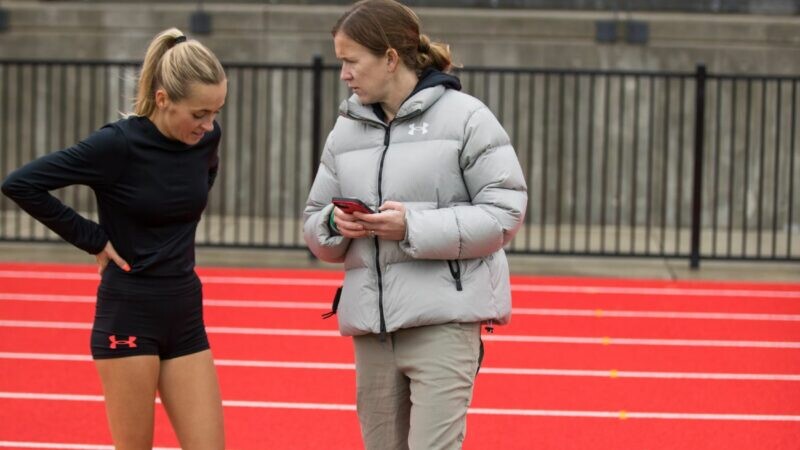
1.- Be realistic
Firstly, know your target pace. Set realistic and achievable pace goals based on your training and previous races. This requires understanding your fitness level and the demands of the race distance. If you are running your first 5K or 10K, it’s better to start at a modest pace and speed up as the race progresses.
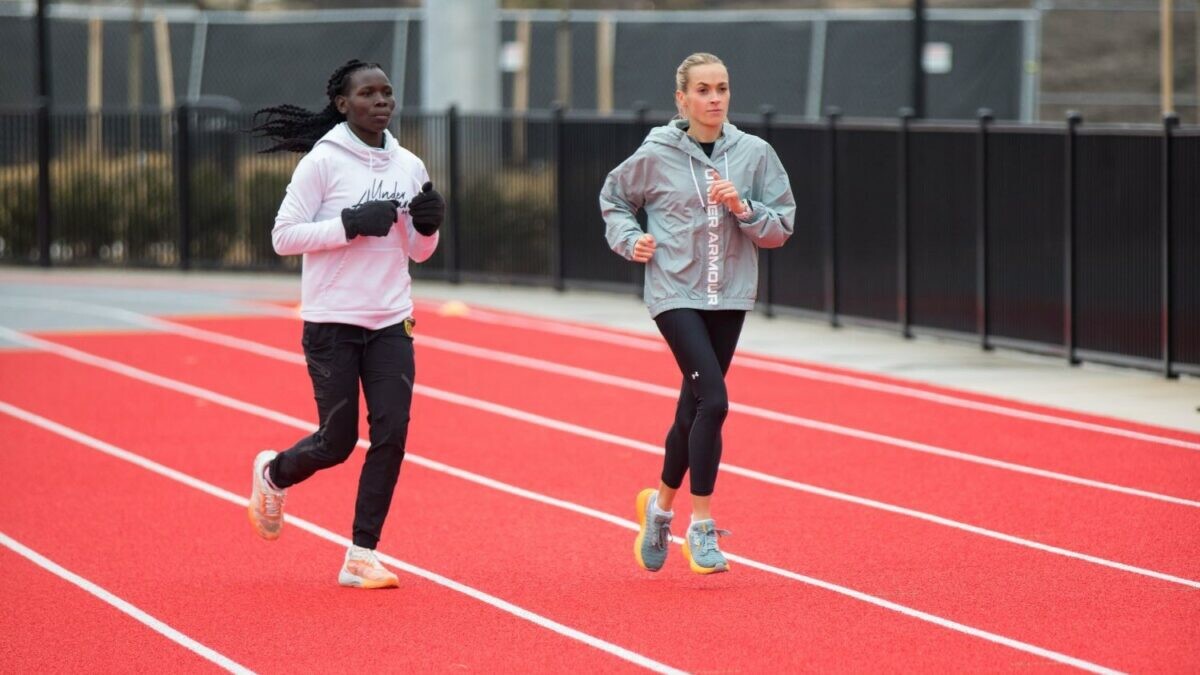
If you have some recent races under your belt, you can always use them as a reference. A recent 5K is a great race predictor for what you can run for 10K, as is the 10K for the half-marathon. For example, if you have a personal best of 25 minutes for 5K, doubling your time and adding two to four minutes should give you a realistic range to train toward.
2.- Get a feel for it in training
In the weeks leading up to race day, spend a few sessions trying to nail that goal pace. Practising this can help your body get familiar with different paces and develop a sense of pacing. By practising at race pace, you are training your body to maintain that specific speed and get comfortable with that effort.
Incorporating tempo runs, intervals and race simulations are all great sessions to build your comfort level. My favourite workout to find your perfect pace is 10 reps of 400m, or five reps of 800m, at your potential goal pace, with equal recovery. If you can conquer this, it’ll help you feel confident with your pacing as you gear up for race day.
3.- Be patient
It is easy to get carried away at the start with the excitement of race day, but trust your training and remember that finishing strong is the most important part. Remember to be patient, and using a pace group of runners shooting for a similar goal time can help you nail the perfect pace from the start.
While it’s important to stick to your target pace, it’s also important to be flexible and make adjustments if necessary. Factors like weather conditions, terrain and how you feel on race day can all impact your performance. Trust your training, stay focused and strive for a steady rhythm. By following these three tips, you’ll increase your chances of achieving your race day goals.
(06/09/2023) ⚡AMPby Marley Dickinson
Four-time Grandma's Marathon champion Barno adds Hall of Famer
The next time Elisha Barno crosses the finish line of Grandma’s Marathon in Duluth’s Canal Park, he’ll not only be the winningest marathoner in the race’s history, but a Hall of Famer as well.
Barno, who won Grandma’s Marathon four straight times from 2015-18, is among three inductees to the Grandma’s Marathon Hall of Fame this year along with volunteer Dan Dock and board member Barb Korte. All three will be enshrined during the Grandma’s Marathon Awards luncheon at noon on Friday, June 16 at The Garden Event Center.
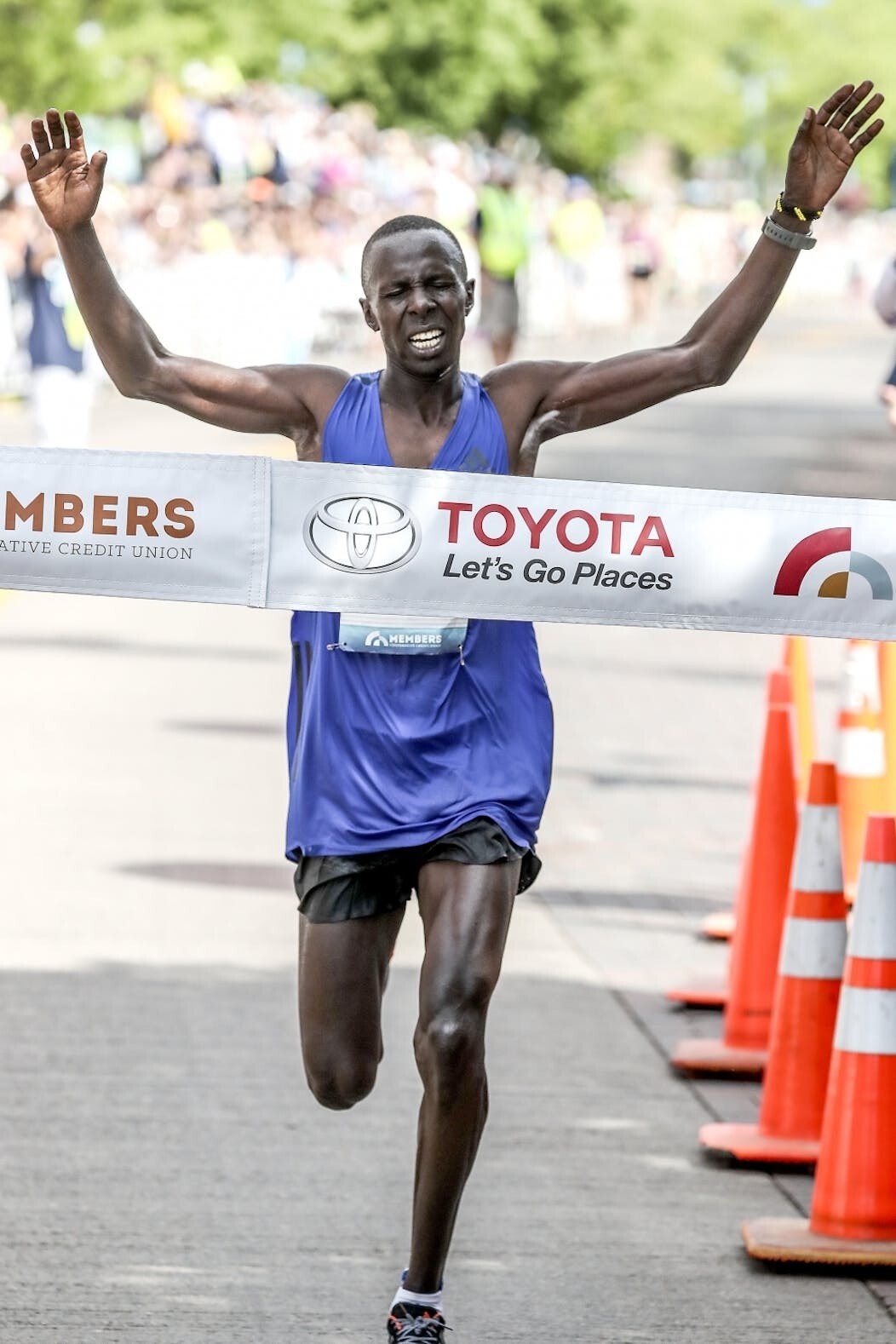
Barno owns three of the top 10 times posted by a man in Grandma’s Marathon, with his winning time of 2 hours, 10 minutes, 6 seconds in 2018 being the fourth-fastest ever for Grandma’s Marathon.
Back again in 2023 to run Grandma’s at 37 years old, Barno is coming off a fourth-place finish in which he posted his second-fastest time at Grandma’s, 2:10:22. That’s good for eighth all-time among Grandma’s finishers.
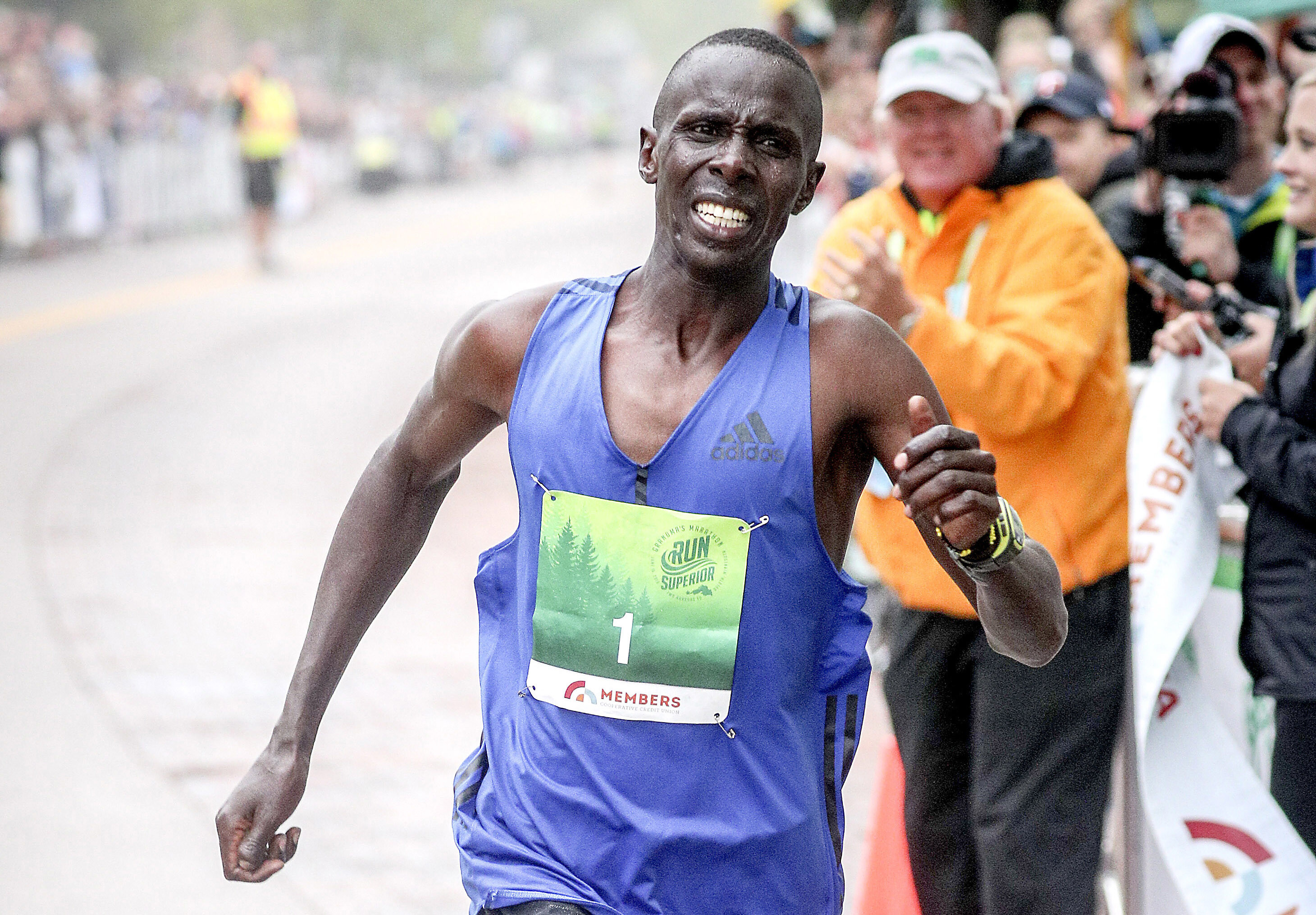
The Grandma’s Marathon Hall of Fame honors those who make longstanding and meaningful contributions to the race and community.
Dock has been volunteering at the Grandma’s Marathon finish line in various capacities for 37 years. Before the race started using chips to time runners, he was part of the crew that helped manually time finishers.
Korte has served on the Grandma’s Marathon Board of Directors since 1994 and has chaired the board twice. Korte has worked the finish line on race day and coordinated the spaghetti dinner on Friday nights. Her biggest claim to fame, according to Grandma’s Marathon, is organizing the annual cleanup of a section of the racecourse along Scenic Highway 61 between Two Harbors and Duluth.
The Grandma’s Marathon Hall of Fame now includes 91 individuals, organizations and municipalities since inducting its first class in 1996.
Award of Excellence named in honor of Welles
First given to Chester Keenan in 2001, Grandma’s Marathon has renamed its Award of Excellence in honor of longtime employee and volunteer Mac Welles, who died in December 2022.
This year’s recipient of the Mac Welles Award of Excellence is Tom Rovinsky, who since the early 2000s has been one of the lead racecourse water delivery drivers, fueling the 15 water and aid stations along the 26.2-mile course between Two Harbors and Duluth.
Not every water station along the race course has nearby sources to draw from, as some are located in remote areas along the shore of Lake Superior. Rovinsky begins on Friday, delivering water to those locations and continues into the morning on Saturday.
Law enforcement officers recognized for public service
A pair of long-serving northern Minnesota law enforcement officers — Pete Goman and Mike Tusken — are the recipients of this year’s Rudy Perpich Public Service Award from Grandma’s Marathon.
The award is presented annually to elected officials or public employees who help out with Grandma’s Marathon weekend, and is named after former Minnesota governor Rudy Perpich.
(06/09/2023) ⚡AMPby Matt Wellens
Grandmas Marathon
Grandma's Marathon began in 1977 when a group of local runners planned a scenic road race from Two Harbors to Duluth, Minnesota. There were just 150 participants that year, but organizers knew they had discovered something special. The marathon received its name from the Duluth-based group of famous Grandma's restaurants, its first major sponsor. The level of sponsorship with the...
more...Running during wildfire season: how to stay safe
Over the last several days, wildfires spreading through Nova Scotia, Quebec and northern Ontario have forced runners across eastern Canada to adjust their training plans and reconsider their outdoor running regime. But how much does this change in air quality really affect you, and how careful do runners really need to be?
Health risks from wildfire smoke
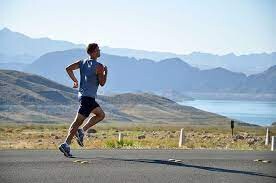
Running in poor air quality, particularly when caused by wildfires, can present significant health risks that runners need to consider before heading out for their daily miles. Wildfire smoke releases a complex mixture of pollutants, including particulate matter, volatile organic compounds (VOCs) and hazardous gases, which can have severe respiratory and cardiovascular effects.
As wildfires become increasingly common and widespread, it is crucial for runners to take proactive measures to safeguard their health and well-being.
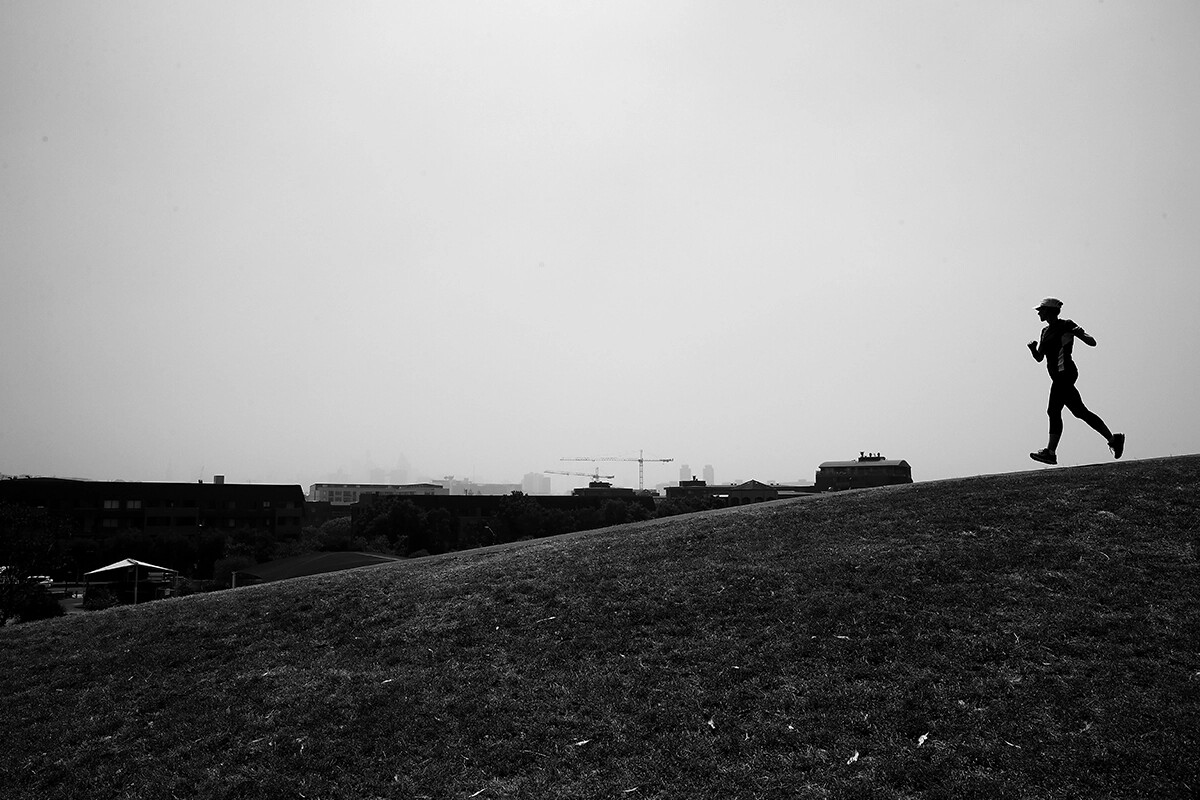
Exercising in areas affected by wildfire smoke exposes runners to high levels of fine particulate matter (PM2.5) and harmful gases such as carbon monoxide (CO) and nitrogen dioxide (NO2). These pollutants can penetrate deep into the lungs, causing irritation, inflammation and potential long-term damage.
The presence of VOCs and hazardous gases can also compromise cardiovascular health, leading to increased risks of heart attacks and other cardiac complications.
Monitoring air quality
When confronted with poor air quality resulting from wildfires, runners must prioritize their health and take appropriate precautions. First and foremost, monitoring air quality information is essential. Stay informed about local air-quality reports, which often provide specific details about particulate matter levels and advisories related to wildfire smoke. Websites, apps, or resources provided by local environmental agencies or health departments can help determine the air quality index (AQI) and provide guidance on outdoor activities.
Hit the treadmill
It is crucial for runners to exercise caution and consider modifying their routines when faced with compromised air quality due to wildfires. When smoke is dense or the AQI reaches unhealthy levels, it is advisable to limit or avoid outdoor activities. If you have access to a treadmill, consider taking your workout indoors until the air quality improves.
If you absolutely must run outdoors, certain times of day are less risky than others. Typically, pollution levels are lower in the mornings when temperatures are cooler, and wind patterns may be more favourable. However, conditions can change rapidly, so make sure you continue to monitor the air quality and change your workout plans if necessary.
Remember, choosing to run when the air quality is potentially harmful to your health is like running when you’re injured. A couple of missed workouts likely won’t have a significant impact on your fitness, and running anyway could cause larger problems that ultimately set you back even further.
Wearing appropriate protective gear, such as N95 masks, can also help filter out some of the harmful particles. Of course, masks have limitations and may impede breathing, so if you’re going to try running with a mask, remember to ease up on the pace, and avoid trying to do any challenging speed workouts until the situation improves.
Ultimately, your health and safety should take precedence over your workout routine during periods of poor air quality. By staying informed and modifying your running routine accordingly, you can minimize your exposure to harmful pollutants and protect your respiratory and cardiovascular health.
(06/08/2023) ⚡AMPby Brittany Hambleton
Professional triathlete Sika Henry will compete at Comrades Marathon
The pro triathlete believes she may have found a new sweet spot with ultra distances.
Sika Henry has never shied away from new challenges. After spending several years working to qualify for her pro card and becoming the first Black American woman to do so in May 2021, she shifted toward a new focus of ultramarathons.
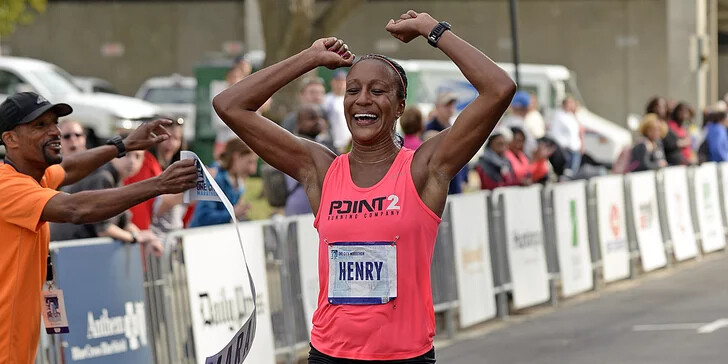
Henry’s first was the 2021 JFK 50 Mile in Maryland, where she finished as the second overall woman. Nearly a year later, after deciding to take a break from triathlon, she set a record of 8:34:20 with her win at the Dismal Swamp 100K in Chesapeake, Virginia.
It seems the endurance built from triathlons—with its back-to-back-to-back swim, cycle, and run—work better for Henry than a straight-up marathon.
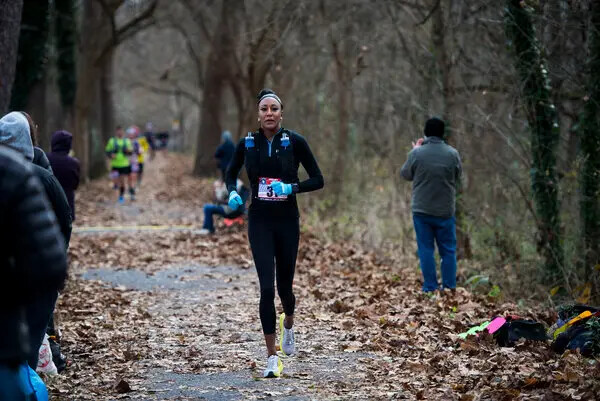
“I think I’m more mentally strong and can endure a lot for a really long period of time, which I think I developed from triathlon,” Henry tells Runner’s World.
Henry’s success at Dismal Swamp set the stage for her next ultramarathon endeavor: the Comrades Marathon, a 90-kilometer race and the world’s oldest ultramarathon in South Africa, taking place on June 11. (The race course, which alternates between Durban and Pietermaritzburg each year, will be run “down” this year.) Henry will be racing as an elite with the Durban-based Phantane Athletics Club, a partnership that came after she met some athletes at last year’s Ironman World Championship in Kona, Hawaii. In addition to the fact that the club will provide her with bottle and fluid support at the race, Henry was also enthused about representing them after learning about how they work to identify talent and give back to underprivileged athletes in South Africa.
Henry’s buildup for Comrades included the Dismal Swamp 100K and an early 2023 marathon at Houston. Next up was the Boston Marathon, where she received a special invitation to race as part of a team along with Alisa Harvey, Ingrid Walters, and Shawanna White to represent Marilyn Bevans, who is known as a pioneer for women’s distance running as the first Black American woman to have broken 3 hours in the marathon.
“[Bevans] has been a bit of an idol of mine for quite some time—one of the reasons why I chased a sub-3-hour marathon was to be part of ‘The List’ [of Black American women who have hit the milestone],” Henry says. “So to come back years later and have all these other races and everything under my belt, it was an honor to get to represent her.”
Henry ended up finishing Boston in 3:08:30 after going in with the plan to use the race as a training run for Comrades by holding a 7:15 to 7:30 pace. Henry found that she was nailing it until she hit mile 21, where Pioneers Run Crew and TrailBlazHers Run Co. were stationed. Henry went on to run the last miles at 6:30- to 6:40 pace, negative-splitting the race by 3 minutes.
(06/08/2023) ⚡AMPby Emilia Benton
Comrades Marathon
Arguably the greatest ultra marathon in the world where athletes come from all over the world to combine muscle and mental strength to conquer the approx 90kilometers between the cities of Pietermaritzburg and Durban, the event owes its beginnings to the vision of one man, World War I veteran Vic Clapham. A soldier, a dreamer, who had campaigned in East...
more...Sheila Chepkirui over the moon after making Team Kenya to Budapest
Kenyan marathon runner, Sheila Chepkirui, has expressed her delight at being selected for the 2023 World Championships in Budapest, Hungary.
Chepkirui, 33, comprises the stellar list of headliners unveiled by Athletics Kenya (AK) last week to hold forte for the country in the flagship global extravaganza set for August.
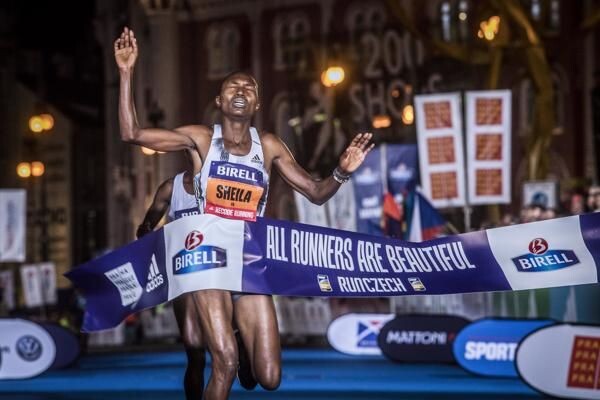
The Commonwealth Games 10,000m bronze medalist said she has already begun her preparations in anticipation of a monumental conquest in the central European nation.
"I'm overjoyed to have made the team. It is always a wonderful honour to be given the rare opportunity to represent the country on such a stage. "I'm hoping to do well," Chepkirui said.
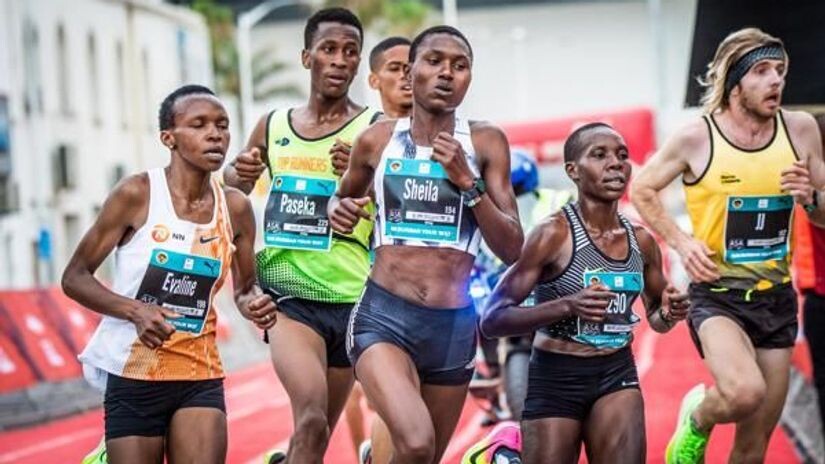
She said she plans to participate in the Boston 10k race on June 25 as part of her training program."Right now my focus is to prepare adequately for the World Championships. I'll be traveling to the US to battle out in the Boston 10k race to evaluate my speed," Chepkirui remarked. "I don't intend to compete in any major marathon events until then," Chepkirui said.
Budapest will be her third marathon attempt after she clocked 2:17:29 to wrap up sixth on her debut over the distance in Valencia last year.
She heads into the championships buoyed by her impressive show at the 2023 London Marathon on April 23, where she placed fourth behind Holland's Sifa Hassan, Ethiopian Alemu Megertu, and compatriot Peres Jepchirchir respectively.
The Kenya Defence Forces officer said she is currently on vacation in Kericho county, where she is perfecting her act for the herculean task. I am currently on leave, so I am training alone at home in Kericho. I usually work out with the KDF team in Ngong," she stated.
Chepkirui will be heading to Budapest strengthened by a recent heartwarming report that ranked her fourth in the 10 km road race on the world all-time list.
A natural trailblazer, Chepkirui defeated Japan's Yuriko Kobayashi over 1500m at the 2005 World Youth Championships to storm her maiden global title after posting a championship record of 4:12.29.
After enrolling with Kenya Defence Forces around 2012, she secured a spot on the plane to the 2016 African Cross Country Championships, where she bagged the silver in a Kenyan podium sweep alongside compatriots Alice Aprot and Beatrice Mutai.
Chepkirui will, however, first have to fend off a stiff challenge from 2020 Tokyo Olympics silver medals Brigid Kosgei who won the 2018 and 2019 Chicago Marathons, the 2019 and 2020 London Marathons, and the 2021 Tokyo Marathon.
She won the Paris Half Marathon title in France after clocking 66.00 minutes ahead of Ethiopian Betelihem Yemer (66.45) and Kenyan Marion Kibor (66.45). Unforeseen visa gremlins saw her painfully miss out on this year's Boston Marathon as well as the Oregon22 World Athletics Championships.
She nonetheless secured a place in Team Kenya for the Birmingham Commonwealth Games last year, where she blazed to the 10,000m bronze podium behind Scot Eilish McColgan and compatriot Irene Cheptai.
(06/08/2023) ⚡AMPby Tony Mballa
World Athletics Championships Budapest 23
From August 19-27, 2023, Budapest will host the world's third largest sporting event, the World Athletics Championships. It is the largest sporting event in the history of Hungary, attended by athletes from more than 200 countries, whose news will reach more than one billion people. Athletics is the foundation of all sports. It represents strength, speed, dexterity and endurance, the...
more...Kenyan Patrick Kipngeno bags gold for Kenya on Day One of the World Mountain and Trail Running Championships
Team Kenya started their World Mountain and Trail Running Championships on a high with Patrick Kipng’eno bagging gold in the 7.3 km vertical race —featuring 1020m of elevation gain.
Kipng’eno, who became the first Kenyan to win a mountain running world title last year, clocked 40:18 to win gold on Day One of the championship being held in Innsbruck-Stubai Austria. He beat 130 athletes who entered the race.
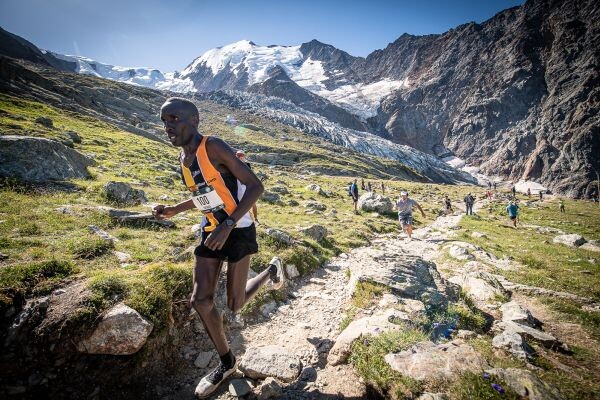
He beat Uganda’s Levi Kiprotich (41:51) to silver while Kenya’s Josephat Kiprotich (42:04) completed the podium finish.
Kenya’s other representatives—last year’s silver medalist Philemon Kiriago (42:54) and Hillary Maiyo —settled for the 7th and 12 positions respectively.
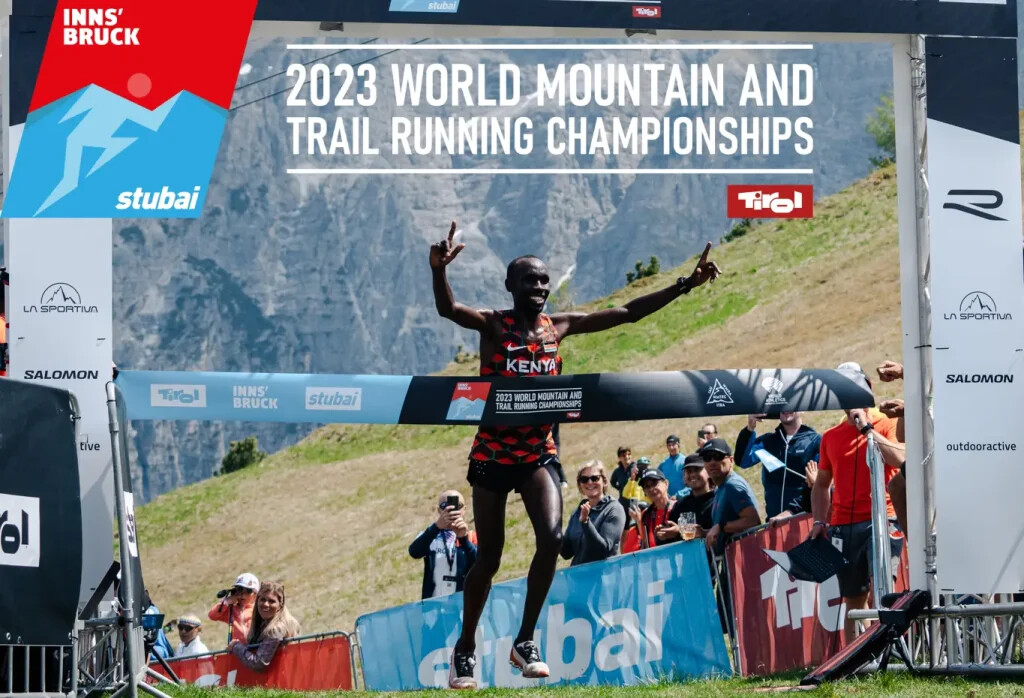
They will be in action again on Saturday when they take part in the Mountain Classic event, featuring looped 15.5km races for senior men and women.
In the women’s category, Kenya’s Philaries Kisang was beaten to gold by Austria’s Andrew Mayr.
The home girl, who won silver in last year’s championships, clocked 48:14 to win gold while Kisang settled for silver in 48:51. USA’s Grayson Murphy claimed bronze in 49:22. Valentine Ruto (49:59) and Joyce Muthoni (52:09) were 5th and 10th respectively.
Kenya is represented by seven athletes after two Geoffrey Gikuni and Ezekiel Kirui missed out due to visa hitches. Kirui was scheduled to compete in the 85 km long trail while Gikuni was to take part in the 45km short trail.
Athletics Kenya mountain Running chairman Peter Angwenyi accompanied the team to Austria.
More than 1,100 of the world’s top runners from 68 countries are participating in the second edition of the World Mountain and Trail Running Championships in the Austrian Alps. The inaugural event was held last November in Chiang Mai, Thailand.
Alessio Punzi, Head of Running and Mass Participation at World Athletics said: “The World Championships are a dream come true started in 2017. In the future, we want to attract more and more athletes and make it more and more difficult for everybody to ignore.”
(06/08/2023) ⚡AMPby Angwengyi Gichana
World Mountain and Trail Running Championships
Welcome all athletes, officials, coaches, and families to THE AMAZING THAILAND WORLD MOUNTAIN & TRAIL RUNNING CHAMPIONSHIPS 2021 (WMTRC2021). The event will feature 80km and 40km trail races, classic up and down and uphill only mountain races. It replaces World Championships previously hosted with World Athletics, WMRA (mountain running) and IAU and ITRA (trail). The Amazing Thailand World Mountain and...
more...Going for the Two mile world record on June 9th
Jakob Ingebrigtsen doesn’t like talking about world records. But many others in the world of athletics are doing just that as the Norwegian prepares to compete in the non-Olympic distance two-mile event at the 2023 Paris Diamond League on 9 June.
Everything is set up for Ingebrigtsen to attempt to beat Daniel Komen’s time of 7:58.61 - a record that has stood since 1997. Not only will an elite field of pacers set the tempo, but the athletes racing will also have the benefit of Wavelight technology, which uses lights on the inside of the track to show the pace of the world record in real time.
If Ingebrigtsen breaks the record, he will have succeeded where many other of the world’s most celebrated distance runners have failed.
Mo Farah, Eliud Kipchoge and Joshua Cheptegei are just some of the big name athletes to have attempted the distance yet failed to beat Komen’s mark, with the nearest time an 8:01.08 set by the great Ethiopian Haile Gebrselassie less than two months before Komen’s historic run.
(06/07/2023) ⚡AMPGlobal Running Day: Top tips for newcomers
The first Wednesday of June is celebrated as Global Running Day by the New York Road Runners (NYRR). This year, the day will be celebrated on June 7. The day will be marked with events and programs highlighting the benefits and importance of running for our health. The theme for this year’s celebrations is “Embracing the Joy of Running.” The day serves as a global platform to promote the joy, benefits, and inclusivity of running.
Global Running Day serves as a universal platform that transcends experience levels, inviting both seasoned runners and beginners alike to embrace a more active way of life. It stands as a reminder that this day is not centered around competing in the sport, but rather emphasizes the numerous health benefits it offers to individuals and communities at large.
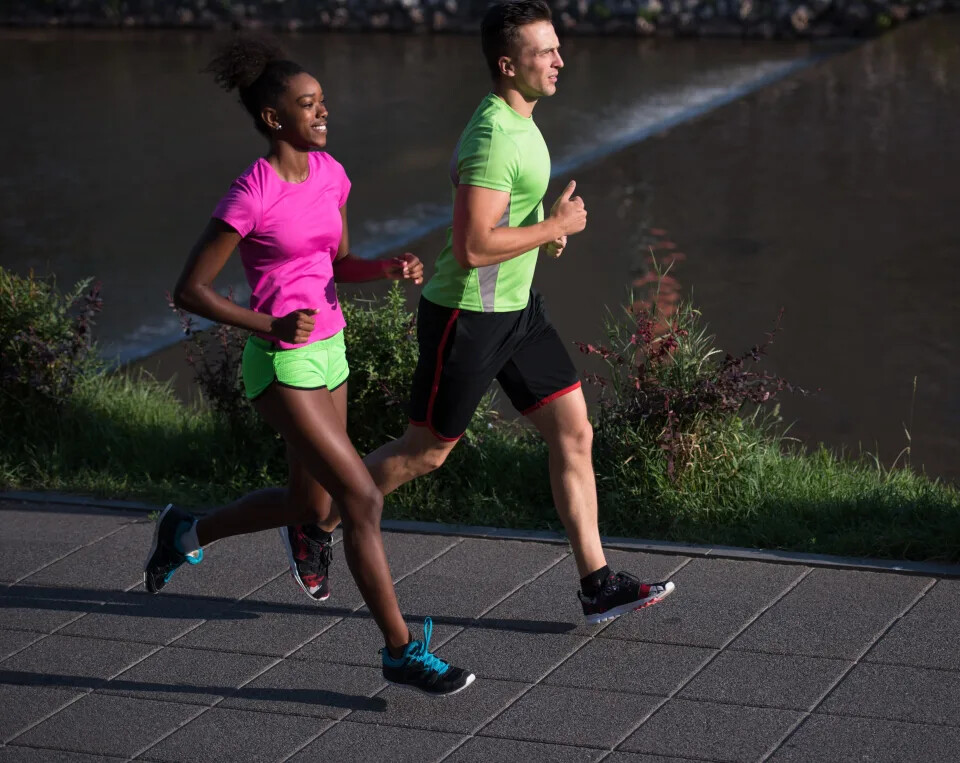
Today is Global Running Day, a worldwide celebration of running that encourages people to get moving, so there is no better time to grab your trainers and give the exercise a go.
Getting outside for a jog does more than just improve your physical health and help you maintain a healthy lifestyle - the sport has a whole host of great benefits.
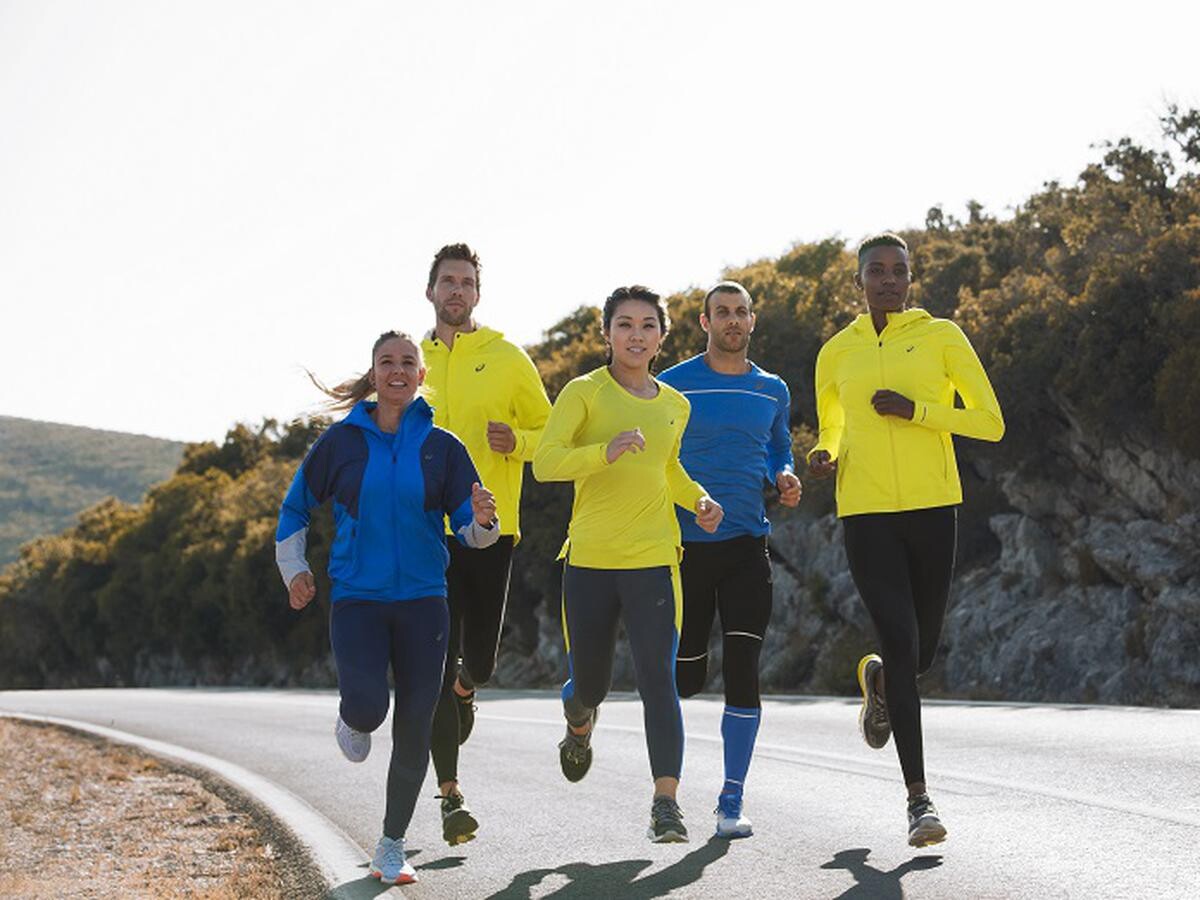
Are you keen to take up running? Well, Richard Robinson, Senior Fitness Product Manager at Garmin, has shared a bunch of helpful tips to consider when trying out your new hobby.
Tailor your running plan
Running is a versatile sport that can be specifically tailored to each person. If you're just starting out, make sure you don't do too much too soon otherwise you could injure yourself.
"First and foremost, if you're new to running, it's crucial that you pace yourself and increase volume gradually to avoid injury. Remember, slow and steady wins the race," Richard says. "If you're a beginner or an intermediate runner, having a focused training plan that's built on science and adapts based on your goals and performance is vital."
Consider the weather
If you are running in the heat, you need to consider how this will impact you and your run. You will sweat more, which could cause dehydration. Richard recommends taking fluids with you on your run and wearing sunscreen and lightweight clothes. He also suggests wearing SPF-rated fabrics, mesh caps and polarised sunglasses.
Recovery
Rest days are crucial for runners because this time off can improve your training and prevent injuries.
"They give your body the much-needed time to recover, allowing your muscles to repair and get stronger, replenish your energy-levels and prepare to succeed in your next workout," Richard explains. "Failing to recover sufficiently will mean your performance long-term will be compromised. Understanding your body battery and knowing your recovery times is key to long-term success."
There are two different types of recovery - passive, where you have a day off from exercise completely, and active, where you do low-intensity exercise instead.
This year marks the 20th anniversary of the Garmin Forerunner watch, which can help you understand your body better to assist you in achieving your personal goals. It has everything you need to support you and your run this Global Running Day.
(06/07/2023) ⚡AMPby
Global Running Day
What is Global Running Day? Global Running Day is a worldwide celebration of running that encourages everyone to get moving. It doesn’t matter how fast you run or how far you go—what’s important is that you take part, and how you do it is up to you. Run a lap around your block, take your dog for a long walk,...
more...Top sprinter and African champion among latest Kenyans banned for doping
African 800 meters champion Jarinter Mwasya and World Under-20 3,000m silver medalist Zena Jemutai are among 20 athletes suspended by the Anti-Doping Agency of Kenya (ADAK) as the crisis in the country deepens.
Top sprinter Samuel Imeta is also among the list after allegedly testing positive for banned anabolic steroids in a meeting at the Nyayo National Stadium in Nairobi on February 24.
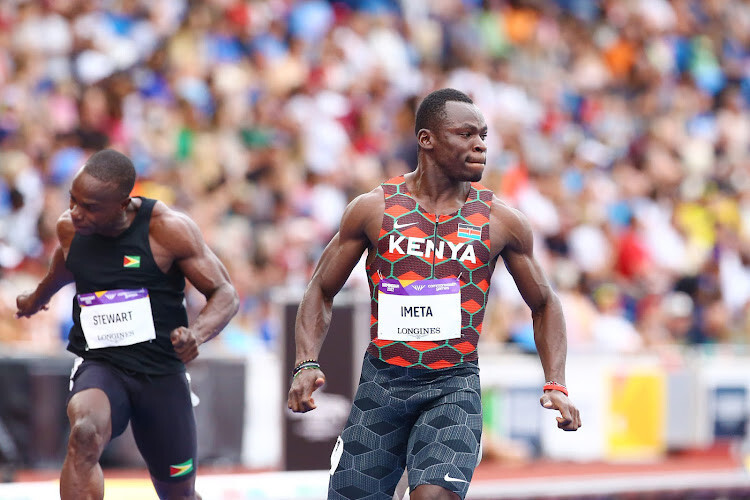
In that event in the 100m, he had clocked a surprising 9.94sec to finish second behind team-mate and African champion Ferdinand Omanyala.
World Athletics did not ratify the times in the race due to technical problems, but Imeta’s performance seemed to suggest Kenya had found another top sprinter after Omanyala.

It represented a major step up in form for Imeta, an officer in the Kenyan Army, after being knocked out in the semi-finals of the 100m at last year’s Commonwealth Games in Birmingham.
He was a part of the Kenyan 4x100m quartet that clocked a national record of 38.26 at the World Athletics Continental Tour Gold event in Botswana’s capital Gaborone, which qualified them for this year’s World Championships in Budapest.
That performance will be wiped out if Imeta is found guilty of doping.
The samples of the 26-year-old Mwasya, winner of the 800m at last year's African Championships in Saint Pierre in Mauritius, tested positive for several banned substances, including blood boosting drug erythropoietin.
Mwasya also competed for Kenya at last year's World Athletics Championships in Eugene and the Commonwealth Games, but failed to reach the final at either event.
Jemutai tested positive for the prohibited substance triamcinolone acetonide, a synthetic corticosteroid medication.
The 20-year-old had finished second at the 2021 World Athletics U20 Championships in Nairobi.
In March, she ran 31min 03sec for 10 kilometres to win the Villa de Laredo event in Spain.
Others facing bans are Hannah Mwangi, winner of the 400m hurdles at the Kip Keino Classic, a World Athletics Continental Tour Gold meeting, and distance runner Agnes Mumbua, who finished first in the 15 kilometres du Puy en Velay in France in February.
The latest revelations again illustrate the depth of the doping problem in Kenya and casts doubts over the performances of other athletes from the country.
Last year, the country narrowly avoided a ban from international athletics after vowing to tackle the problem.
David Howman, chair of the Athletics Integrity Unit (AIU), claimed they are committed to working with Kenya to ensure that happens.
Last month, the AIU held a strategy meeting in Nairobi with ADAK and Athletics Kenya, while also running an online education seminar for athletes from the country.
Athletics Kenya have pledged to being committed to the war against doping and are working with the AIU to launch an operation involving criminal investigators and medical authorities to identify and prosecute anyone involved.
The Kenyan Government has also provided $5 million (£4 million/€4.6 million) worth of funding as part of the country's commitment to cracking down on drug cheats.
(06/07/2023) ⚡AMPby Duncan Mackay
Three interval sessions to spice up your next trail run
Transitioning from roads to trails often demands that runners do some major downshifting, both physically and mentally. Negotiating uneven terrain and surprise obstacles like jutting rocks and tree roots requires a shift to a slower, more deliberate style of running that incorporates shorter strides, strategic foot placement and, depending on the course, a good bit of walking. Expectations must also be adjusted—notions of a “fast” per-kilometer pace will be vastly different on trails than on flat, paved surfaces.
But while the adventure of trail running generally plays out at a slower rhythm, there’s still a place for speedwork. Incorporating interval sessions can not only spice up your trail runs, but also help you transition into a more efficient runner.

Benefits of intervals
Intervals—alternating periods of high-intensity effort followed by recovery periods—can help runners increase their cardiovascular fitness and develop greater endurance. It can also stretch anaerobic capacity, of particular benefit to trail runners when tackling steep climbs and challenging terrain. By pushing runners out of their comfort zone, interval work can also help build mental stamina and focus, and further develop the stamina needed to cover difficult terrain and cope with periods of fatigue.

Try incorporating one of these three interval sessions into your weekly training routine. All have the makings of a challenging workout, but one may be better suited to the trails in your area, depending on the lay of the land.
Hill repeats
For those with access to a trail with a large, steep hill or incline, hill repeats offer a simple but strenuous workout and a challenging change of pace. For this workout, sprint uphill at maximum effort for 30 to 60 seconds, and either jog or walk back to the bottom. Do this for six to eight repetitions while focusing on maintaining good form.
Pyramid intervals
This workout is well suited to long, flat sections of trail, but can also be run on the road or track. Begin with a 400-meter sprint at a challenging pace, followed by a two-minute easy recovery jog. Up the distance of your next intervals to 800, 1,200 and 1,600 meters, with recovery jogs, and then work your way back down in 400-meter increments, finishing with the 400-meter interval.
Tabata intervals
These intense short-burst intervals are suited for straight, level stretches of trail. Run at maximum effort for 20 seconds, followed by a 10-second recovery jog, repeating for eight rounds.
(06/07/2023) ⚡AMPby Paul Baswick
Tete Dijana looks to defend his crown at Comrades Marathon
The 2023 Comrades Marathon is nearly upon us, with thousands preparing to take on the down route from Pietermaritzburg to Durban.
This year’s race has an official race distance of 87.7km, as competitors race for victory in a number of prize categories – the men and women’s winners earning over €20,000.

The men’s field this year features a number of past winners – as does the women’s – and promises to be an exciting race from start to finish.
Dijana aims to crown Nedbank again
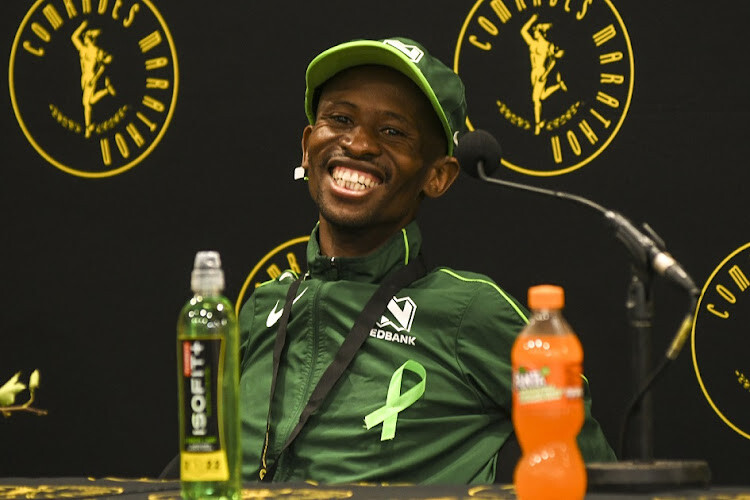
Last year saw five of the top seven finishers all come from the Nedbank running club, but it was Tete Dijana who proved chief amongst them.
He won last year’s race in a time of 5:30:38, with clubmate and 2019 winner Edward Mothibi three minutes behind him and Dan Matshailwe, another Nedbank runner, a further three minutes behind Mothibi.
Expect all those names to feature near the top three, with Nedbank set to work together once more to assert dominance over South Africa’s most famous ultra.
Perhaps the chief non-Nedbank competitor will be 2018 winner Bongmusa Mthembu. Fourth last year, he was the fastest non-Nedbank runner and has set himself more preparation time for the race this year, competing in the Om Die Dam 50km, which he won in 2:56:33.
He is a three time-winner at the Comrades Marathon, his first in 2014 when he was registered with Nedbank, and his other two coming in back-to-back wins in 2017 and 2018 for his current team Arthur Ford.
International talent
The last non-South African to win the race was Stephen Muzhingi, the Zimbabwean taking three titles in a row between 2009 and 2011, and it seems a tall order to expect anyone other than local runners to take the title.
But regardless, there are those who will be competing. British runner Shane Cliffe has finishers in the Lakes in a Day and The Grand Tour of Skiddaw to his name.
There’s also Simon Brown, who has run the Marathon des Sables and qualified for the cancelled Western States 100 in 2020, and experienced runner and coach Ian Sharman.
(06/07/2023) ⚡AMPby Olly Green
Comrades Marathon
Arguably the greatest ultra marathon in the world where athletes come from all over the world to combine muscle and mental strength to conquer the approx 90kilometers between the cities of Pietermaritzburg and Durban, the event owes its beginnings to the vision of one man, World War I veteran Vic Clapham. A soldier, a dreamer, who had campaigned in East...
more...When should you start training for your summer 10K?
This time of year, more people are inclined to start running due to warmer temperatures and longer daylight hours. Getting outdoors and seeing others compete in races can spark motivation to sign up for one yourself. Whether you are a beginner or a seasoned veteran, registering for a 10K can be a fun challenge. Preparing for a 10K race requires careful planning and adequate training, and it’s important to give yourself enough time to train effectively. But how long should that be?
The head coach of the Under Armour professional team, UA Mission Run Baltimore Distance, Lara Rogers, shares her knowledge and expertise to help you prepare for your 10K. Rogers is one of several women who serve as the head coach of a professional distance team in the U.S. The UA Mission Run Baltimore Distance team, established in 2022, consists of promising athletes focused on middle-distance events and aiming for the 2024 Olympics in Paris.
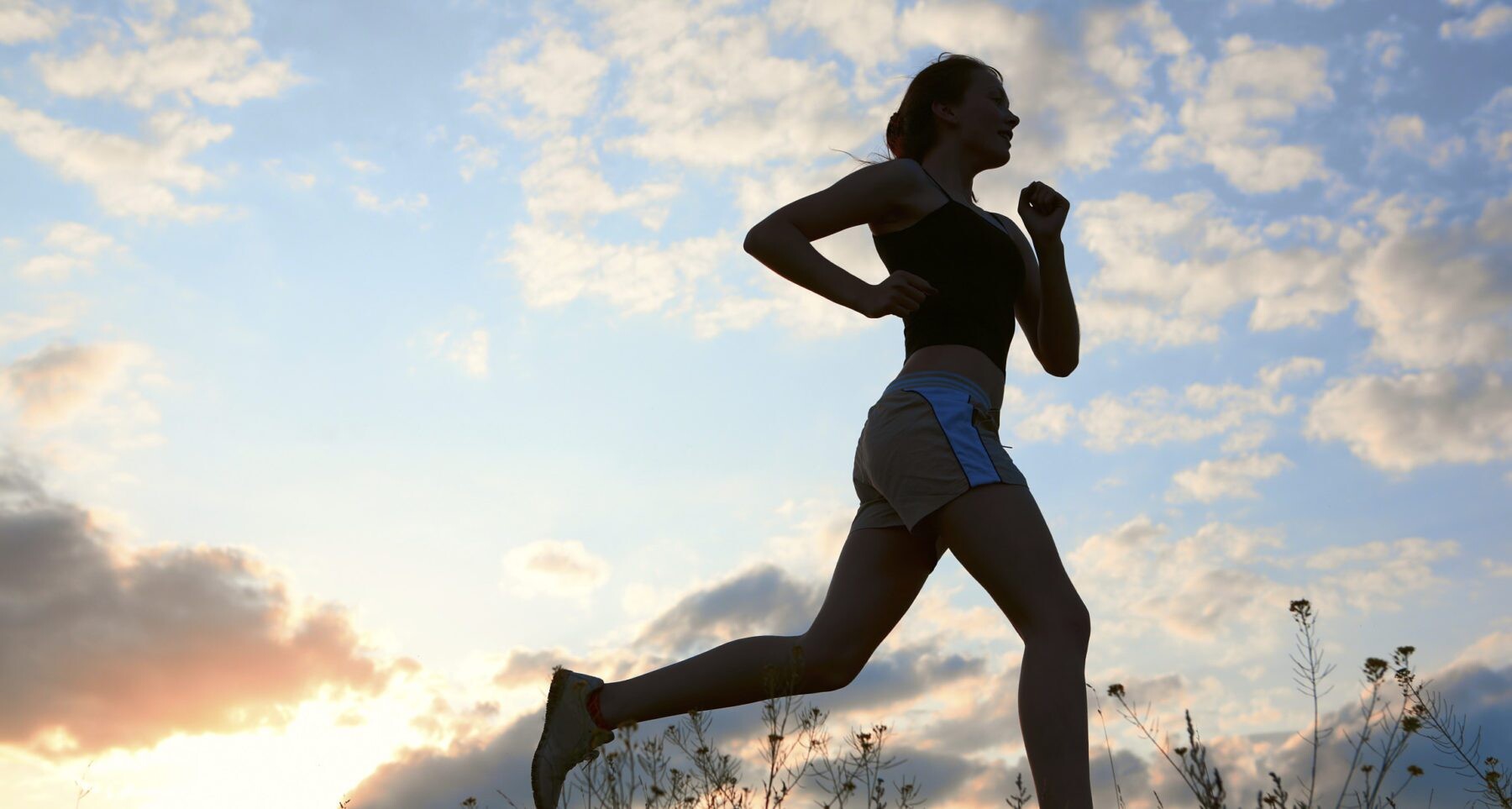
When training for a 10K, Rogers says it’s good to give yourself 10 to 12 weeks if you’re starting from scratch. “For the first four to six weeks, the goal is to get familiar with running and build a foundation,” says Rogers. “Once you have your foundation, start adding more technical work over the final four weeks, such as interval training and tempo work.”
Rogers says that if you have a more experienced running background and already have a base, you can get by with six to eight weeks of training. “Use the first couple of weeks to build up volume, then four to five weeks to incorporate speed or harder workouts, and finally a taper week or two before the race,” she advises.

She also emphasizes the importance of hydration and heat management during summer 10K training. “Run during cooler times of the day, such as early morning or evening, to avoid overheating,” says Rogers. “Stay well-hydrated before, during, and after your runs, and consider carrying water or having access to water stations for longer training sessions.”
With consistent training and preparation, following these tips will help you become well-prepared to tackle the challenges of a summer 10K race and achieve your racing goals.
(06/06/2023) ⚡AMPby Marley Dickinson
World-record holder Camille Herron lands a bird feeder after ruling the roost in her final long-distance race before Western States
U.S. ultrarunner Camille Herron broke the men’s course record at a trail marathon in Texas over the weekend, confidently capping off her last long-distance race ahead of the 100-mile Western States Endurance Run at the end of the month.
Herron finished Saturday’s 42.2-km race at the Texas Trail Running Festival in 3:49:47, beating the men’s course record by 1:41 and the women’s course record by almost 29 minutes. She completed the four-loop course at the Grelle Recreation Area trail system in Spicewood, Texas, more than 40 minutes before this year’s top men’s finisher and more than an hour before the marathon’s second-place women’s finisher. There were 10 runners in the women’s category of this year’s race and 57 competitors overall.
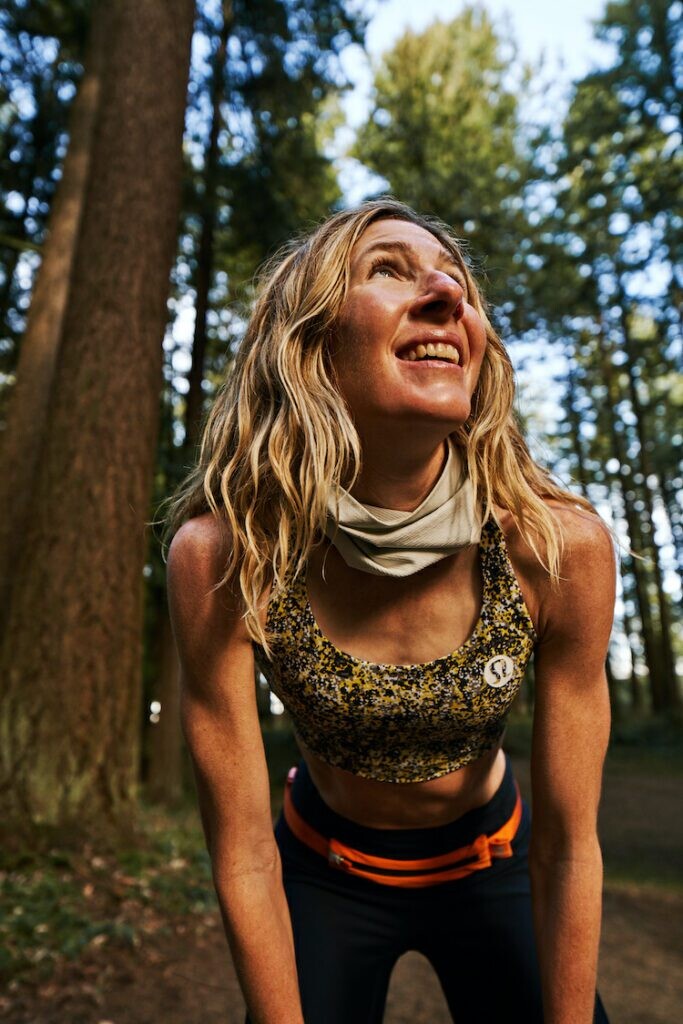
Herron proudly displayed her first-place prize—a bird feeder in the shape of a Texas Longhorn—in social media posts over the weekend. “It was a great course and good prep for Western States,” Herron wrote. “I won a really sweet bird house. Thank you @trejatrails for putting on a fun event.”
Herron, who lives in Oklahoma, wrote that it had been a few years since she’d run in Texas and that it was good to be back: “They have a great trail community—I’ll have to come back for more.”
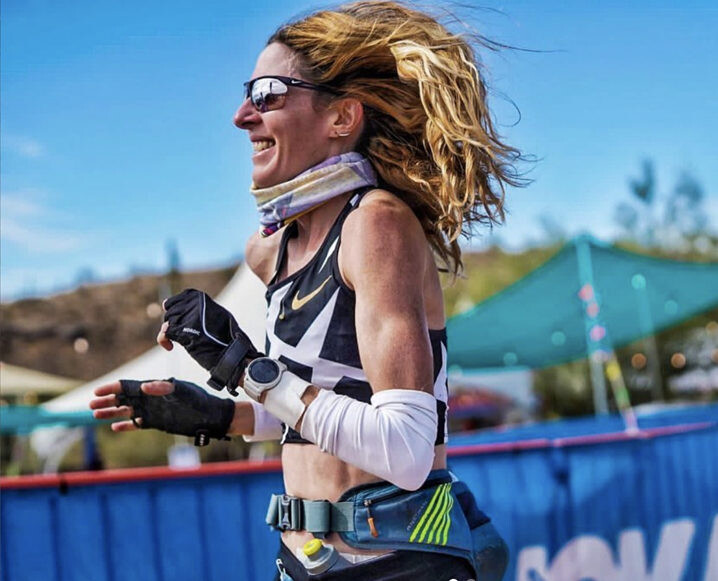
Amid the many congratulations posted in her Instagram feed, Herron was asked if Saturday’s race will be her final long run before Western States, which kicks off in California’s Olympic Valley on June 24. “Yep,” she replied, “ready to roll.”
A “roll” is exactly what Herron has been on at events large and small in 2023. The runner, who has set world records in 50-mile, 100-mile, 100-kilometer, 12-hour and 24-hour events, set the 48-hour women’s world record in Canberra, Australia in March by running 435.336km. If she’s to add to her impressive string of ultrarunning records at this year’s Western States, Herron will have to best the 16:47:19 run by Vancouver’s Ellie Greenwood in 2012. Herron cracked the top 10 in the women’s field at last year’s Western States, running 18:51:54 to place eighth.
Looking beyond Western States, Herron will be among 10 women athletes to compete in Lululemon’s recently announced Further six-day ultramarathon next March.
She noted she’ll also need to fit hanging a birdfeeder into her busy schedule, and that she’s curious to see who flocks to her newest racing trophy. “Can’t wait to see who becomes our new neighbor.”
(06/06/2023) ⚡AMPby Paul Baswick
Western States 100
The Western States ® 100-Mile Endurance Run is the world’s oldest and most prestigious 100-mile trail race. Starting in Squaw Valley, California near the site of the 1960 Winter Olympics and ending 100.2 miles later in Auburn, California, Western States, in the decades since its inception in 1974, has come to represent one of the ultimate endurance tests in the...
more...Los Angeles Marathon champion Stacy Jepkemoi Ndiwa will be seeking another title on American soil when she lines up at the 2023 Boston 10km
Stacy Jepkemoi Ndiwa the former Commonwealth Games 10,000m silver medalist, who is also the winner of the second edition of the Iten 15km Road race, said she will be returning to the United States for the title set for June 25th.
However, prior to the Boston event, Ndiwa plans to compete at the National Police Service track and field championships set for this Wednesday at the Moi Stadium as part of her build-up.
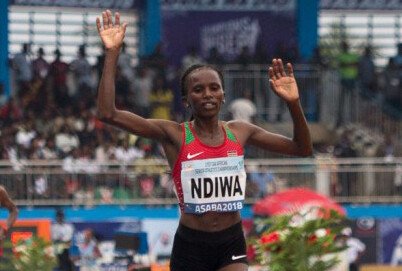
She will also feature in the national trials for the World Championships in Budapest, Hungary.
“I have a very busy schedule this year and I need to accomplish it well by not just participating but also posting better results. This Wednesday, I will be competing in the 10,000m during the National Police Service Championships as part of my endurance for the Boston 10km race,” said Ndiwa.
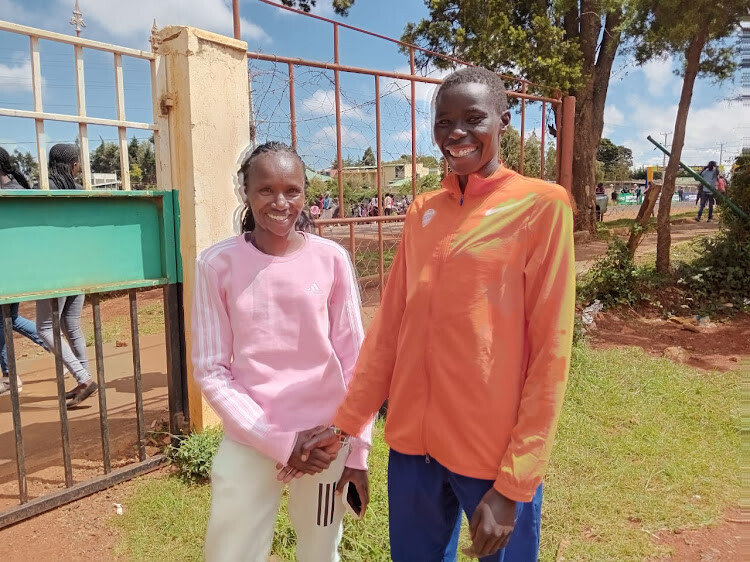
Ndiwa, who trains in Iten said she will travel to Nairobi today; rest on Tuesday, and then compete on Wednesday. "I want to make the Police team ahead of the National Trials next month. I want to represent this country in Budapest."
The Mt Elgon-born athlete said after Kasarani on Wednesday, she will embark on her journey for the Boston race.
“Immediately after the Police championships, I will embark on a journey for the Boston race. I want to run well on American soil. I will only have two weeks of recovery and training for the race. But that little training time will not deter my mission because I am emotionally and physically prepared for the battle come June 25,” she added.
The race has been dominated by Kenyans with Fancy Chemutai having won the 2019 edition. The 2020 and 2021 editions were not held due to the coronavirus.
(06/06/2023) ⚡AMPby Emmanuel Sabuni
B.A.A. 10K
The 6.2-mile course is a scenic tour through Boston's Back Bay. Notable neighborhoods and attractions include the legendary Bull and Finch Pub, after which the television series "Cheers" was developed, the campus of Boston University, and trendy Kenmore Square. ...
more...Sifan Hassan dazzles on the track in her season opener
Six weeks after winning the London Marathon, Sifan Hassan returned to action on the track in dazzling fashion at the FBK Games in Hengelo, Netherlands. On Saturday, Hassan won the women’s 10,000m, clocking the seventh-fastest time in history and a world lead of 29:37.80. She followed up her 10,000m win with a 3:58.12 in the women’s 1,500m, dropping the field over the final lap to win with ease.
In a post-race interview, Hassan told reporters that she entered the two races to see where she was at, two months out from the 2023 World Athletics Championships in Budapest. Hassan confirmed after her historic win in London that she is now shifting her focus to the track for the world championships, but said she plans to race another marathon in the U.S. (Chicago or New York), possibly as soon as this fall.
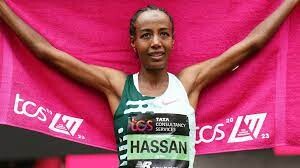
“I had the marathon just six weeks ago, and for me, the change was very hard,” said Hassan. “I am happy with my performance.” Her times for both distances are inside of the 2023 World Championships qualifying standards.
This isn’t the first time Hassan has demonstrated her extraordinary range over a short period. At the 2020 Tokyo Olympics, Hassan attempted the distance trifecta, winning gold in the 5,000m and the 10,000m but falling short in the 1,500m, taking bronze behind Faith Kipyegon and Laura Muir.
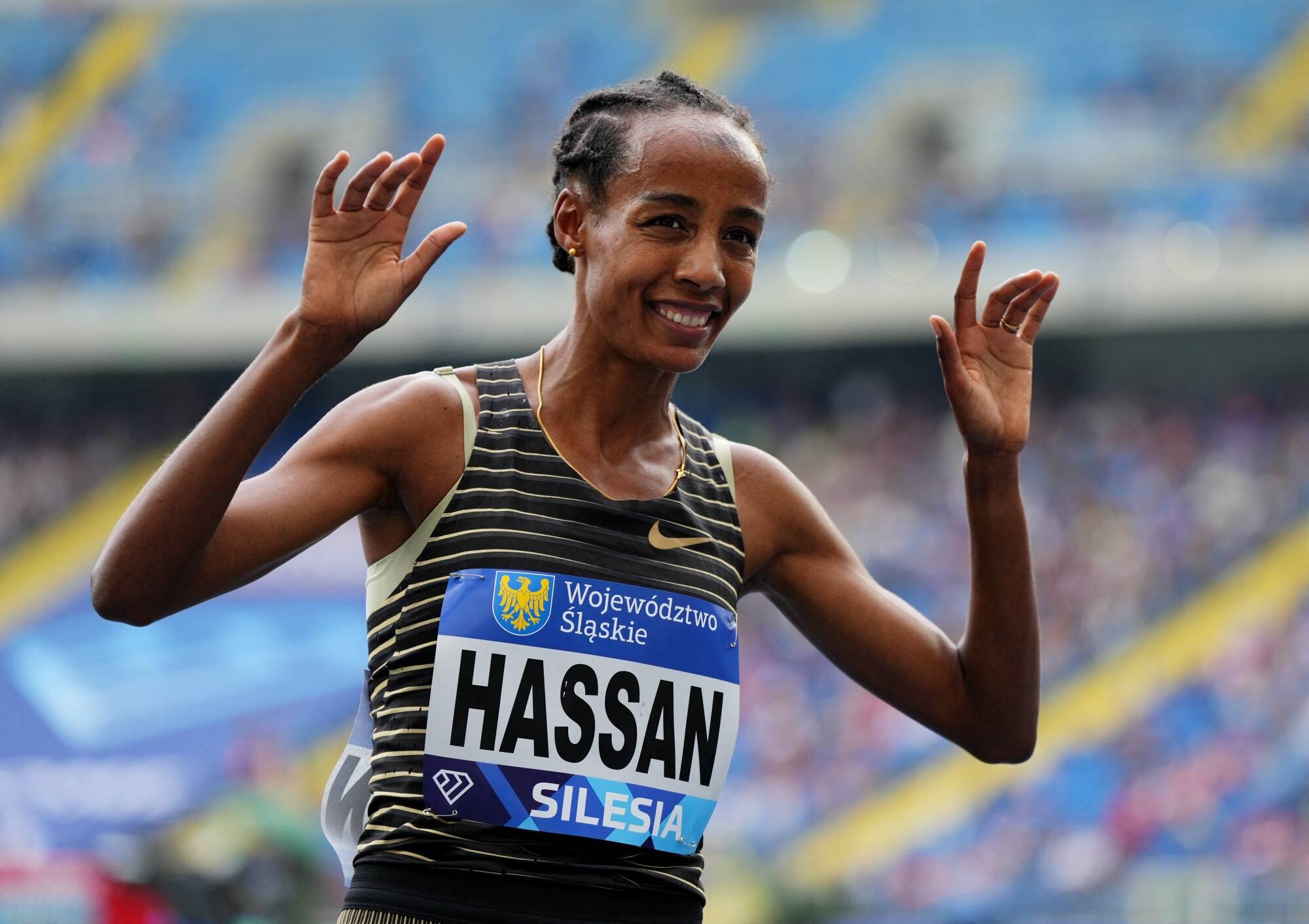
by Marley Dickinson
First runner to break 10 seconds for the 100m has died at age 76
American sprinter and 1968 Olympic gold medalist Jim Hines died Saturday, according to a news release from World Athletics, the international federation that oversees track and field. He was 76.
The news release did not specify the cause or manner of his death.
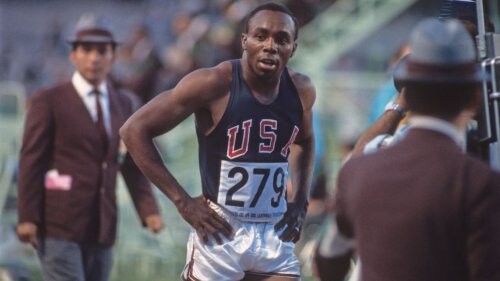
Born in Arkansas and raised in California, Hines is best known as the first man to break the 10-second barrier in the 100-meter dash with electronic timing.
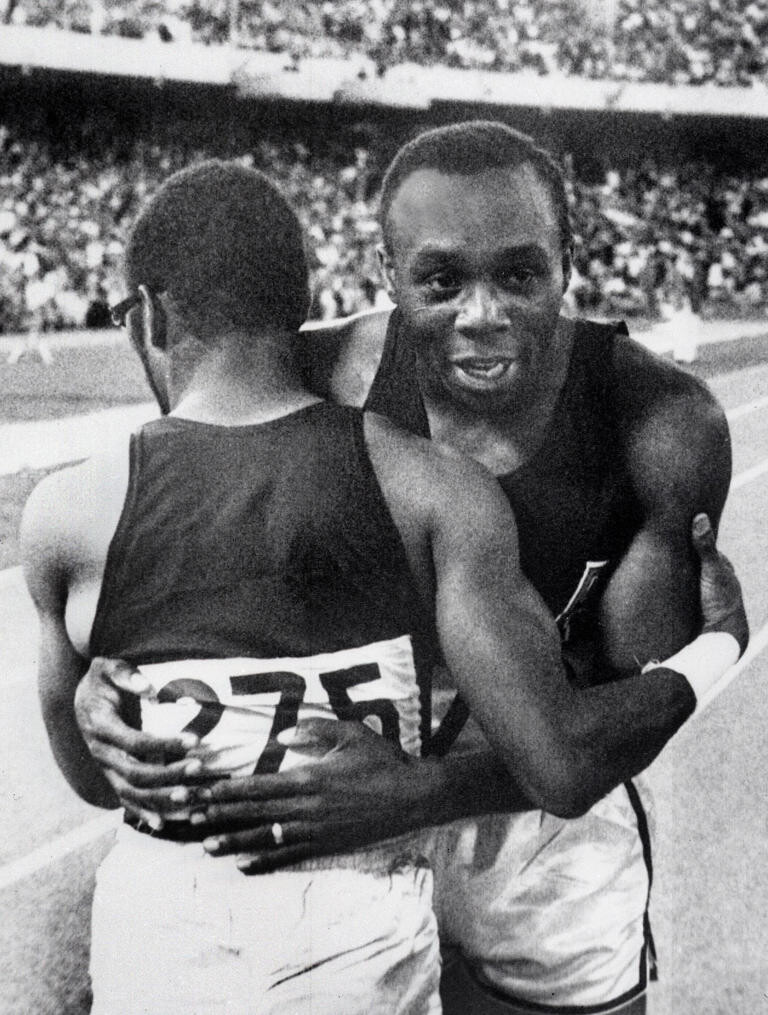
According to World Athletics, he recorded a hand-timed 9.9 at the 1968 U.S. Championships but it was adjusted, with electronic timing, to 10.03. A few months later, at the 1968 Summer Olympics, he ran an electronically-timed 9.95 – winning gold and setting a new world record that stood for 15 years.
Hines' performance was one of several world records set at the 1968 Games, which were held in Mexico City at more than 7,000 feet above sea level. Those Olympics are perhaps best remembered for the on-podium protests of John Carlos and Tommie Smith, who raised black-gloved fists after winning medals in the 200-meter dash.
After winning Olympic gold, Hines went on to have a brief foray in the NFL. He was drafted by the Miami Dolphins in the sixth round in hopes that his track speed would translate to football, but he ultimately lasted only parts of two seasons in the league. He recorded only one rushing attempt, returned one kickoff and caught two passes for 23 yards.
(06/05/2023) ⚡AMPCaster Semenya: ‘My life has had its struggles, but it has mostly been joy’ she reveals in new book
Banned from competing in the sport she loved and trained her whole life for, Olympic and World champion Caster Semenya is finally ready to share the vivid and heart-breaking story of how the world came to know her name.
Thrust into the spotlight at just eighteen years old after winning the Berlin World Championships in 2009, Caster’s win was quickly overshadowed by criticism and speculation about her body, and she quickly became the centre of a debate which continues today about gender in sports, and the right to compete as you are.Told with captivating speed, immediate candour and the spirit of defiance, The Race to Be Myself is the journey of Caster’s years as an athlete in the public eye, and her private life behind closed doors. From her rural beginnings running free in the dust, to crushing her opponents in record time on the track; to the falsehoods spread about her by the press and sporting bodies, the legal trial she went through in order to compete, and the humiliation she has been forced to endure publicly and privately.

It is a searing testimony for anyone who has been forced to stop doing what they love, and deserves to run free.
“My life has had its struggles, but it has mostly been a joy. Through my example, I want to educate, enlighten, and inform about how the world can welcome those born different. You may have heard some of my story over the years, and you might have seen me running or standing proudly on the podium at the Olympics. But there is still so much I need to relate about strength, courage, love, resilience, and being true to who you are. I want this book to show people around the world how to do just that,” says Semenya.
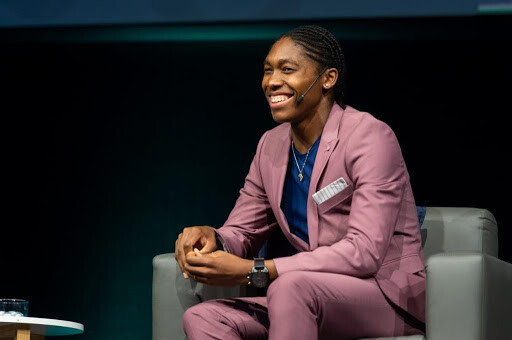
Senior Commissioning Editor at #Merky Books, Lemara Lindsay-Prince said: “I’ve always admired Caster Semenya’s journey as an extraordinary athlete and iconic activist, incredible pioneer and unfortunate pariah.
“Her fight to run as she is a race for respect, justice and ultimately everyone who has ever been told no and prevented from doing the thing they love. This book is her setting the record straight and owning her entire story. It’s unflinching in its honesty. Empowering in its tone, and captures the full scope of her life – from a little girl running in the dust, to a record breaking athlete running to be free. The Race to Be Myself is a must read!”
(06/05/2023) ⚡AMP
2024 Boston Marathon entry standards are out
On Monday, the Boston Athletic Association (B.A.A.) announced the entry standards and registration window for the 128th Boston Marathon presented by Bank of America, which is set to take place on Monday, April 15, 2024. The world’s most prestigious marathon will host its traditional field size of 30,000 participants.
The registration period will span five days, from Sept. 11 to 15, 2023. Registration will open on Monday, Sept. 11 at 10 a.m. E.T. and close on Friday, Sept. 15, 2023, at 5 p.m. E.T. The registration process will follow the same format used for the previous three races, allowing qualified runners with valid Boston Marathon qualifying times to submit their applications during the designated registration week.
The qualifying standards for the 128th Boston Marathon will remain the same as those for the 2023 edition. Participants who have achieved their qualifying times can submit their applications during the registration window. This will also be the second year the marathon features non-binary qualifying standards.
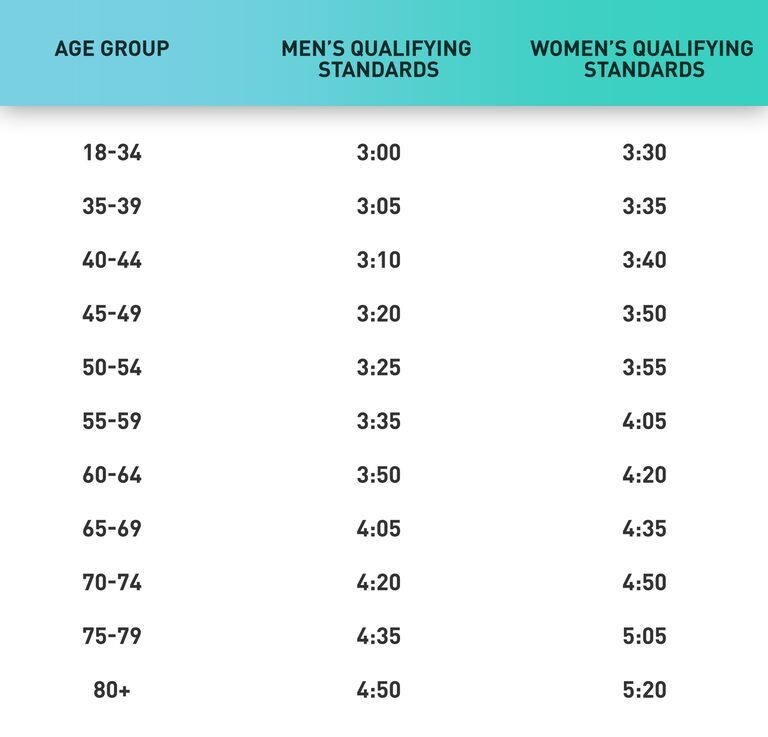
However, meeting the qualifying standard does not guarantee acceptance into the marathon. Selections will be based on the fastest applicants within each age and gender group. In the last two editions of the race, there have been no cut-off times inside the qualification standards.
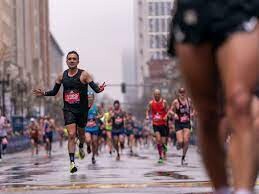
Those wanting to run the marathon must use a marathon time from the qualifying window of Sept. 1, 2022 to Sept. 15, 2023.
Additionally, athletes with active finisher streaks of 10 or more consecutive Boston Marathons will receive early registration between Aug. 28 and Sept. 1, 2023. Further details regarding this exclusive registration period will be communicated to eligible participants in the coming months.
If space remains available after the registration period, it will re-open to the public on Monday, Sept. 17, until the race is full.
(06/05/2023) ⚡AMPby Marley Dickinson
Boston Marathon
Among the nation’s oldest athletic clubs, the B.A.A. was established in 1887, and, in 1896, more than half of the U.S. Olympic Team at the first modern games was composed of B.A.A. club members. The Olympic Games provided the inspiration for the first Boston Marathon, which culminated the B.A.A. Games on April 19, 1897. John J. McDermott emerged from a...
more...About 25 athletes disqualified from Comrades Marathon
At least 25 athletes have been disqualified from the upcoming Comrades Marathon for submitting false information.
Comrades Marathon Association (CMA) director Rowyn James said the athletes would be suspended from entering the 2024 and 2025 races as a sanction.
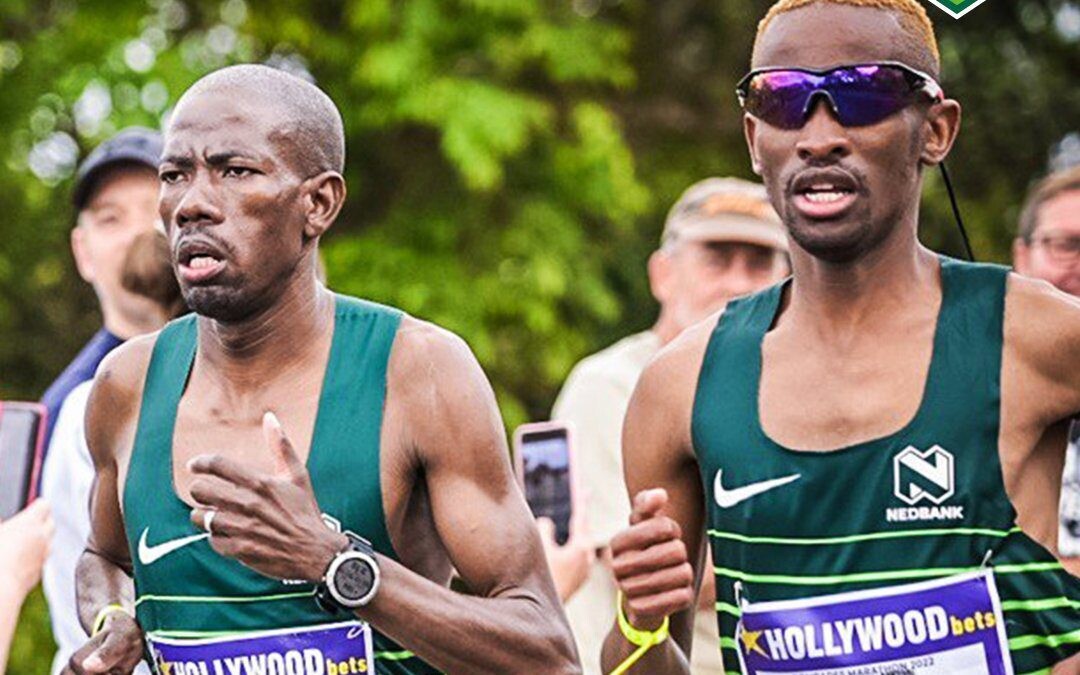
“They have been disqualified from this Sunday’s 96thComrades Marathon after it was found that they had supplied false qualifying information,” said James.
James said the cheating runners are tarnishing the reputation of the sport.
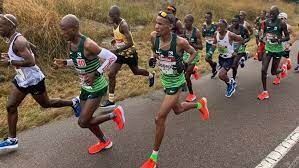
“Runners found to have been cheating in any way – be it via submitting false qualifying details or in the race itself – are tarnishing the reputation of the sport and the Comrades Marathon, as well as disrespecting fellow athletes,” he said.
In this light the CMA has announced the suspension of these 25 entrants who are members of various clubs, including Phuma KZN AC, Protea Striders, Save Orion AC, Sasolburg AC, Celtic Harriers, Chillie Running Club CG, Chiltern AC, Collegians Harriers, Diepkloof AC, Irene Athletics Club, Jozi X Training, Run Walk For Life NWN, Run Zone AC, SAPG AC, Sunward Striders AC, Team Vitality Club KZN, Thorn Tree Striders, Top Runner AC and Woodview AC.
“These transgressors will not be permitted to participate in the 2023 Comrades Marathon and the CMA has also notified the respective athletes and their running clubs management of the disqualifications.
“It is incumbent upon every athlete to honor the ethical code and ethos of the sport. We promote fair sport and to this end are continuing with investigations into other alleged transgressors, the outcome of which will be announced in due course,” he explained.
(06/05/2023) ⚡AMPby Koena Mashale
Comrades Marathon
Arguably the greatest ultra marathon in the world where athletes come from all over the world to combine muscle and mental strength to conquer the approx 90kilometers between the cities of Pietermaritzburg and Durban, the event owes its beginnings to the vision of one man, World War I veteran Vic Clapham. A soldier, a dreamer, who had campaigned in East...
more...Sound to Narrows celebrates 50 years
On Saturday, June 10, thousands of community members will turn out for the 50th annual Sound to Narrows run in Tacoma. This year’s event returns to Vassault Park after two years of being a virtual-only run and includes something for everyone, from the state’s oldest 12K run for all ages to a 20-yard diaper dash for kids.
“For 50 years, Sound to Narrows has been a treasured community event that MultiCare has been proud to support,” said Florence Chang, president of MultiCare. “Being able to celebrate this milestone anniversary with an in-person event makes this year extra special, and so many of us at MultiCare — including myself — are looking forward to being there on race day.”
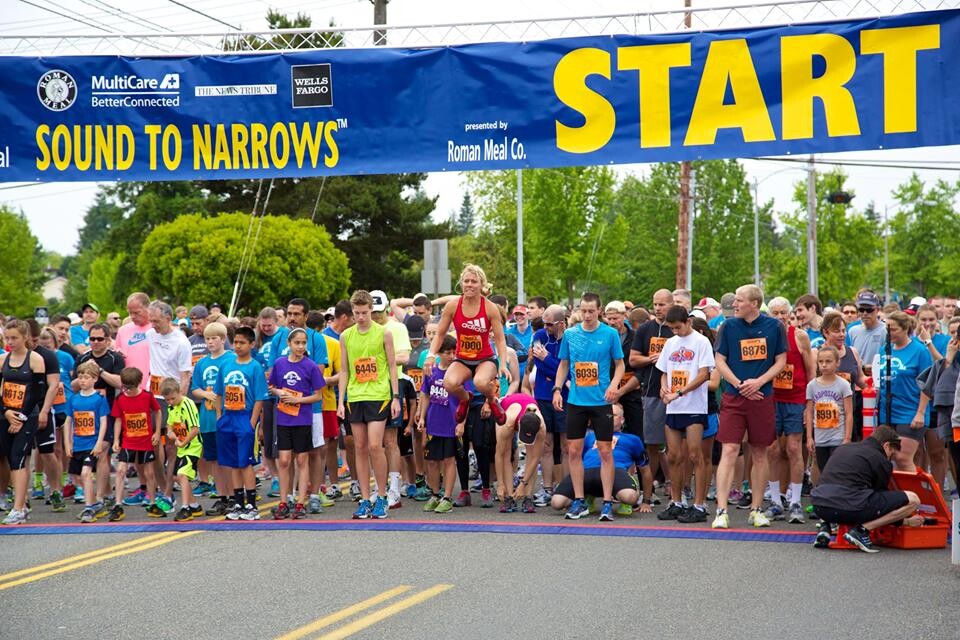
All proceeds from Sound to Narrows will benefit MultiCare Academy for Students in Healthcare (M.A.S.H.) Camp. Formerly known as Nurse Camp, this free, five-day camp introduces local high school students to careers in health care. Students join medical professionals from various disciplines for a first-hand look at the multifaceted world of health care.
Registration starts at $45 for adults and $10 for children participating in the in-person 12K or 5K, and includes a collectable 50th anniversary t-shirt, runner’s bib and Sound to Narrows medal. Entry for students participating in the Fit for Sound to Narrows 2K is $5. There will be a virtual option again this year, for those who want to participate but don’t feel ready for a large, in-person event. The registration fee for the virtual run is $30 and includes bib number, t-shirt and finisher medal.

Check-in starts at 6:30 a.m. at North Vassault and 37th Street in Tacoma, with rolling start times for each event beginning with the 12K walk at 7:30 a.m. The awards ceremony will take place at 9:45 a.m. Runners participating in the event virtually will not be eligible for awards.
Whether it’s the signature 12K route with challenging hills and spectacular water views or the fast and flatter 5k route, Sound to Narrows aims to make physical fitness inclusive for the greater Puget Sound community.
Sound to Narrows is sponsored by Pacific Source Health Plans, TRA Medical Imaging, Olympic Sports & Spine, Tacoma Rainiers, South Sound Running and Tacoma Public Utilities. For more information and to register, visit soundtonarrows.org.
(06/05/2023) ⚡AMPSound to Narrows
Washington State's Oldest 12k. The Sound Narrows is the South Sound's kick-off to summer. Choose from the state's oldest 12k, or our fast and challenging 5k routes. After your race, enjoy a slew of vendors, fun bands, and camaraderie with fellow participants. ...
more...At 69, Bobby Kersee is track's 'mad scientist' and as influential as ever
Four years ago, the man associated with speed more than any track and field coach in the world felt himself slowing down, and he did not know why.
Since he was born in Panama in 1954 to a Panamanian mother and U.S. Navy father, Bobby Kersee has always been restless, a self-described wanderer with energy that matched his athletes. But in 2019, feeling unusually sapped, he called his doctor in St. Louis. Blood tests produced results dangerously far beyond the norm. Pancreatitis kept him stuck in a hospital for four weeks.
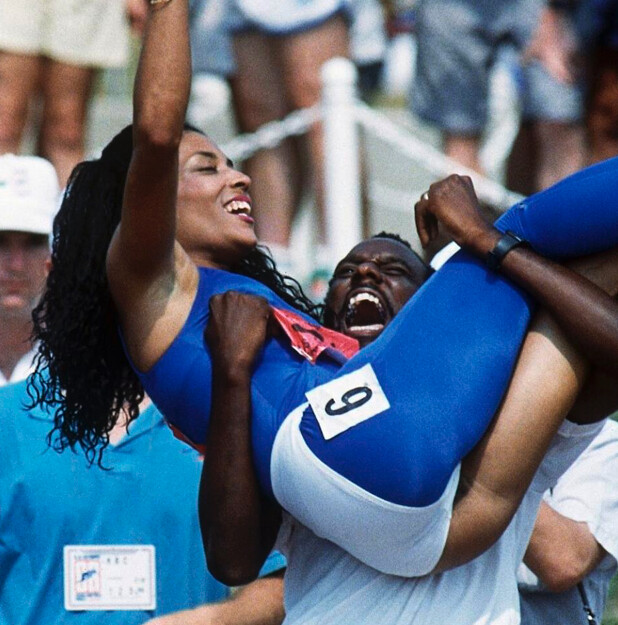
Once discharged, Kersee gave up red meat and alcohol.
What he would not quit was track.
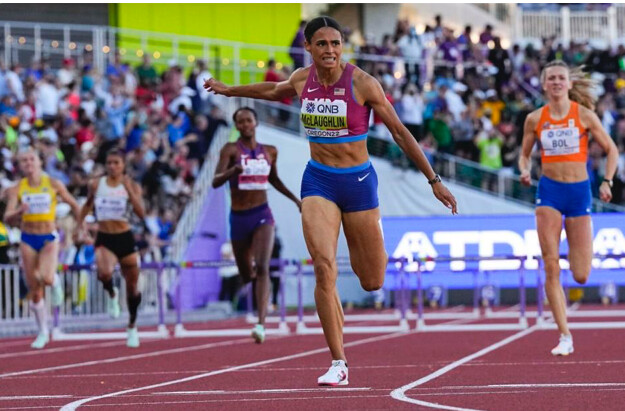
Forty years after coaching his first world champion Kersee, now 69, paced relentlessly for four hours on Thursday while watching his training group at West Los Angeles College.
“Everyone kind of says the same thing: You know, he's different in terms of he's basically a mad scientist,” said Athing Mu, the 20-year-old reigning Olympic and world champion at 800 meters who switched to Kersee’s coaching in September to expand her range. “He knows what he's doing.”
Under cloudy skies at the track high above Culver City, nine athletes in his training group, dubbed Formula Kersee, ran tailored workouts and waited for his every word, from the barked “let’s go!” to commands about mechanics he hollered to athletes mid-run. He lifted hurdles, held court with reporters and stopped only to film block starts with his iPhone.
At an age when he might have become anachronistic, Kersee and his methods still represent sprinting’s gold standard, associates and athletes say. Invigorated by a training group that describes itself as a family and could be dominant into the next decade behind headliners Mu and 23-year-old 400-meter hurdles world champion and world record-holder Sydney McLaughlin-Levrone, Kersee said his career has no discernible finish line.
His coaching, primarily of sprinters and hurdlers, has brought his athletes at least one gold medal in 10 consecutive Summer Olympics, a litany of world championships and world records and, for Kersee, veneration, criticism and influence.
As the first professional meet held at UCLA’s Drake Stadium since 1990, and a key early tentpole in USA Track & Field’s attempted plan to grow its U.S. fanbase before the 2028 L.A. Olympics, this weekend’s Los Angeles Grand Prix is both a callback to a time when track’s popularity soared and, its organizers hope, a harbinger such times can return.
Outside of Sebastian Coe, the 1984 Olympic gold medalist in the 1,500 who has since ascended to lead track’s global governing body, World Athletics, few figures have spanned both eras as prominently as Kersee.
Athletes and associates credit his ability to turn seemingly outlandish goals and times into tangible results to an ability to know what they need. Malachi Davis, who has overseen McLaughlin-Levrone’s training since she turned professional, likened Kersee to a conductor, his whistle and yellow stopwatch replacing a baton to direct “a beautiful dance of confidence and knowledge.”
Many coaches can teach how to run fast and build a race plan, McLaughlin-Levrone said, but Kersee understands “how to break it down piece by piece.”
Robert Forster, a Santa Monica-based physical therapist who has worked with Kersee’s athletes since 1983, said Kersee understands the “work-rest ratio” better than any coach, and does not overtrain where other coaches might double down on mileage. Forster has seen Kersee send an athlete home to rest just from the look on their face, and likes to tell a story about the 2016 Olympics, that Kersee later confirmed. Allyson Felix, the Los Angeles native who under Kersee became the most decorated athlete in track’s history, was nursing a severely sprained ankle and the physical therapist told Kersee it needed to be iced 20 minutes every hour. Forster did not expect, however, that Kersee would stay up the entire next night icing the ankle as Felix slept.
Kersee was an early adopter of technology, upgrading his video cameras at a Westwood electronics store years before he could film block starts of sprinters Jenna Prandini and Morolake Akinosun on his iPhone and zip the footage to an iPad on the infield of the West L.A. track.
Yet the Kersee mystique has endured as much because of his grasp on psychology as biomechanics — feeling for when to push and when to pull back.
Brandon Miller, a top 800-meter hopeful who began working with Kersee in September, has heard other athletes describe Kersee as “crazy.” He disputes that characterization, but noted that Kersee knows to stoke his competitiveness entering a workout’s final repetition with four words: “OK, what you got?”
“I've never met any coach like him,” Mu said. “He's not going to make you do anything that's for his sake. You know, it's gonna be all for you and the benefit of you and your career. And so, I come in here, I knew that he was very intentional, and that's something I needed, especially if I want my career to be long.”
Raised by a grandmother as an “A-train baby” bouncing between the Bronx and Queens, Kersee lost his mother, Daphne, when he was 14, before moving to San Pedro for high school.
He put himself through college at Long Beach State by working at a youth correctional facility in Whittier, where Kersee watched wards from midnight until 8 a.m. After graduating, he had two jobs: Track coach at Cal State Northridge, and counselor at another youth facility in Chino. He took over UCLA’s track and field program in 1980 and that provided enough money to be comfortable. Coaching Greg Foster to his first world championship in 1983, and watching his athletes win six golds and four silvers at the Los Angeles Olympics one year later, provided the final confidence he could sustain coaching as a career.
But he did not leave behind the edge required to do his former jobs.
“I used to work in the prisons, so you can’t walk into the prisons being Mother Teresa,” he said. “And then I did find myself carrying a little bit too much of that to the track. I had to calm myself down and say, 'Wait a minute, you’re not working with a warden.'”
Once, an elderly woman approached Kersee in an airport in Indiana and told him she did not like what she had seen from Kersee or the other famed coach with the B.K. initials: Bobby Knight. He did not belittle his athletes, he said, but he also didn’t leave room for interpretation about who ran the workout. The edge created a mystique that “he's crazy,” Miller said. “But he's not. I feel like everybody has preconceptions of everybody but you won't really know unless you're there and you're with them every day.”
Just as when he built his vaunted World Class Athletic Club in the 1980s, he will only train those he can coach hard and have chemistry. His athletes typically train Monday, Tuesday, Thursday and Friday. He treats Monday Zoom calls with the group as though he is re-interviewing for the job. It’s more convenient than years before, he said, when he recalled gathering before dawn in Europe to address their complaints with him.
“I think we have that understanding that I’m going to listen and respect them,” he said. “But my job is to get the job done for them individually and collectively but you hired me. And if you hired me, let me do my job.”
That job, essentially, can be reduced to one thing: Imparting confidence in his plan. And no one does it like Kersee, said Davis, who sprinted professionally before aiding McLaughlin-Levrone.
“He's a competition coach, so the time it counts, you feel confident,” Davis said. “And your head coach is basically your general and then competition is basically war. And yes, you prepare for war but that final voice, that presence, that action, that essence, that’s Bobby. And he earned that by what he’s accomplished throughout his career.”
Kersee allows that age has softened him. As McLaughlin-Levrone recalled last August, Kersee earned her trust when he saw her overwhelmed with emotion at a 2020 practice and handed her a paper showing a wheel of emotions, saying he had trouble expressing himself, too.
Though accustomed to criticism of himself for years — he joked he would be buried in a track, and "probably as much as people hate me, they’ll put me in lane one, because I’ll be stepped on the most" — he worries about how the inundation of social media affects athletes’ mental health. He has traveled to support the singing ambitions of Formula Kersee sprinter Chloe Abbott. This spring, a smiling Kersee was featured on TikTok when his athletes remade the opening credits of the 1990s sitcom “Family Matters.”
Four decades into his career, he has “a whole lot of knowledge and a whole lot of patience,” he said. “But still, don’t let grandpa get out of the chair.”
Ato Boldon was never coached by Kersee during his sprinting career but has known him for 31 years, since they overlapped at UCLA, and has seen a “golden-hearted” side to the coach. He also described Kersee’s coaching equivalent as either Knight or San Antonio’s Gregg Popovich.
“Everybody under him wins,” said Boldon. “But it’s not necessarily a democracy.
“... As time has gone on, people are like, ‘Wow he’s so this or he’s so that, he’s so abrasive.’ Listen, do you want results, or do you not want results?”
No one argues that Kersee gets results. The most common criticism is how rarely his athletes compete en route to smashing records and claiming gold.
Among athletes, meet directors, agents and track officials who see a need for the sport’s biggest stars and strong competition to draw in casual fans, it has become a question of how to unite what is best for the top athletes’ futures with what is best for the sport’s growth. The tensions surrounding the discussion are not dissimilar from the way “load management” in the NBA has sparked concerns whether it will turn off fans from the regular season.
Because many top athletes train under Kersee, he has become a focal point. There is also his history of pulling athletes late before a meet, sometimes because of injury, and sometimes as a power play, as in 1994, when a dispute over pay led him to withdraw Gail Devers from a high-profile Los Angeles indoor meet.
The topic reignited last week when he withdrew Mu and McLaughlin-Levrone from the Grand Prix, a meet for which he serves as co-promoter. It came soon after telling Track & Field News in February that even he would like to see McLaughlin-Levrone run more often, and told The Times in March that there was no reason meets in the U.S. couldn’t draw thousands if the sport’s leaders banded together to promote strong competitions.
Asked about the balance of what is best for his athletes, or the sport, Kersee this week called it a byproduct of limited sponsorship money within the sport, which incentivizes performances at the biggest meets, which often require qualification earlier in the season. Only a handful of stars make big money and can afford to be choosy. He contrasted it with the NFL and NBA, where athletes can still earn a paycheck while resting.
“I think it’s a little tougher on our athletes to try to balance out wanting to run for the public and run for our sport and also knowing if I run too much or make one little mistake it might cost me making a team,” Kersee said. “That if I go out there and run five or six races I’m going to get to the point of, 'OK why is he running me so much and she gets injured over there, did she really need to run?'”
McLaughlin-Levrone released a statement after being pulled from the Grand Prix field that she “regrettably” would not be competing, citing her coach’s choice. It also said she trusted his judgment, which the world record-holder echoed again Thursday.
“He has a plan and he is going to work it out to perfection,” said Boldon, who will call Saturday’s meet as part of NBC’s broadcast team. “It might not benefit USATF, it might not benefit the fans, but you tell me, what moment stood out most from last summer's world championships?”
It was McLaughlin-Levrone’s stunning 50.68 time to win the 400-meter world title and lower her own world record. The run cut through the noise to make SportsCenter. It also left McLaughlin-Levrone sore for days, she said. Seeing her parents in the stands, for the first time after becoming the first woman to run under 51 seconds, she told them “that hurt, so bad.”
“We've been very calculated in when we run and I think it's yielded us great results,” McLaughlin-Levrone said. “Bobby always uses analogies and he's like, 'You don't take the Ferrari out every day for a drive. You take it out when it needs to come out and it does its things and you put it back in the garage.' So, your body can only be pushed to a certain level so much in your career.
“You only have so many races in your legs and I think we're really strategic about which ones we choose to run. Obviously I know the sport wants to see a little bit more and I think we're trying to figure out how to do that in a safe way that we can still accomplish our goals and give them something to look forward to.”
For McLaughlin-Levrone and Mu, the question is not whether they will make this summer’s world championships in Hungary, or next summer’s Paris Olympics, but which events — possibly plural — they will run.
When Kersee evaluates whether to bring an athlete into his coaching, he also looks for their potential range. He thought he lost his job coaching Felix when he told the 200-meter star during his interview that he would have her run the 400.
Mu and McLaughlin-Levrone’s youth and potential range is one of the sport’s most speculative discussions; news about their upcoming races create instant headlines. The duo are “two of maybe the most talented athletes he’s ever had,” Boldon said.
Their world championships last summer gave McLaughlin-Levrone an automatic berth into the upcoming world 400-hurdle field, and Mu an entry into the 800. With that secured, Kersee has focused on running McLaughlin-Levrone in the open 400 meters, where Marita Koch’s world record of 47.60 has been effectively unapproachable for 38 years — only four women have run even faster than 49 seconds in the past 20 years. She once thought 47.60 was “impossible.” Not anymore.
“It's a very daunting number to look at, I'll tell you that,” McLaughlin-Levrone said. “But at the end of the day, I think if we can take the 400 hurdles to 50.6, I think 47.6 isn't too far off.”
In addition to her 800-meter world title, Mu once owned the collegiate 400-meter record and ran on the U.S. 4x400-meter relay team that won Olympic gold in Tokyo.
“I'm still super young and I have not touched the surface of a lot of things yet,” Mu said. “But I do have visions, which is like really big goals of competing in obviously the Olympics again, and then worlds and hopefully, doubling up.”
Would that mean the 800 and 400, or the 800 and 1,500?
“Hopefully both,” she said. “I mean, I would love to have a chance to do 4/8 and then go ahead and do the 8/15 at some point.”
Maybe this explains why Kersee moved so quickly across the track during practice. There was no sign he had once slowed down.
“I’m glad,” he said, “I have that Energizer Bunny still in me.”
This story originally appeared in Los Angeles Times.
(06/04/2023) ⚡AMPLululemon launching six-day ultramarathon for women in 2024
Lululemon will launch a six-day ultramarathon next year–a step into new territory for the athleticwear brand that it says is aimed at promoting and better understanding the potential of women in endurance sports.
The company says the Further six-day ultra will kick off on March 8—International Women’s Day—on a certified looped course at a location to be announced. Ten athletes are slated to compete in the event: Camille Herron, Devon Yanko, Kayla Jeter, Leah Yingling, Mirna Valerio, Montana Farrah-Seaton, Stefanie Flippin, Vriko Kwok, Xiaomeng Jia and Yoon Young Kang.
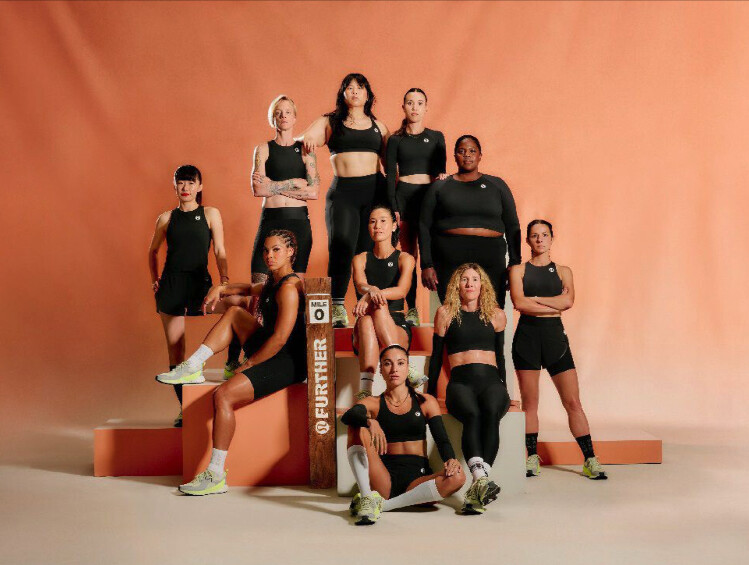
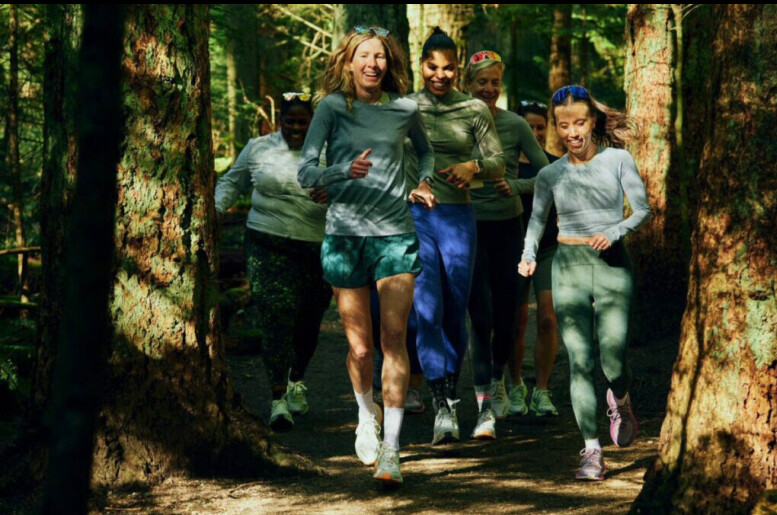
“Women are continuing to redefine what’s possible,” says Herron, the American ultrarunner who set the 48-hour women’s world record in Canberra, Australia in March by running 435.336km. “It’s important we have the platform and opportunities to showcase what we’re capable of. Further represents this to me. I’m honoured to join this phenomenal group of athletes, elevate women’s running and celebrate our human potential.”
The multi-day event will give the runners the chance to run the furthest distance of their careers with the opportunity to set world records, says the company.
Lululemon says it will be partnering with Canadian Sport Institute Pacific to conduct research studies on athletes during training and the ultramarathon itself to better understand female endurance performance and human endurance performance in general. Each athlete will have access to sport science and medicine support to inform personalized training programs spanning physical, mental and emotional support. Findings from the research are expected to be published at the beginning of March.
“Women are continuously setting new ultramarathon records, with the difference between male and female performance appearing to get smaller the further humans run,” says Trent Stellingwerf, senior adviser of innovation and research at Canadian Sport Institute Pacific. “However, there is limited research in this space, which creates a biased understanding of human endurance as women are heavily under-represented in sports science.”
Lululemon cites an an audit of select sports science and sports medicine journals that found only four to 13 per cent of published studies were female-only. The new research is intended to address the “limited knowledge around female athletes while bringing awareness to the need for additional research,” says the company.
“Women are historically underserved when it comes to opportunities to compete, research devoted to the pursuit of their goals, and product innovations built with them in mind, yet they continue to push the boundaries of human possibility in sport regardless of the inequities they face,” says Nikki Neuburger, Lululemon’s chief brand officer. “Further is grounded in our purpose at lululemon to unlock greater possibility and well being for all, and we see it as an opportunity to better serve women, solving for their specific unmet needs. With Further, we aim to inspire belief in what is possible for women when they’re supported with resources typically reserved for men.
Canadian multi-day ultramarathoning pioneer Trishul Cherns tells Canadian Running that while organizing a multi-day race may seem to some as unusual territory for Lululemon, he sees many positives in the Further project.
“From my perspective, it puts the spotlight on something close to my heart, multi-day running. The goal of the Global Organization of Multi-Day Ultramarathoners (GOMU) is to make multi-day running mainstream,” says Cherns, who adds the Further project “puts a spotlight on women in multi-day running. Ultramarathons are not just 100 mile trail runs; they are diverse–10-day, 1,000-mile, 3,100-mile races on tracks on roads—just like the group of women that make up this project.”
He applauds Lululemon’s effort to invest more resources and attention to women’s sports. “Their focus is on data capture to further sports science and research on women’s endurance. Brava!” says Cherns. “It’s very true that women are sorely under-represented in the research data and the science of female performance is marginalized or non-existent … Only recently has the discussion of women’s menstrual cycles on sports performance even been openly talked about by women athletes, let alone the subject of serious study.”
Along with its announcement of the Further multi-day ultramarathon, Lululemon unveiled the Blissfeel Trail, the company’s first road-to-trail running shoe. The company says the insights it gains from the Further project will help the company expand on products designed to support women as they go further on their runs.
(06/04/2023) ⚡AMPby Running Magazine
Unexpected ways bib pins can hold your race together
Safety pins might just be the most overlooked, but essential, bit of running gear on race day. Woefully neglected—I can’t count the number of times I’ve slapped myself on the forehead with an “I forgot pins!” on my way home from a race expo—bib pins do the heavy lifting for our paper-mounted timing chips as well as helping draw the line between the rule-abiding runner and the unbibbed “bandit.”
For trail runners, these sharp and shiny unsung heroes are particularly precious, as I was reminded last weekend during my attempt at running 100 miles at the Sulphur Springs Trail Race in Ancaster, Ont. I only made it 100 km, but my race would have ended much sooner had I not used my bib pins in unintended ways when things started to fall apart. Here are a few ways bib pins have come to my rescue that may be helpful to keep in mind when you have to MacGyver your way out of trouble on the trails.


Emergency repairs
For my third 20-km loop at Sulphur Springs, I switched from shoes to sandals, as my feet have a tendency to puff up like bread in the oven. Seven kilometres into the loop, the whatchamacallit that kept the straps of my left sandal connected to the sole broke off, making the sandal unwearable. I texted my wife/crew leader to meet me a bit further down the trail with my backup footwear. It was only when I saw her, after she had run 20 minutes to bring me exactly what I’d requested, that I remembered I couldn’t take the footwear from her. (Having her carry my gear is against the race rules, and would disqualify me.)
I hung my head, contemplating having to run the next 13 km barefoot, but a glimmer of light from the corner of my race bib caught my eye. Eureka! I removed the shiny bib pin, threaded my sandal strap through the hole of the sole, and fastened the safety pin to the bottom. To my surprise, the bib pin kept my sandal from unravelling for the rest of the loop. That one tiny pin took care of everything (except the apology I owe my wife for making her run all that way for nothing).
Clutch adjustments
My longest training run leading up to Sulphur Springs was 60 km. Those long runs are crucial, not just for getting your body and mind in shape, but also for testing your gear for comfort and fit. My new hydration vest passed all the quality-control tests during my training: it was snug and comfortable and its pockets gripped my water bottles firmly enough that I didn’t have to hear “squish, squish, squish” for hours on end. But on race day, at around the 75-km mark, that vest turned into an iron maiden, inflicting untold pain as it rubbed against my upper torso. I tried applying more lubricant to my chest, but it was useless, as the damage was done, and I was going through too much liquid to risk going without it. What saved the day, or at least made it bearable to continue for another 25 km, was taking two pins from my race bib and using them to cinch either side of my vest. That crucial adjustment kept my vest from rubbing against the worst hotspots.
Blister management
I haven’t had to perform an emergency blisterectomy for a while, not since I learned to throw sandals into the mix. But on my first 50-miler at Sulphur Springs some years back, my ever-swelling feet outgrew my toebox. They say you can’t make an omelette without breaking a few eggs, and sometimes the same holds true for trail runs and blisters. It’s never pretty, but using a bib pin to pop a blister can at least make continuing on your race bearable. I don’t recommend letting the pin do all the work, as it can raise the risk of infection—use a small bottle of alcohol to sterilize the pin, and bandages to keep the deflated blister tightly wrapped. This will help your feet stay as comfortable as possible.
(06/04/2023) ⚡AMPby Running Magazine
Running throughout middle age can help prevent memory decline, study shows
Sticking to a regular running regimen throughout middle age may help prevent or slow memory loss associated with getting older, according to a new study.
Scientists at universities in the United States and Mexico are adding to the growing evidence of running’s benefits to brain health with research looking specifically at the effects of regular exercise on neurons formed in early adulthood. Their findings, published in the journal eNeuro, show long-term running not only promotes the survival of these neurons, but also their integration into a network relevant to the maintenance of memory encoding during aging.

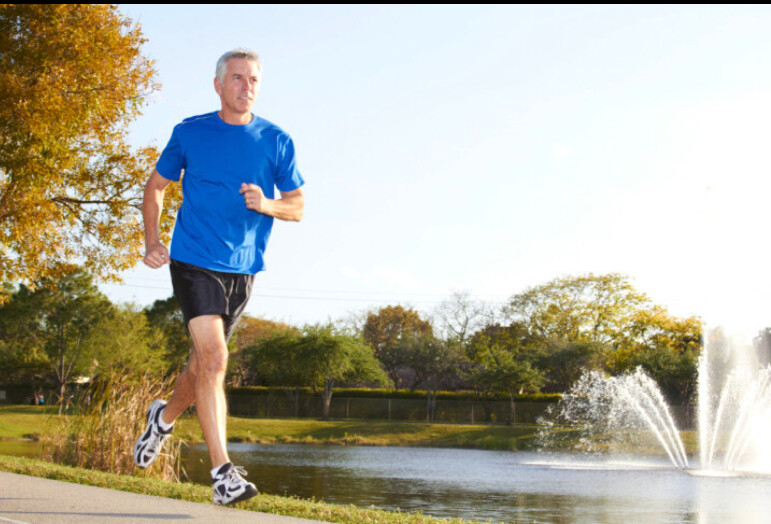
“Long-term exercise profoundly benefits the aging brain and may prevent aging-related memory function decline by increasing the survival and modifying the network of the adult-born neurons born during early adulthood, and thereby facilitating their participation in cognitive processes,” says Henriette van Praag, study co-author and associate professor of biomedical science at Florida Atlantic University.
For the study, researchers studied the brains of mice who had access to a running wheel and compared them to those of rodents that did not. Although this type of research precludes the use of human subjects—researchers used the rabies vaccine to help trace connections in the brain over a period of several months—the results of the study make clear the benefits to people of maintaining a regular fitness regimen, says study co-author Carmen Vivar of the Centro de Investigacion y de Estudios Avanzados del IPN in Mexico.
“Our study provides insight as to how chronic exercise, beginning in young adulthood and continuing throughout middle age, helps maintain memory function during aging, emphasizing the relevance of including exercise in our daily lives,” said Vivar.
“Long-term running may enhance pattern separation ability, our ability to distinguish between highly similar events and stimuli, a behaviour closely linked to adult neurogenesis, which is among the first to display deficits indicative of age-related memory decline.”
The study doesn’t offer guidance on how many kilometres or minutes runners should target to maximize their brain health. The researchers do underscore the importance of consistency, however, noting the value of maintaining daily exercise from early adulthood through middle age in bringing about the memory benefits cited in the study.
(06/04/2023) ⚡AMPby Running Magazine
How Saunas Benefit Your Brain
It’s not just hot air. These gym amenities really can bring you health rewards.
From the Huberman Lab podcast to your biohacker buddy’s garage to your social feeds, saunas are everywhere right now. Part of the surge in interest (and sales) is largely thanks to science showing a connection between frequent sauna use and better physical and mental health and maybe even longevity—including some stunning evidence that it may help prevent dementia. Not to mention the whole sauna thing: the community, the relaxation, the ritual, the ahh moment.

Most of the research on brain benefits comes from Finland, where sauna bathing is a pillar in the culture of being healthy and happy. The sauna is the poor man’s pharmacy, goes one old proverb. And increasingly, science agrees.
A few years ago, when Finnish researchers dug into some overlooked data on chronic disease risk—numbers they’d been collecting on middle-aged men since the 1980s—they noticed a startling link, says Jussi Kauhanen, M.D., Ph.D., director of public health at the University of Eastern Finland and head of the research group today.
Scientists in any other country wouldn’t have thought to include “How often do you sauna bathe?” on the lifestyle questionnaire. But in Finland, where it’s essentially as universal as diet and exercise, the question seemed only natural, Dr. Kauhanen explains.
Their results: Men who took saunas four to seven times a week had about a 65 percent lower risk of developing Alzheimer’s disease or other dementia over the next 20 years than men who did it once a week (after adjusting for other factors, like drinking and exercise). A 2020 study that tracked almost 14,000 Finnish people confirmed the earlier study’s results: Those who took saunas nine to 12 times a month had a 53 percent lower chance of dementia over the next 20 years than people who went zero to four times, and researchers have hunches about why.
How heating up helps your brain

Sitting there sweating bullets for as long as you can stand it may not look very productive, but there’s actually a lot going on in your body—including some of the same stuff that happens when you work out, Dr. Kauhanen says. Hitting the gym or the sauna lowers inflammation, believed to play a role in dementia. Both activities also trigger your body to make special proteins that promote neuroplasticity (brain-derived neurotrophic factor) and proper protein folding in the brain (heat shock proteins)—potentially warding off dementia. (FYI, ice-bath junkies: Cold plunges could have similar impacts on the brain via cold shock proteins, Dr. Kauhanen says, although there’s nowhere near the amount of evidence for this yet that there is for heat.)
Saunas may also help the brain by giving the heart a workout much like exercise does, says Christopher Chen, M.D., director of the Memory, Ageing and Cognition Centre at the National University Health System in Singapore. This not only contributes to lowering the risk of dementia but also improves how your arteries function, helps with healthy blood pressure, keeps oxygen and other nutrients flowing into your cells, and takes waste products out.
Finally, saunas are just kind of a fun place to be. Depression and social isolation are risk factors for dementia. In Finland, Dr. Kauhanen says, going to the sauna is an enjoyable and often social experience, which is linked to better psychological health over time. This type of sauna experience might be harder to get in the U. S., though, where guys avoid conversation and eye contact.
As promising as these studies may be, it’s highly unlikely that saunas are a silver bullet for dementia—but they might be one way to load a few regular bullets (like socializing or heart-health effects) into your gun, says Jason Karlawish, M.D., codirector of the Penn Memory Center at the University of Pennsylvania and author of The Problem of Alzheimer’s. There are other benefits of saunas as well, especially after working out; read more about them here.
The takeaway: If saunas make you feel good—and you’re covering your bases by maintaining generally healthy habits, especially actually working out—then you’ll likely benefit from investing time in one. Or even investing in one for your home, particularly if you want to make it part of your lifestyle.
Stay in for five to 20 minutes at a time (easier to do if you have a little ventilation), alternating with cold exposure like winter air or an ice-cold bath, so you can get back in and do it again if you choose. Start with short sessions and take a break when you need to, Dr. Kauhanen says. “Just listen to your body.”
3 Ways to Bring the Sauna Benefits Home
Infrared options don’t get nearly as hot as the 176 to 212 degrees of the typical Finnish saunas, but they still get you sweating. Traditional-style saunas hit those temps—but generally cost more.
(06/04/2023) ⚡AMPby Men’s Health


